Quick filters:
Miocene elephant Stock Photos and Images
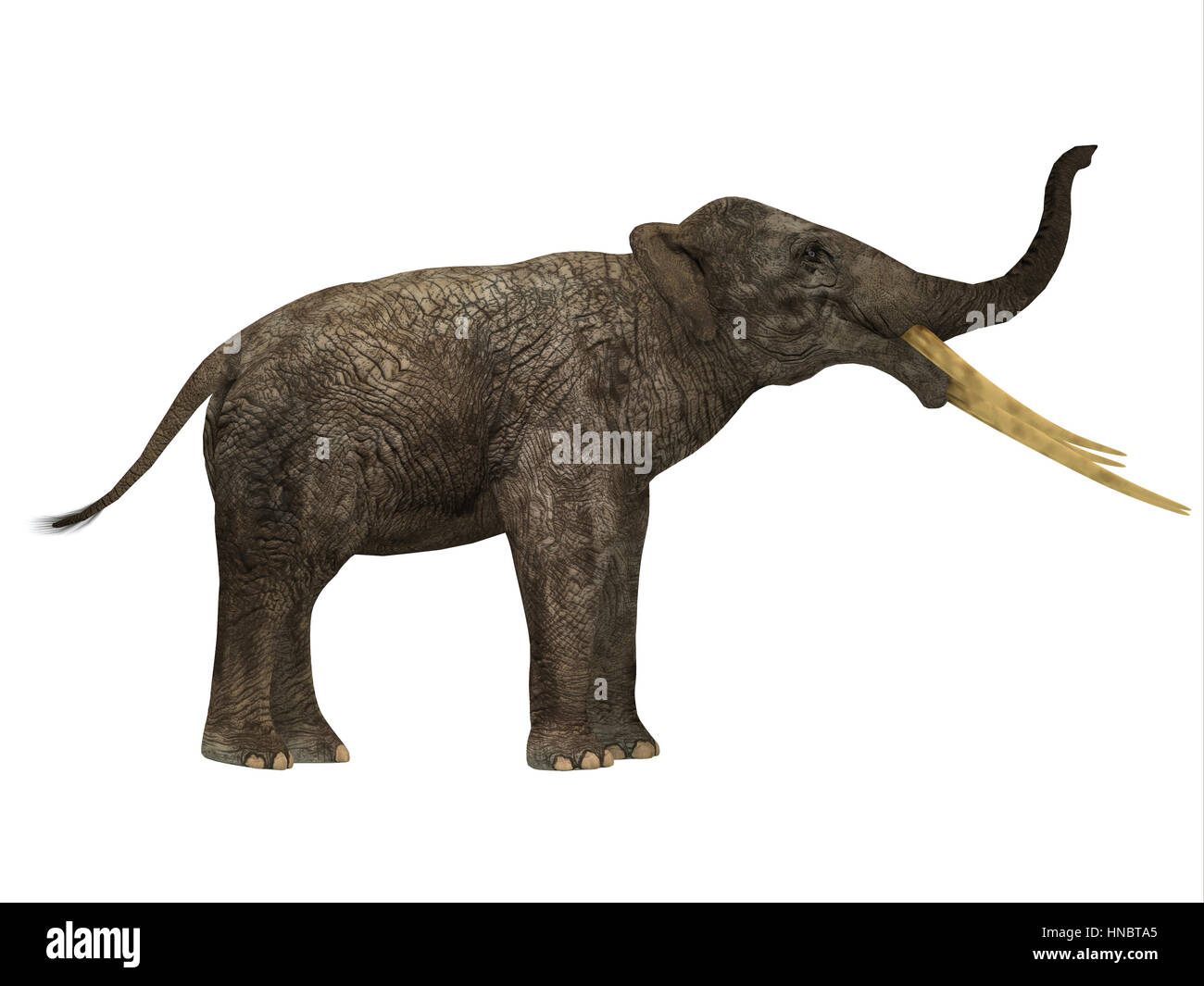 Stegotetrabelodon was an elephant that lived in the Miocene and Pliocene Periods of Africa and Eurasia. Stock Photohttps://www.alamy.com/image-license-details/?v=1https://www.alamy.com/stock-photo-stegotetrabelodon-was-an-elephant-that-lived-in-the-miocene-and-pliocene-133640925.html
Stegotetrabelodon was an elephant that lived in the Miocene and Pliocene Periods of Africa and Eurasia. Stock Photohttps://www.alamy.com/image-license-details/?v=1https://www.alamy.com/stock-photo-stegotetrabelodon-was-an-elephant-that-lived-in-the-miocene-and-pliocene-133640925.htmlRFHNBTA5–Stegotetrabelodon was an elephant that lived in the Miocene and Pliocene Periods of Africa and Eurasia.
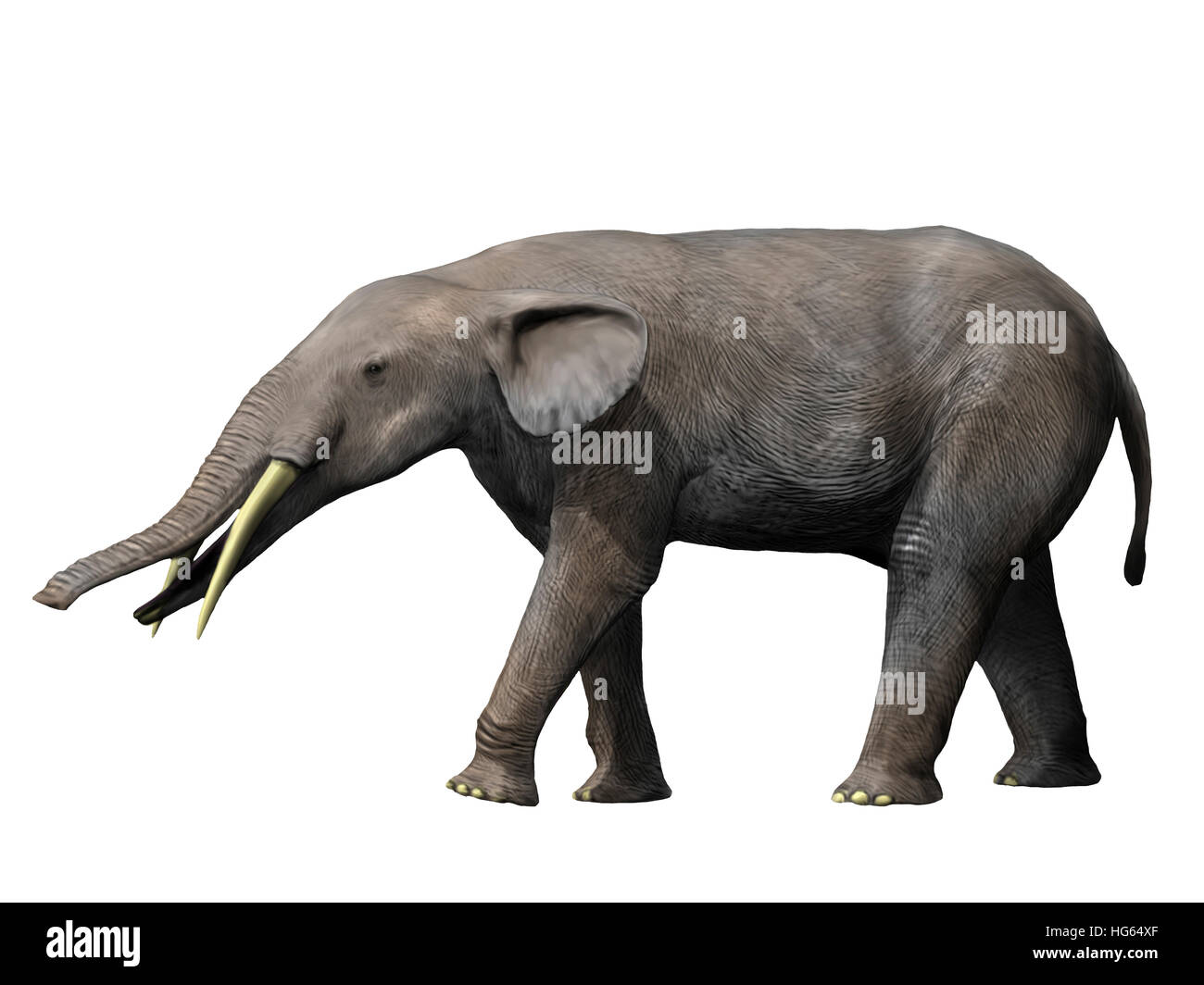 Gomphotherium angustidens from the Miocene epoch of Europe. Stock Photohttps://www.alamy.com/image-license-details/?v=1https://www.alamy.com/stock-photo-gomphotherium-angustidens-from-the-miocene-epoch-of-europe-130442663.html
Gomphotherium angustidens from the Miocene epoch of Europe. Stock Photohttps://www.alamy.com/image-license-details/?v=1https://www.alamy.com/stock-photo-gomphotherium-angustidens-from-the-miocene-epoch-of-europe-130442663.htmlRFHG64XF–Gomphotherium angustidens from the Miocene epoch of Europe.
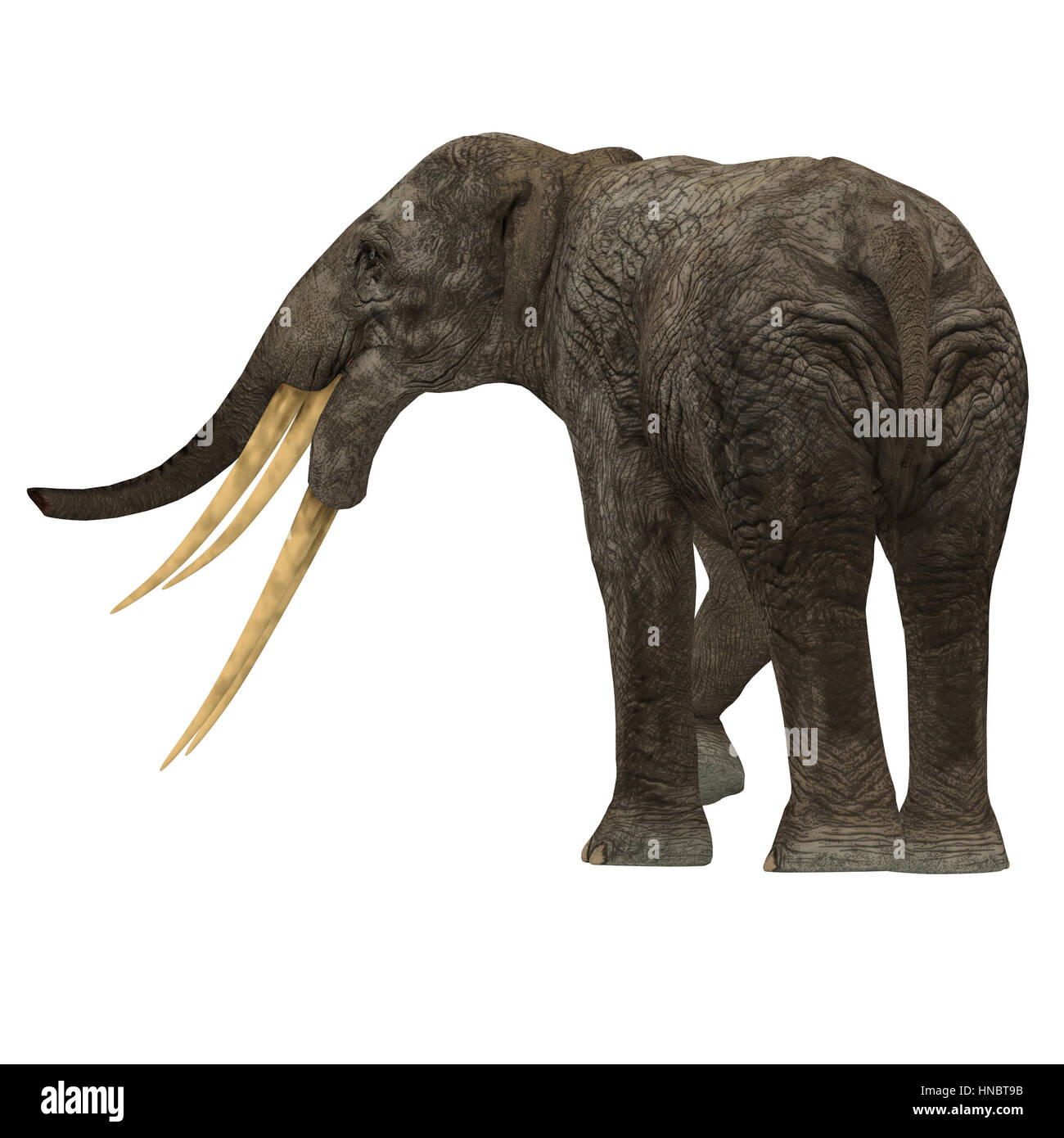 Stegotetrabelodon was an elephant that lived in the Miocene and Pliocene Periods of Africa and Eurasia. Stock Photohttps://www.alamy.com/image-license-details/?v=1https://www.alamy.com/stock-photo-stegotetrabelodon-was-an-elephant-that-lived-in-the-miocene-and-pliocene-133640903.html
Stegotetrabelodon was an elephant that lived in the Miocene and Pliocene Periods of Africa and Eurasia. Stock Photohttps://www.alamy.com/image-license-details/?v=1https://www.alamy.com/stock-photo-stegotetrabelodon-was-an-elephant-that-lived-in-the-miocene-and-pliocene-133640903.htmlRFHNBT9B–Stegotetrabelodon was an elephant that lived in the Miocene and Pliocene Periods of Africa and Eurasia.
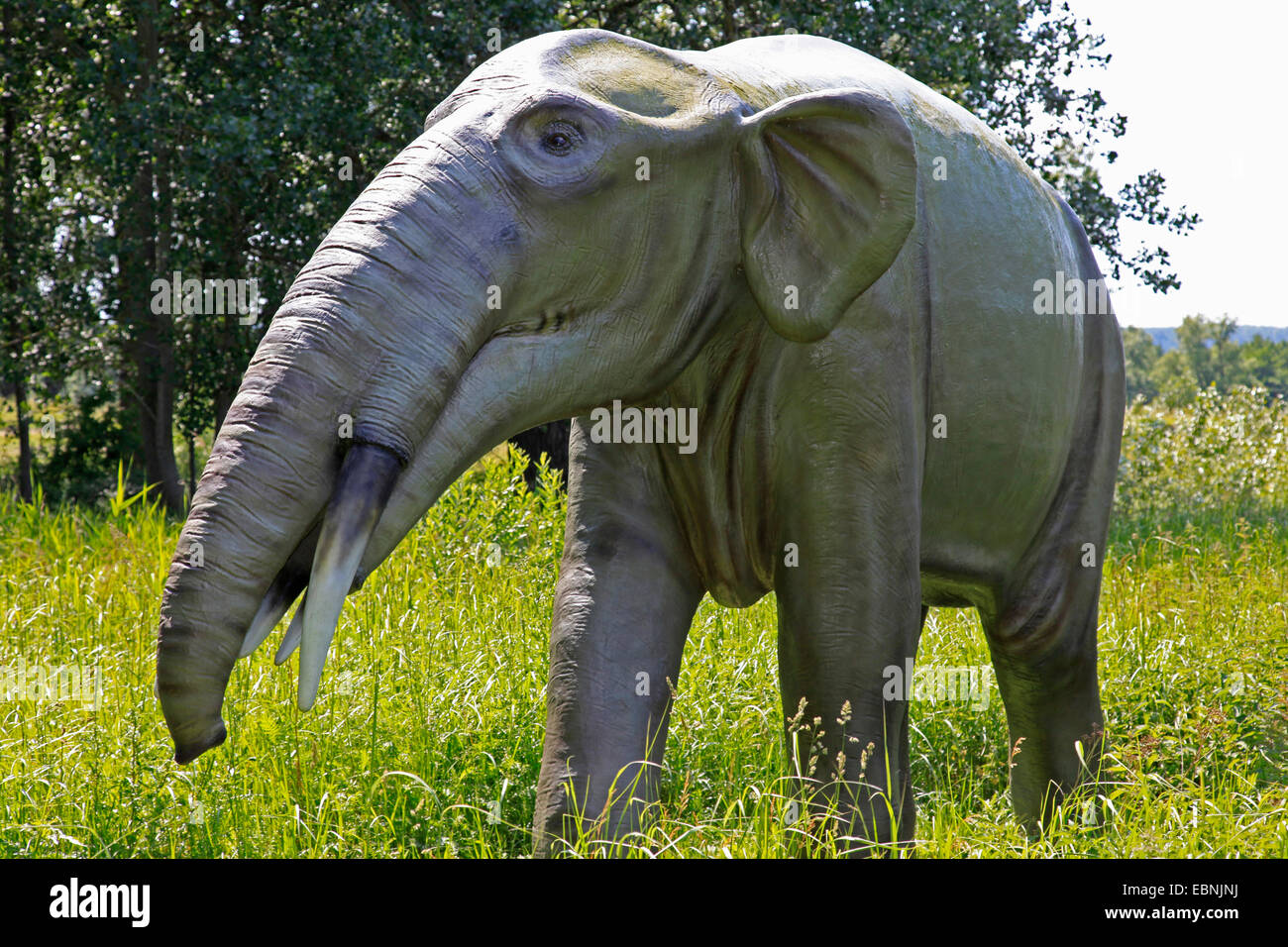 Gomphotherium (Gomphotherium), primitiv extinct elephant Stock Photohttps://www.alamy.com/image-license-details/?v=1https://www.alamy.com/stock-photo-gomphotherium-gomphotherium-primitiv-extinct-elephant-76078398.html
Gomphotherium (Gomphotherium), primitiv extinct elephant Stock Photohttps://www.alamy.com/image-license-details/?v=1https://www.alamy.com/stock-photo-gomphotherium-gomphotherium-primitiv-extinct-elephant-76078398.htmlRMEBNJNJ–Gomphotherium (Gomphotherium), primitiv extinct elephant
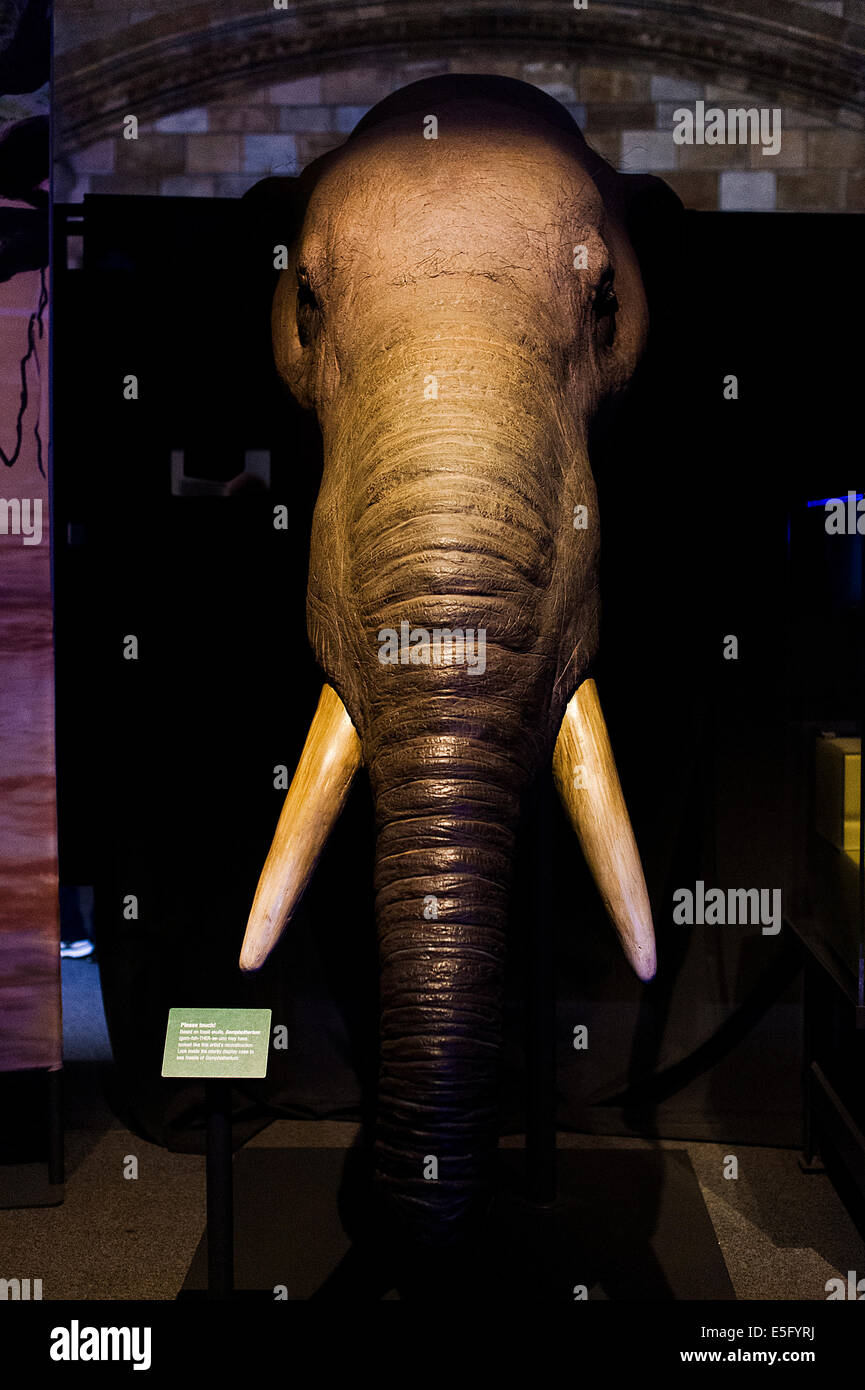 Recostruction of extinct like elephant mammal Gomphotherium sp. Miocene, Europe, Asia, Africa, North America Stock Photohttps://www.alamy.com/image-license-details/?v=1https://www.alamy.com/stock-photo-recostruction-of-extinct-like-elephant-mammal-gomphotherium-sp-miocene-72265862.html
Recostruction of extinct like elephant mammal Gomphotherium sp. Miocene, Europe, Asia, Africa, North America Stock Photohttps://www.alamy.com/image-license-details/?v=1https://www.alamy.com/stock-photo-recostruction-of-extinct-like-elephant-mammal-gomphotherium-sp-miocene-72265862.htmlRME5FYRJ–Recostruction of extinct like elephant mammal Gomphotherium sp. Miocene, Europe, Asia, Africa, North America
 Platybelodon Stock Photohttps://www.alamy.com/image-license-details/?v=1https://www.alamy.com/stock-photo-platybelodon-134018231.html
Platybelodon Stock Photohttps://www.alamy.com/image-license-details/?v=1https://www.alamy.com/stock-photo-platybelodon-134018231.htmlRFHP11HB–Platybelodon
 An adult Platybelodon compared to a modern adult African Elephant. Stock Photohttps://www.alamy.com/image-license-details/?v=1https://www.alamy.com/stock-photo-an-adult-platybelodon-compared-to-a-modern-adult-african-elephant-53803321.html
An adult Platybelodon compared to a modern adult African Elephant. Stock Photohttps://www.alamy.com/image-license-details/?v=1https://www.alamy.com/stock-photo-an-adult-platybelodon-compared-to-a-modern-adult-african-elephant-53803321.htmlRMD3EXK5–An adult Platybelodon compared to a modern adult African Elephant.
 Giant Elephant, fearfully great beast (Deinotherium giganteum) at The Sedgwick Museum, Cambridge, England, UK. Fossil museum. Neogene period Stock Photohttps://www.alamy.com/image-license-details/?v=1https://www.alamy.com/giant-elephant-fearfully-great-beast-deinotherium-giganteum-at-the-sedgwick-museum-cambridge-england-uk-fossil-museum-neogene-period-image212045966.html
Giant Elephant, fearfully great beast (Deinotherium giganteum) at The Sedgwick Museum, Cambridge, England, UK. Fossil museum. Neogene period Stock Photohttps://www.alamy.com/image-license-details/?v=1https://www.alamy.com/giant-elephant-fearfully-great-beast-deinotherium-giganteum-at-the-sedgwick-museum-cambridge-england-uk-fossil-museum-neogene-period-image212045966.htmlRMP8YEP6–Giant Elephant, fearfully great beast (Deinotherium giganteum) at The Sedgwick Museum, Cambridge, England, UK. Fossil museum. Neogene period
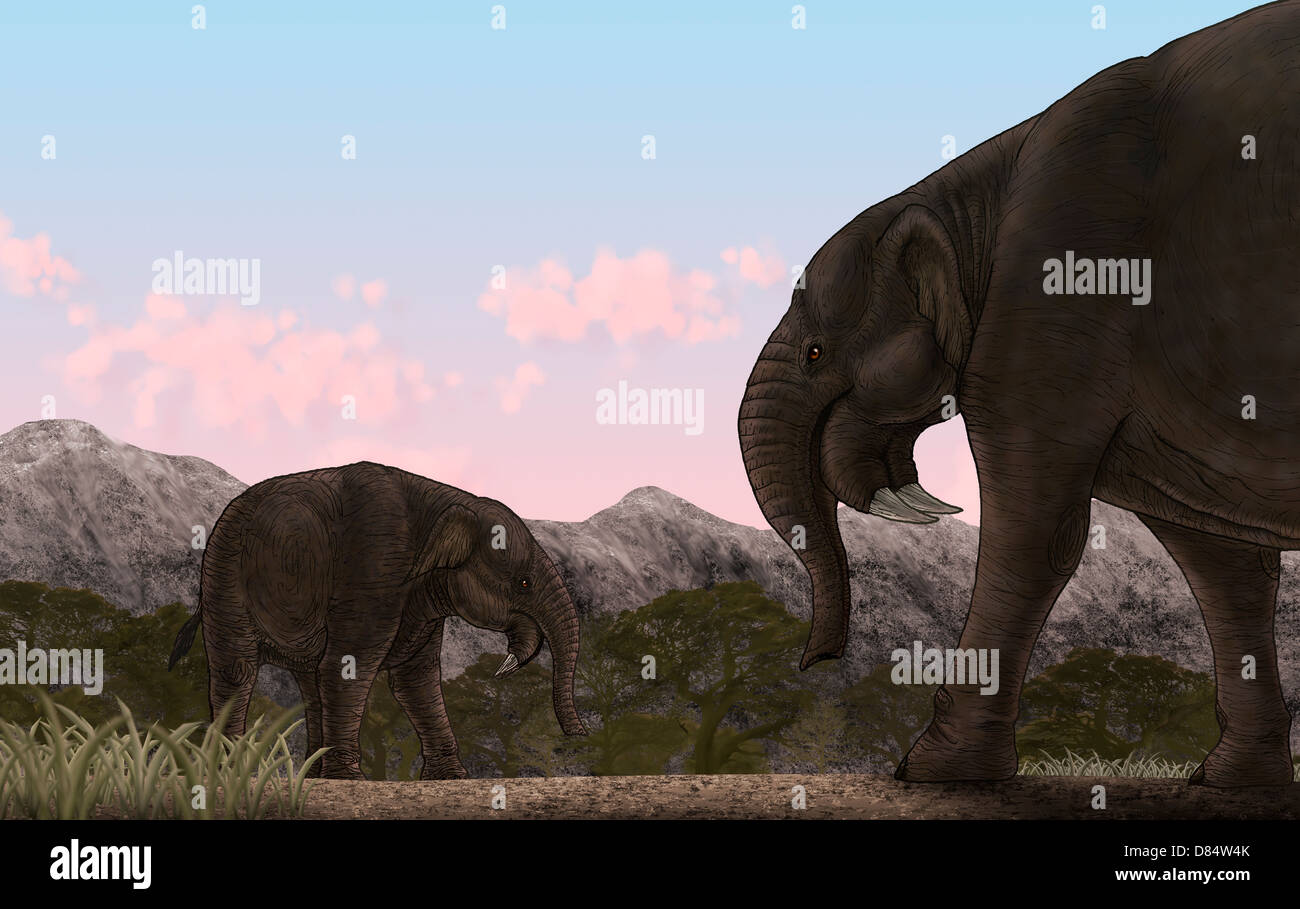 Two Deinotherium, an extinct animal of the Miocene epoch, relative to modern day elephants. Stock Photohttps://www.alamy.com/image-license-details/?v=1https://www.alamy.com/stock-photo-two-deinotherium-an-extinct-animal-of-the-miocene-epoch-relative-to-56655891.html
Two Deinotherium, an extinct animal of the Miocene epoch, relative to modern day elephants. Stock Photohttps://www.alamy.com/image-license-details/?v=1https://www.alamy.com/stock-photo-two-deinotherium-an-extinct-animal-of-the-miocene-epoch-relative-to-56655891.htmlRFD84W4K–Two Deinotherium, an extinct animal of the Miocene epoch, relative to modern day elephants.
 Platybelodon is an extinct herbivorous mammal related to the elephant that lived during the Miocene Period of Africa, Europe, Asia and North America. Stock Photohttps://www.alamy.com/image-license-details/?v=1https://www.alamy.com/platybelodon-is-an-extinct-herbivorous-mammal-related-to-the-elephant-that-lived-during-the-miocene-period-of-africa-europe-asia-and-north-america-image385998004.html
Platybelodon is an extinct herbivorous mammal related to the elephant that lived during the Miocene Period of Africa, Europe, Asia and North America. Stock Photohttps://www.alamy.com/image-license-details/?v=1https://www.alamy.com/platybelodon-is-an-extinct-herbivorous-mammal-related-to-the-elephant-that-lived-during-the-miocene-period-of-africa-europe-asia-and-north-america-image385998004.htmlRF2DBYMB0–Platybelodon is an extinct herbivorous mammal related to the elephant that lived during the Miocene Period of Africa, Europe, Asia and North America.
 Platybelodon elephant silhouette extinct mammal animal Stock Vectorhttps://www.alamy.com/image-license-details/?v=1https://www.alamy.com/platybelodon-elephant-silhouette-extinct-mammal-animal-image220195047.html
Platybelodon elephant silhouette extinct mammal animal Stock Vectorhttps://www.alamy.com/image-license-details/?v=1https://www.alamy.com/platybelodon-elephant-silhouette-extinct-mammal-animal-image220195047.htmlRFPP6N0R–Platybelodon elephant silhouette extinct mammal animal
 Platybelodon was a herbivorous extinct mammal related to the elephant that lived in Miocene Era in Africa, Europe, Asia and North America. Stock Photohttps://www.alamy.com/image-license-details/?v=1https://www.alamy.com/platybelodon-was-a-herbivorous-extinct-mammal-related-to-the-elephant-that-lived-in-miocene-era-in-africa-europe-asia-and-north-america-image385998001.html
Platybelodon was a herbivorous extinct mammal related to the elephant that lived in Miocene Era in Africa, Europe, Asia and North America. Stock Photohttps://www.alamy.com/image-license-details/?v=1https://www.alamy.com/platybelodon-was-a-herbivorous-extinct-mammal-related-to-the-elephant-that-lived-in-miocene-era-in-africa-europe-asia-and-north-america-image385998001.htmlRF2DBYMAW–Platybelodon was a herbivorous extinct mammal related to the elephant that lived in Miocene Era in Africa, Europe, Asia and North America.
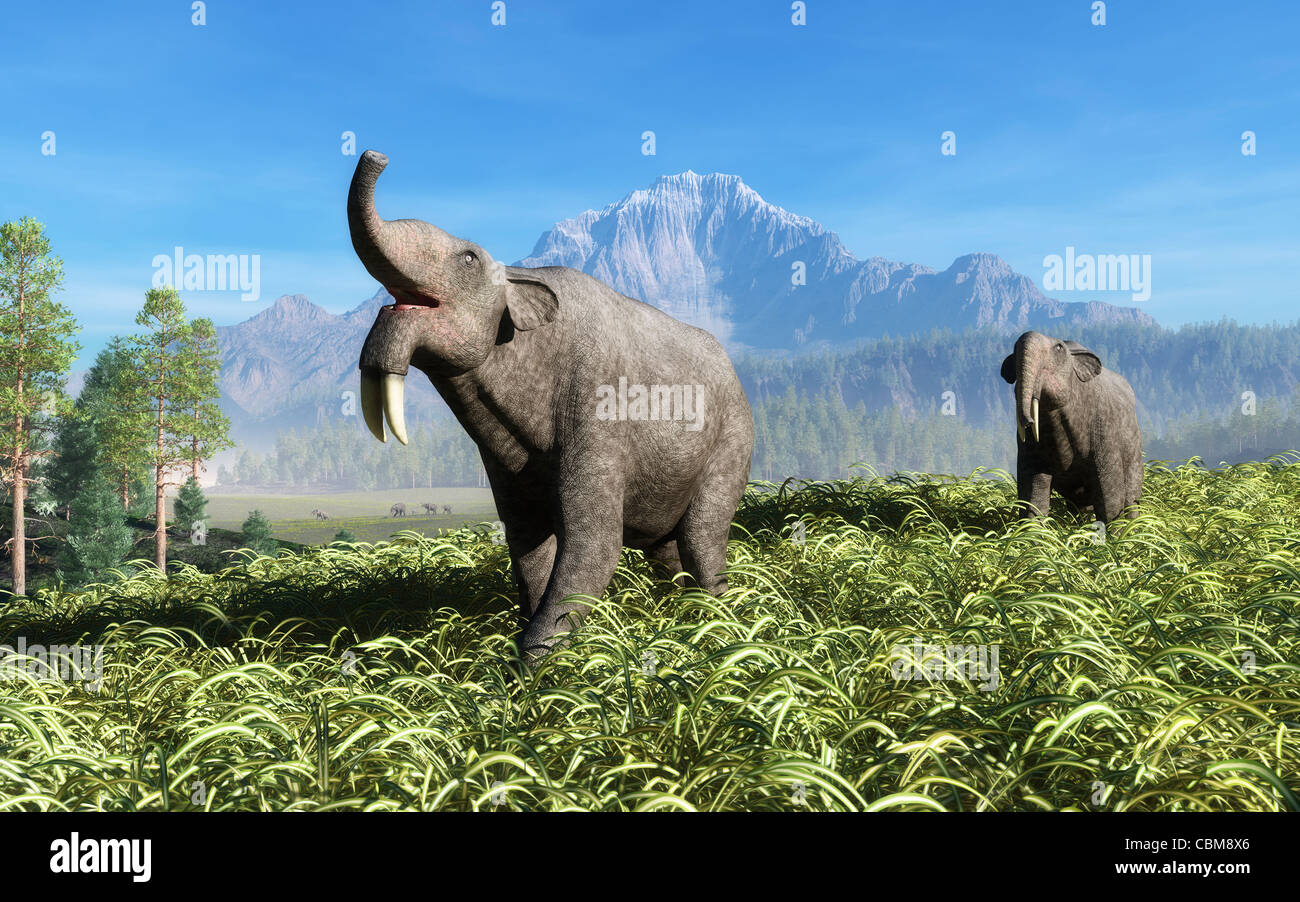 Deinotherium traverse the rolling plains of what is today Europe. Stock Photohttps://www.alamy.com/image-license-details/?v=1https://www.alamy.com/stock-photo-deinotherium-traverse-the-rolling-plains-of-what-is-today-europe-41627998.html
Deinotherium traverse the rolling plains of what is today Europe. Stock Photohttps://www.alamy.com/image-license-details/?v=1https://www.alamy.com/stock-photo-deinotherium-traverse-the-rolling-plains-of-what-is-today-europe-41627998.htmlRMCBM8X6–Deinotherium traverse the rolling plains of what is today Europe.
 The coastline near Loch Ard Gorge, view towards Elephant Rock, Great Ocean Road, Australia. Stock Photohttps://www.alamy.com/image-license-details/?v=1https://www.alamy.com/stock-photo-the-coastline-near-loch-ard-gorge-view-towards-elephant-rock-great-52509917.html
The coastline near Loch Ard Gorge, view towards Elephant Rock, Great Ocean Road, Australia. Stock Photohttps://www.alamy.com/image-license-details/?v=1https://www.alamy.com/stock-photo-the-coastline-near-loch-ard-gorge-view-towards-elephant-rock-great-52509917.htmlRMD1C0X5–The coastline near Loch Ard Gorge, view towards Elephant Rock, Great Ocean Road, Australia.
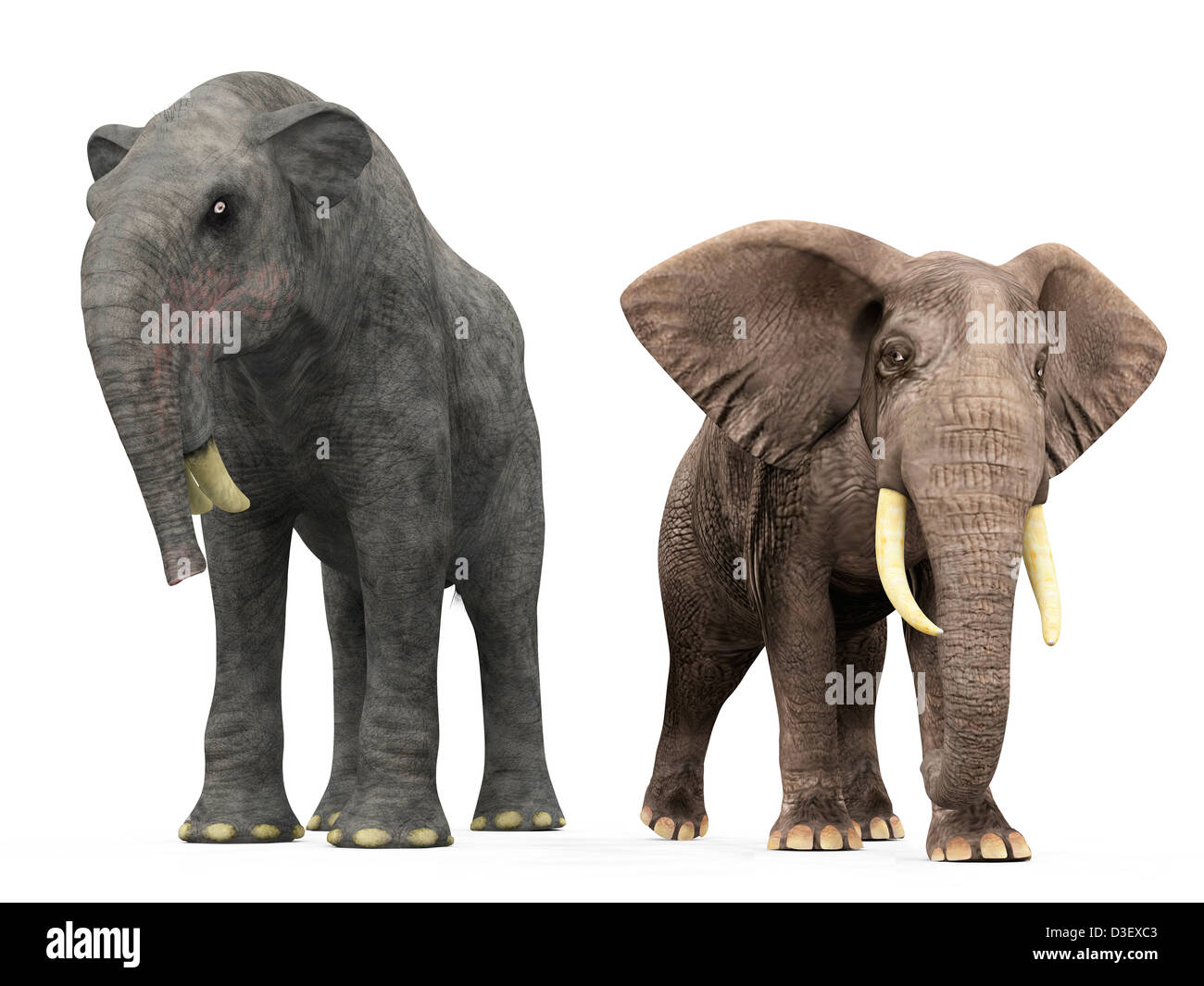 An adult Deinotherium compared to a modern adult African Elephant. Stock Photohttps://www.alamy.com/image-license-details/?v=1https://www.alamy.com/stock-photo-an-adult-deinotherium-compared-to-a-modern-adult-african-elephant-53803123.html
An adult Deinotherium compared to a modern adult African Elephant. Stock Photohttps://www.alamy.com/image-license-details/?v=1https://www.alamy.com/stock-photo-an-adult-deinotherium-compared-to-a-modern-adult-african-elephant-53803123.htmlRMD3EXC3–An adult Deinotherium compared to a modern adult African Elephant.
 The coastline near Loch Ard Gorge with Elephant rock and Muttonbird Island, Great Ocean Road, Australia. Stock Photohttps://www.alamy.com/image-license-details/?v=1https://www.alamy.com/stock-photo-the-coastline-near-loch-ard-gorge-with-elephant-rock-and-muttonbird-52509876.html
The coastline near Loch Ard Gorge with Elephant rock and Muttonbird Island, Great Ocean Road, Australia. Stock Photohttps://www.alamy.com/image-license-details/?v=1https://www.alamy.com/stock-photo-the-coastline-near-loch-ard-gorge-with-elephant-rock-and-muttonbird-52509876.htmlRMD1C0TM–The coastline near Loch Ard Gorge with Elephant rock and Muttonbird Island, Great Ocean Road, Australia.
 Platybelodon grangeri is a large mammal from the Late Miocene of Mongolia. Stock Photohttps://www.alamy.com/image-license-details/?v=1https://www.alamy.com/stock-photo-platybelodon-grangeri-is-a-large-mammal-from-the-late-miocene-of-mongolia-130442684.html
Platybelodon grangeri is a large mammal from the Late Miocene of Mongolia. Stock Photohttps://www.alamy.com/image-license-details/?v=1https://www.alamy.com/stock-photo-platybelodon-grangeri-is-a-large-mammal-from-the-late-miocene-of-mongolia-130442684.htmlRFHG64Y8–Platybelodon grangeri is a large mammal from the Late Miocene of Mongolia.
 An ideal landscape of the Miocene period, with elephants rummaging through a forest. Wood engraving by Eduard Riou after Cazat. Stock Photohttps://www.alamy.com/image-license-details/?v=1https://www.alamy.com/an-ideal-landscape-of-the-miocene-period-with-elephants-rummaging-through-a-forest-wood-engraving-by-eduard-riou-after-cazat-image371744135.html
An ideal landscape of the Miocene period, with elephants rummaging through a forest. Wood engraving by Eduard Riou after Cazat. Stock Photohttps://www.alamy.com/image-license-details/?v=1https://www.alamy.com/an-ideal-landscape-of-the-miocene-period-with-elephants-rummaging-through-a-forest-wood-engraving-by-eduard-riou-after-cazat-image371744135.htmlRF2CGPBC7–An ideal landscape of the Miocene period, with elephants rummaging through a forest. Wood engraving by Eduard Riou after Cazat.
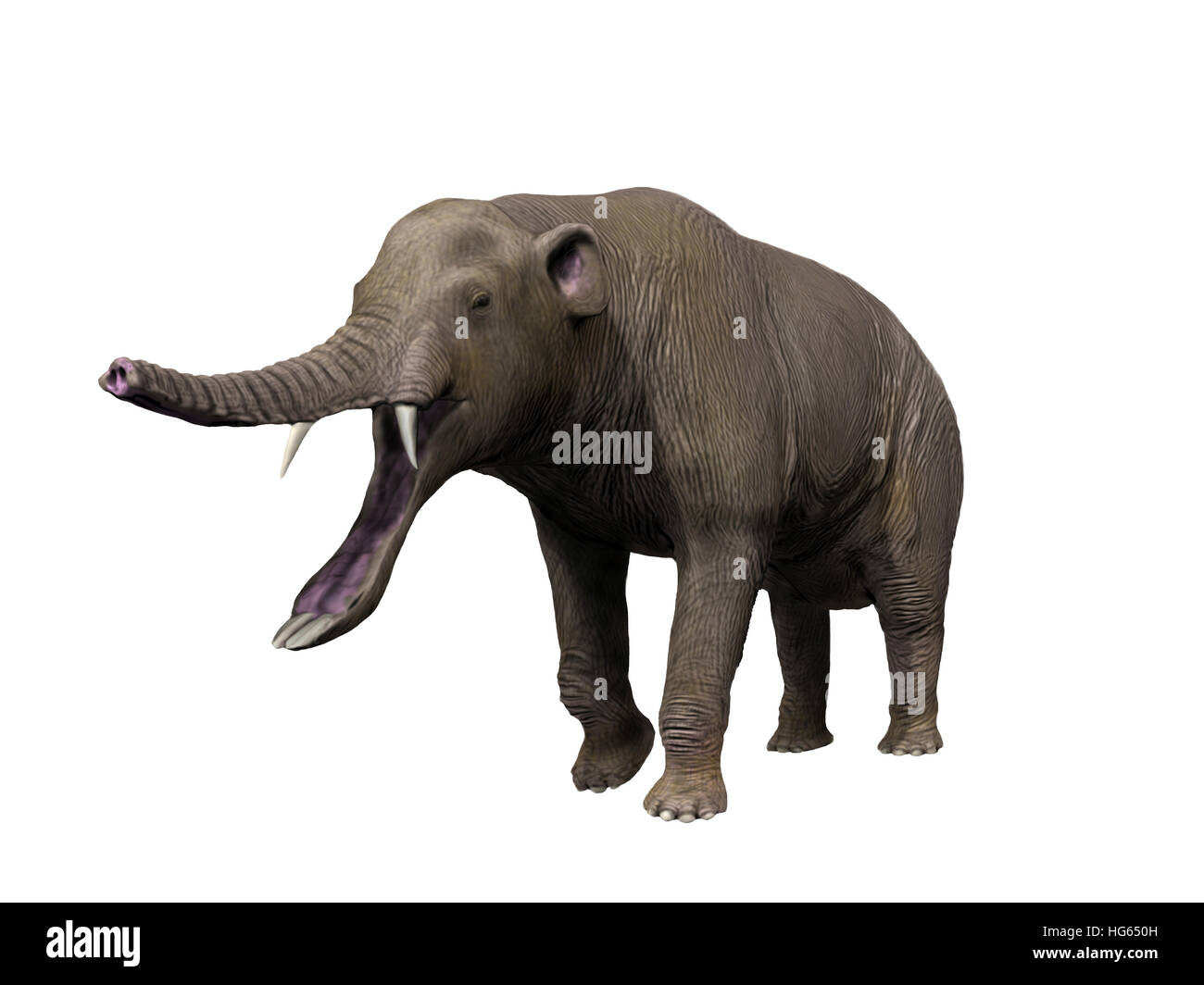 Platybelodon is a large Proboscidea from the Late Miocene epoch. Stock Photohttps://www.alamy.com/image-license-details/?v=1https://www.alamy.com/stock-photo-platybelodon-is-a-large-proboscidea-from-the-late-miocene-epoch-130442721.html
Platybelodon is a large Proboscidea from the Late Miocene epoch. Stock Photohttps://www.alamy.com/image-license-details/?v=1https://www.alamy.com/stock-photo-platybelodon-is-a-large-proboscidea-from-the-late-miocene-epoch-130442721.htmlRFHG650H–Platybelodon is a large Proboscidea from the Late Miocene epoch.
 Several giraffes drinking water at a waterhole near the camp Savute Elephant Camp by Orient Express in Botswna in Chobe Park Stock Photohttps://www.alamy.com/image-license-details/?v=1https://www.alamy.com/several-giraffes-drinking-water-at-a-waterhole-near-the-camp-savute-image62756189.html
Several giraffes drinking water at a waterhole near the camp Savute Elephant Camp by Orient Express in Botswna in Chobe Park Stock Photohttps://www.alamy.com/image-license-details/?v=1https://www.alamy.com/several-giraffes-drinking-water-at-a-waterhole-near-the-camp-savute-image62756189.htmlRMDJ2P4D–Several giraffes drinking water at a waterhole near the camp Savute Elephant Camp by Orient Express in Botswna in Chobe Park
 Pencil drawing of Gomphotherium. Stock Photohttps://www.alamy.com/image-license-details/?v=1https://www.alamy.com/pencil-drawing-of-gomphotherium-image68854787.html
Pencil drawing of Gomphotherium. Stock Photohttps://www.alamy.com/image-license-details/?v=1https://www.alamy.com/pencil-drawing-of-gomphotherium-image68854787.htmlRFE00GYF–Pencil drawing of Gomphotherium.
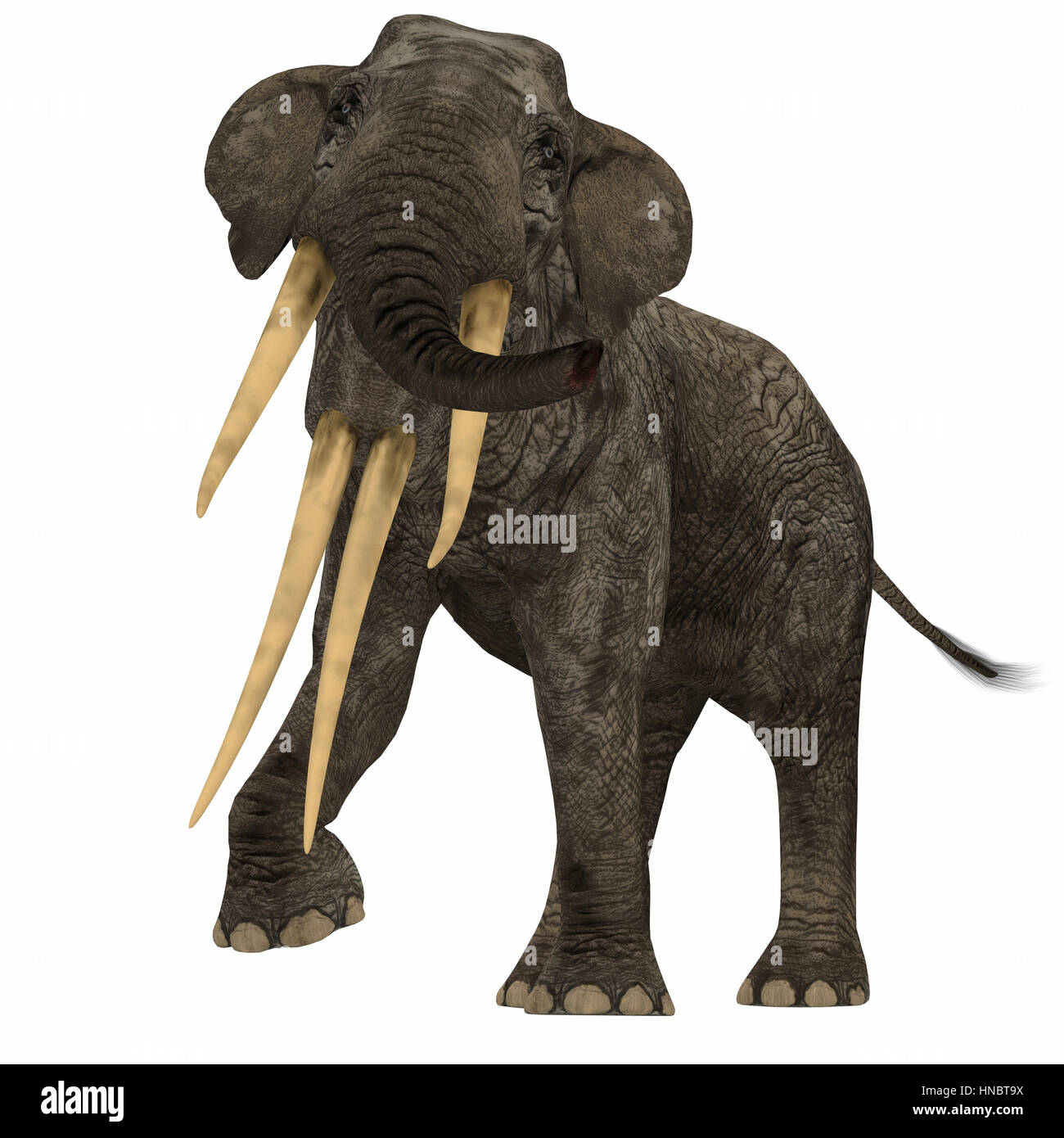 Stegotetrabelodon was an elephant that lived in the Miocene and Pliocene Periods of Africa and Eurasia. Stock Photohttps://www.alamy.com/image-license-details/?v=1https://www.alamy.com/stock-photo-stegotetrabelodon-was-an-elephant-that-lived-in-the-miocene-and-pliocene-133640918.html
Stegotetrabelodon was an elephant that lived in the Miocene and Pliocene Periods of Africa and Eurasia. Stock Photohttps://www.alamy.com/image-license-details/?v=1https://www.alamy.com/stock-photo-stegotetrabelodon-was-an-elephant-that-lived-in-the-miocene-and-pliocene-133640918.htmlRFHNBT9X–Stegotetrabelodon was an elephant that lived in the Miocene and Pliocene Periods of Africa and Eurasia.
 Gomphotherium (Gomphotherium), primitiv extinct elephant Stock Photohttps://www.alamy.com/image-license-details/?v=1https://www.alamy.com/stock-photo-gomphotherium-gomphotherium-primitiv-extinct-elephant-76078399.html
Gomphotherium (Gomphotherium), primitiv extinct elephant Stock Photohttps://www.alamy.com/image-license-details/?v=1https://www.alamy.com/stock-photo-gomphotherium-gomphotherium-primitiv-extinct-elephant-76078399.htmlRMEBNJNK–Gomphotherium (Gomphotherium), primitiv extinct elephant
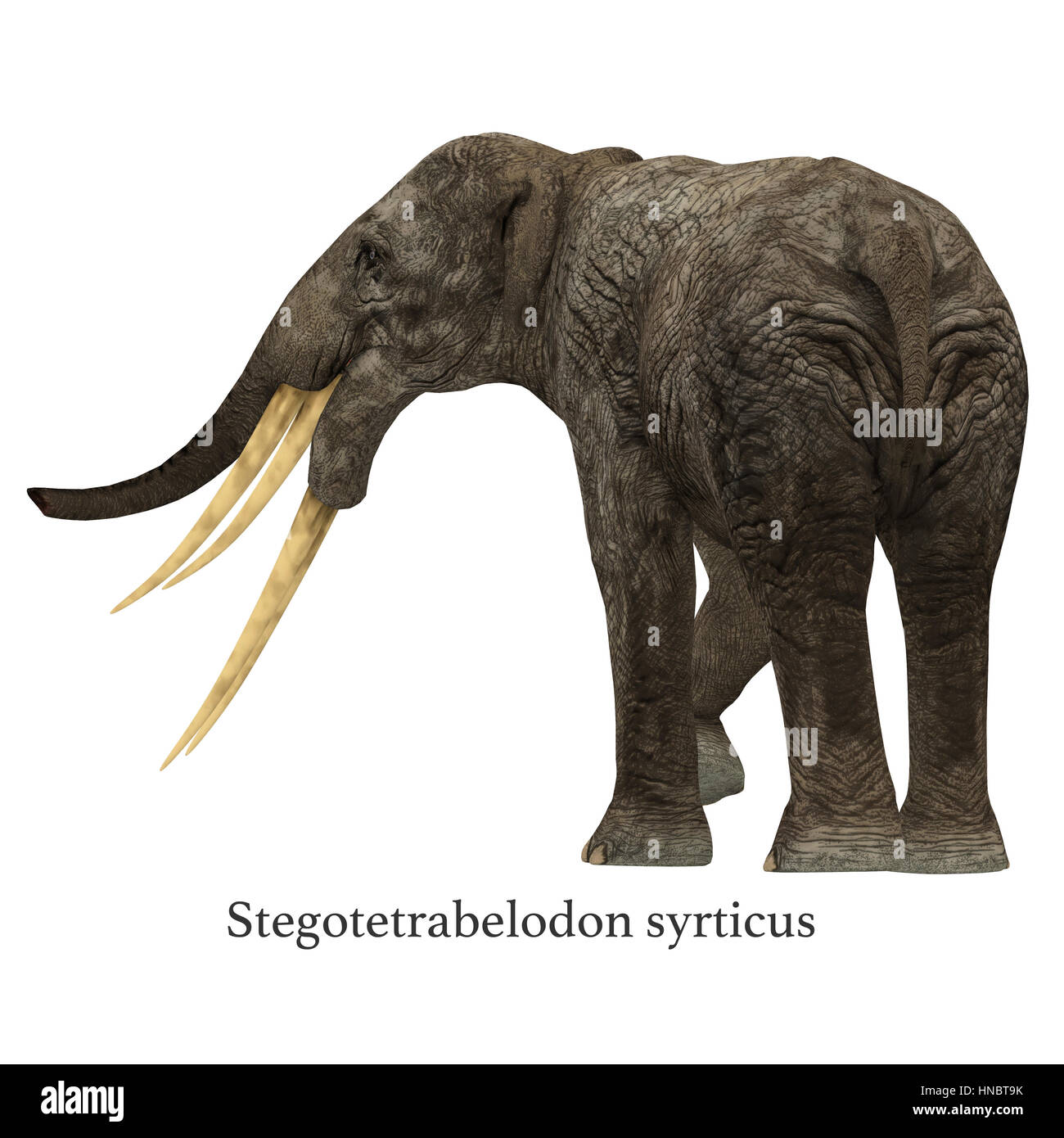 Stegotetrabelodon was an elephant that lived in the Miocene and Pliocene Periods of Africa and Eurasia. Stock Photohttps://www.alamy.com/image-license-details/?v=1https://www.alamy.com/stock-photo-stegotetrabelodon-was-an-elephant-that-lived-in-the-miocene-and-pliocene-133640911.html
Stegotetrabelodon was an elephant that lived in the Miocene and Pliocene Periods of Africa and Eurasia. Stock Photohttps://www.alamy.com/image-license-details/?v=1https://www.alamy.com/stock-photo-stegotetrabelodon-was-an-elephant-that-lived-in-the-miocene-and-pliocene-133640911.htmlRFHNBT9K–Stegotetrabelodon was an elephant that lived in the Miocene and Pliocene Periods of Africa and Eurasia.
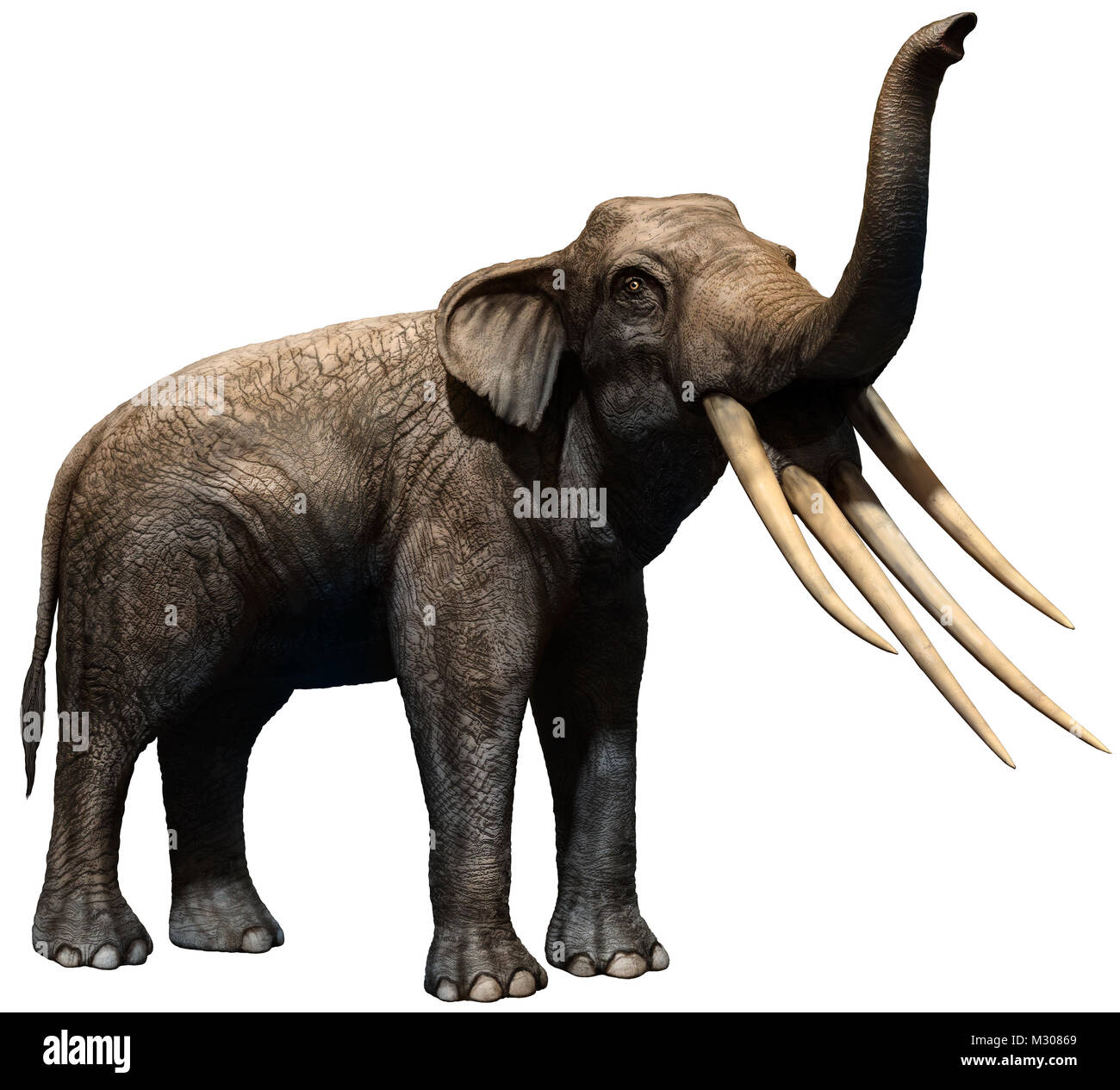 Stegotetrabelodon Stock Photohttps://www.alamy.com/image-license-details/?v=1https://www.alamy.com/stock-photo-stegotetrabelodon-173954097.html
Stegotetrabelodon Stock Photohttps://www.alamy.com/image-license-details/?v=1https://www.alamy.com/stock-photo-stegotetrabelodon-173954097.htmlRFM30869–Stegotetrabelodon
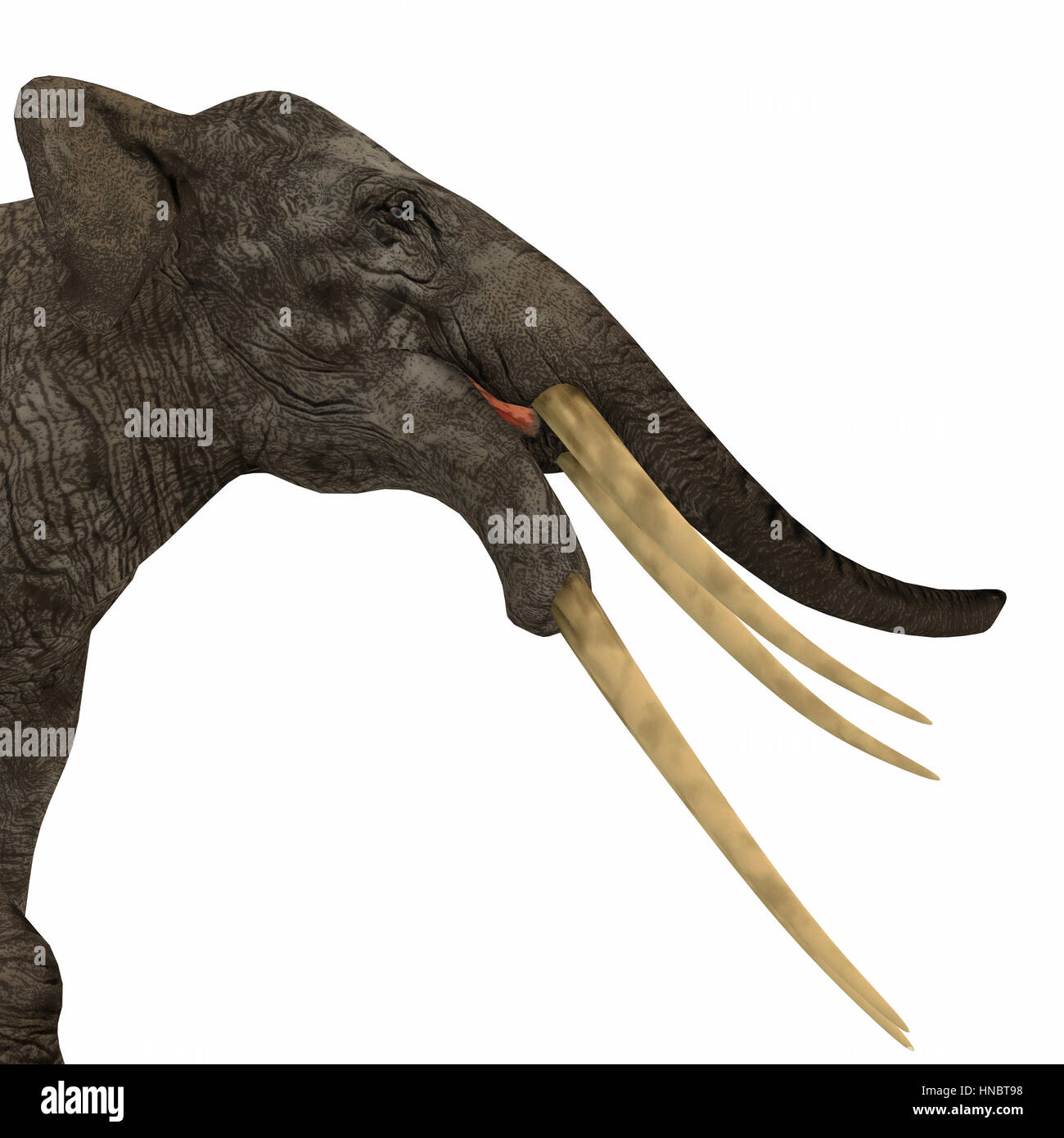 Stegotetrabelodon was an elephant that lived in the Miocene and Pliocene Periods of Africa and Eurasia. Stock Photohttps://www.alamy.com/image-license-details/?v=1https://www.alamy.com/stock-photo-stegotetrabelodon-was-an-elephant-that-lived-in-the-miocene-and-pliocene-133640900.html
Stegotetrabelodon was an elephant that lived in the Miocene and Pliocene Periods of Africa and Eurasia. Stock Photohttps://www.alamy.com/image-license-details/?v=1https://www.alamy.com/stock-photo-stegotetrabelodon-was-an-elephant-that-lived-in-the-miocene-and-pliocene-133640900.htmlRFHNBT98–Stegotetrabelodon was an elephant that lived in the Miocene and Pliocene Periods of Africa and Eurasia.
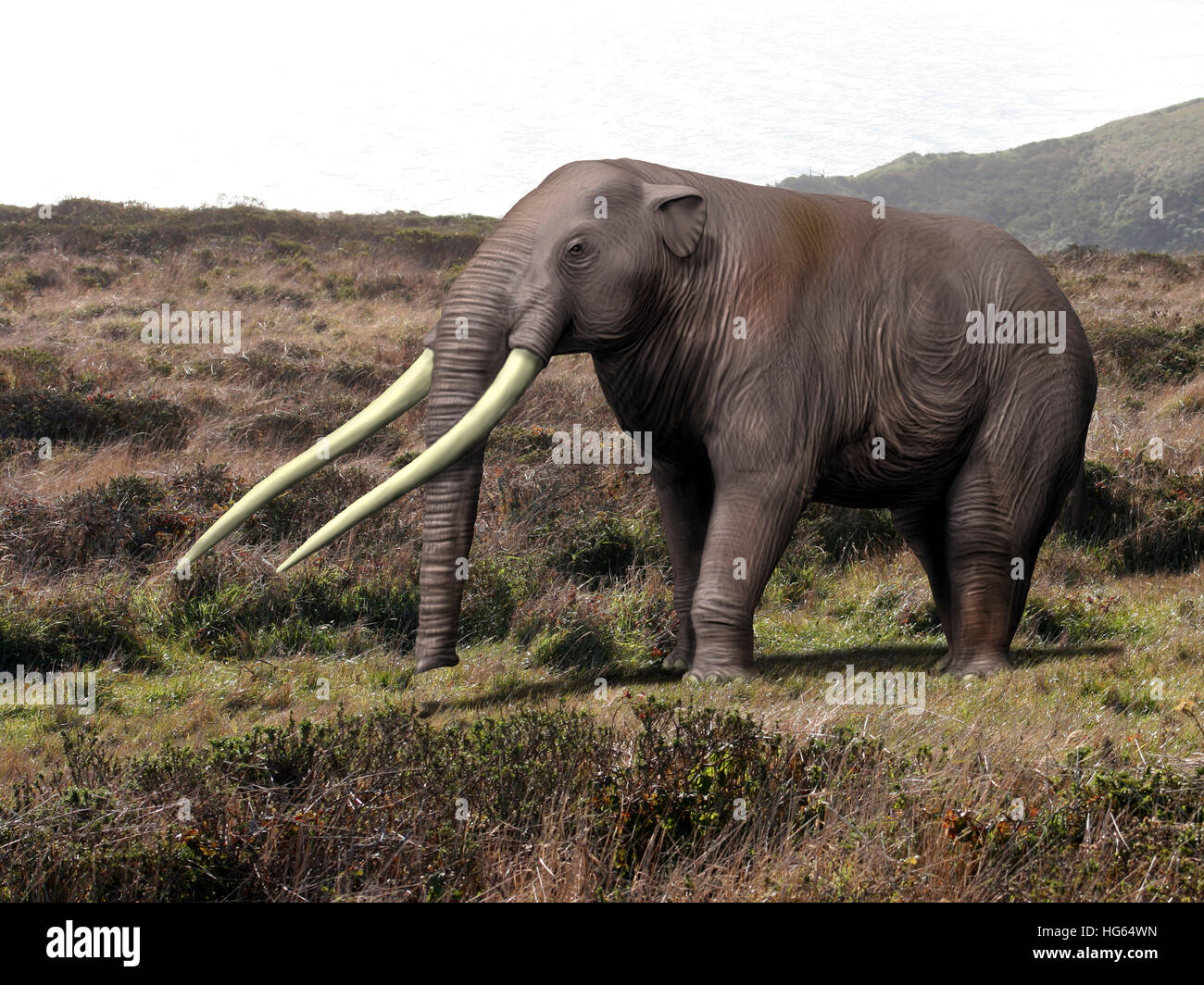 Anancus arvernensis, Proboscidea, Pleistocene epoch of Europe. Stock Photohttps://www.alamy.com/image-license-details/?v=1https://www.alamy.com/stock-photo-anancus-arvernensis-proboscidea-pleistocene-epoch-of-europe-130442641.html
Anancus arvernensis, Proboscidea, Pleistocene epoch of Europe. Stock Photohttps://www.alamy.com/image-license-details/?v=1https://www.alamy.com/stock-photo-anancus-arvernensis-proboscidea-pleistocene-epoch-of-europe-130442641.htmlRFHG64WN–Anancus arvernensis, Proboscidea, Pleistocene epoch of Europe.
 Platybelodon was herbivorous elephant mammal that lived in Africa, Europe and North America during the Miocene and Pleistocene Periods. Stock Photohttps://www.alamy.com/image-license-details/?v=1https://www.alamy.com/platybelodon-was-herbivorous-elephant-mammal-that-lived-in-africa-europe-and-north-america-during-the-miocene-and-pleistocene-periods-image264580476.html
Platybelodon was herbivorous elephant mammal that lived in Africa, Europe and North America during the Miocene and Pleistocene Periods. Stock Photohttps://www.alamy.com/image-license-details/?v=1https://www.alamy.com/platybelodon-was-herbivorous-elephant-mammal-that-lived-in-africa-europe-and-north-america-during-the-miocene-and-pleistocene-periods-image264580476.htmlRFWACK2M–Platybelodon was herbivorous elephant mammal that lived in Africa, Europe and North America during the Miocene and Pleistocene Periods.
 Several giraffes drinking water at a waterhole near the camp Savute Elephant Camp by Orient Express in Botswna in Chobe National Stock Photohttps://www.alamy.com/image-license-details/?v=1https://www.alamy.com/several-giraffes-drinking-water-at-a-waterhole-near-the-camp-savute-image65948044.html
Several giraffes drinking water at a waterhole near the camp Savute Elephant Camp by Orient Express in Botswna in Chobe National Stock Photohttps://www.alamy.com/image-license-details/?v=1https://www.alamy.com/several-giraffes-drinking-water-at-a-waterhole-near-the-camp-savute-image65948044.htmlRMDR85B8–Several giraffes drinking water at a waterhole near the camp Savute Elephant Camp by Orient Express in Botswna in Chobe National
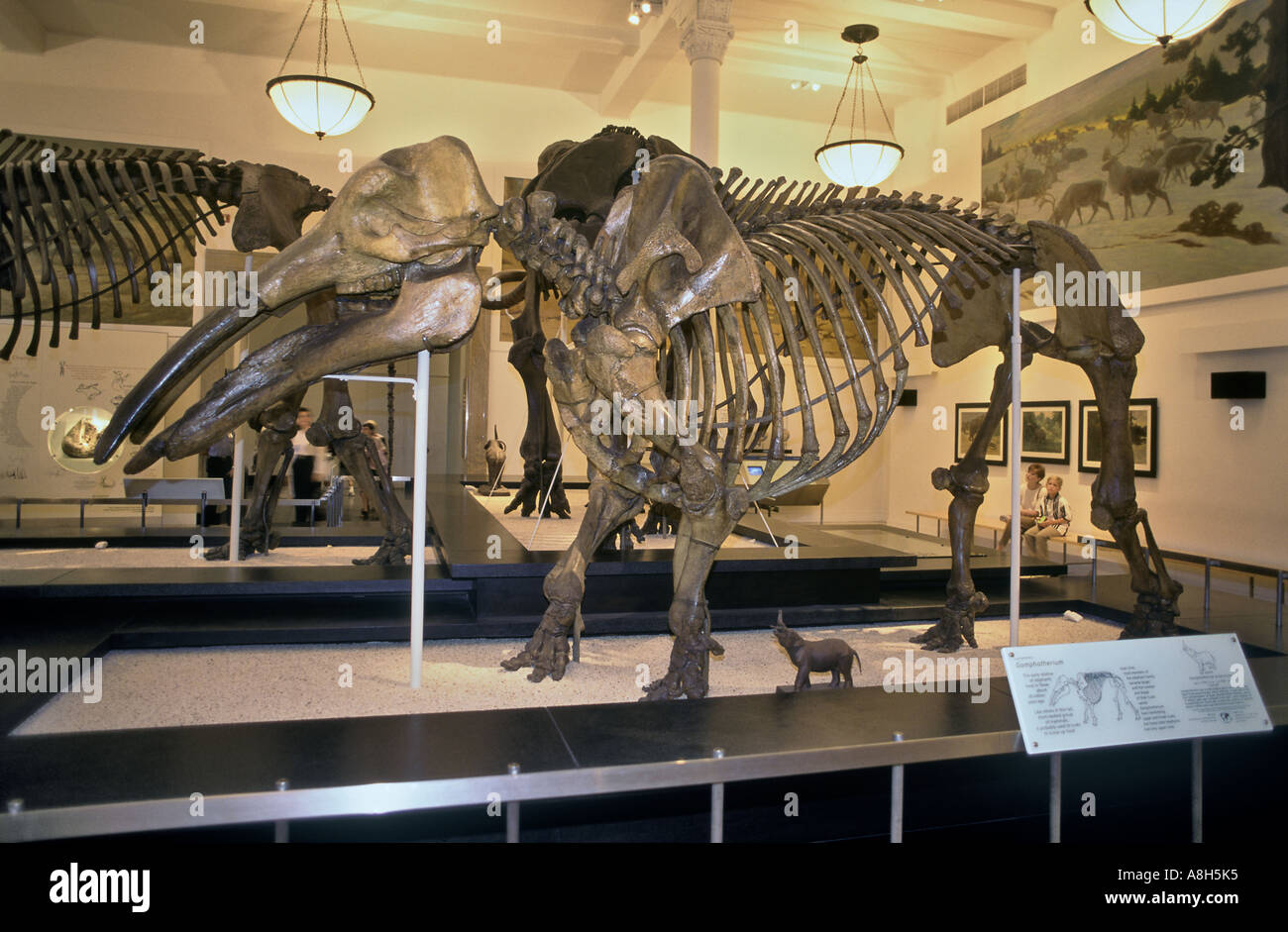 Gomphotherium, Ancestor of the Elephant 10 Million Years Texas Stock Photohttps://www.alamy.com/image-license-details/?v=1https://www.alamy.com/gomphotherium-ancestor-of-the-elephant-10-million-years-texas-image6916340.html
Gomphotherium, Ancestor of the Elephant 10 Million Years Texas Stock Photohttps://www.alamy.com/image-license-details/?v=1https://www.alamy.com/gomphotherium-ancestor-of-the-elephant-10-million-years-texas-image6916340.htmlRMA8H5K5–Gomphotherium, Ancestor of the Elephant 10 Million Years Texas
 Platybelodon was a herbivorous extinct mammal related to the elephant that lived in Miocene Era in Africa, Europe, Asia and North America. Stock Photohttps://www.alamy.com/image-license-details/?v=1https://www.alamy.com/platybelodon-was-a-herbivorous-extinct-mammal-related-to-the-elephant-that-lived-in-miocene-era-in-africa-europe-asia-and-north-america-image385998030.html
Platybelodon was a herbivorous extinct mammal related to the elephant that lived in Miocene Era in Africa, Europe, Asia and North America. Stock Photohttps://www.alamy.com/image-license-details/?v=1https://www.alamy.com/platybelodon-was-a-herbivorous-extinct-mammal-related-to-the-elephant-that-lived-in-miocene-era-in-africa-europe-asia-and-north-america-image385998030.htmlRF2DBYMBX–Platybelodon was a herbivorous extinct mammal related to the elephant that lived in Miocene Era in Africa, Europe, Asia and North America.
 ideal landscape of the miocene ideal grass land grazing animals valley woodland forest wild Elephant rhino The Miocene is a geo Stock Photohttps://www.alamy.com/image-license-details/?v=1https://www.alamy.com/stock-photo-ideal-landscape-of-the-miocene-ideal-grass-land-grazing-animals-valley-23004786.html
ideal landscape of the miocene ideal grass land grazing animals valley woodland forest wild Elephant rhino The Miocene is a geo Stock Photohttps://www.alamy.com/image-license-details/?v=1https://www.alamy.com/stock-photo-ideal-landscape-of-the-miocene-ideal-grass-land-grazing-animals-valley-23004786.htmlRFB9BXRE–ideal landscape of the miocene ideal grass land grazing animals valley woodland forest wild Elephant rhino The Miocene is a geo
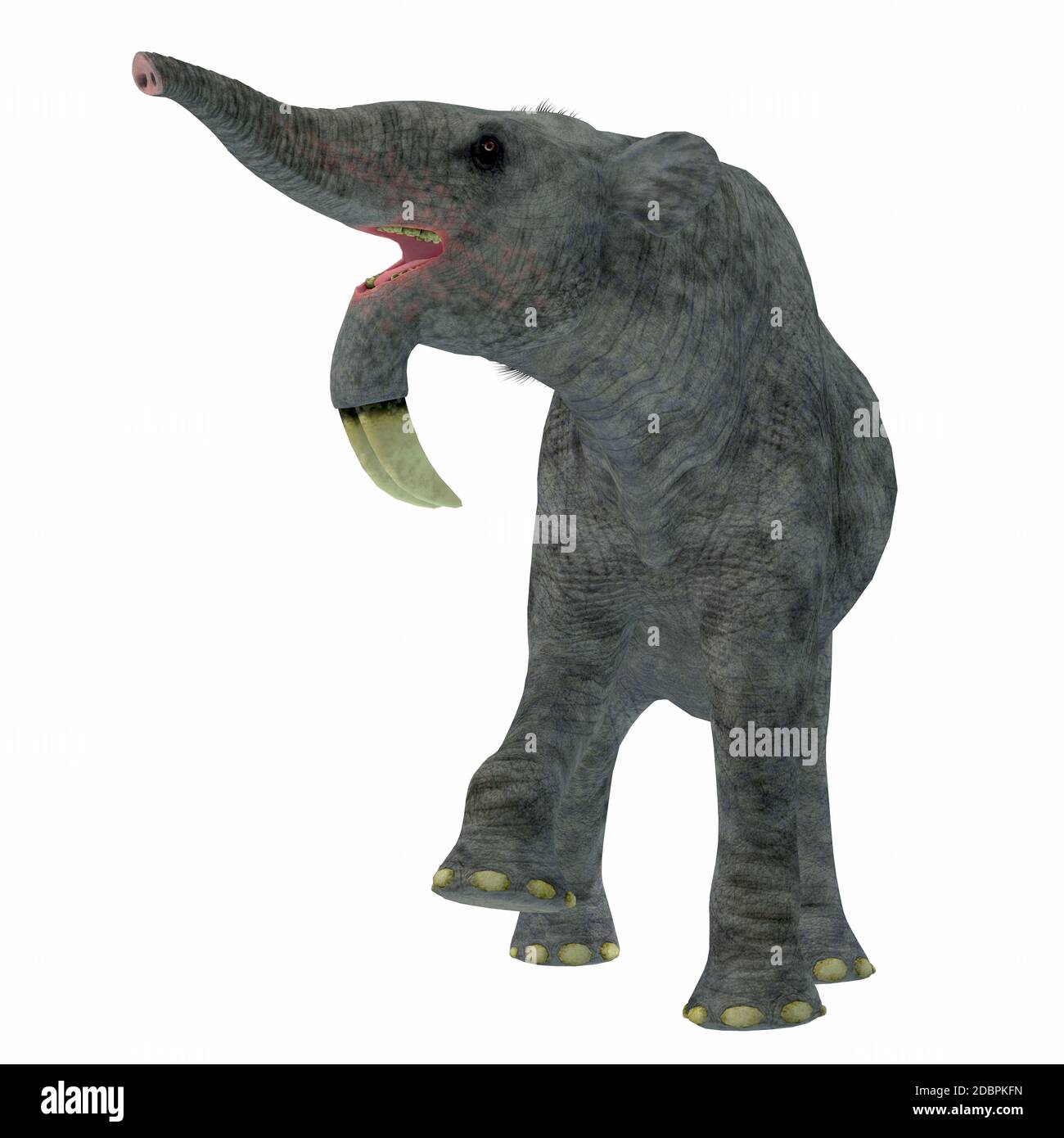 Deinotherium was an enormous land mammal that lived in Asia, Africa and Europe during the Miocene to Pleistocene Periods. Stock Photohttps://www.alamy.com/image-license-details/?v=1https://www.alamy.com/deinotherium-was-an-enormous-land-mammal-that-lived-in-asia-africa-and-europe-during-the-miocene-to-pleistocene-periods-image385887593.html
Deinotherium was an enormous land mammal that lived in Asia, Africa and Europe during the Miocene to Pleistocene Periods. Stock Photohttps://www.alamy.com/image-license-details/?v=1https://www.alamy.com/deinotherium-was-an-enormous-land-mammal-that-lived-in-asia-africa-and-europe-during-the-miocene-to-pleistocene-periods-image385887593.htmlRF2DBPKFN–Deinotherium was an enormous land mammal that lived in Asia, Africa and Europe during the Miocene to Pleistocene Periods.
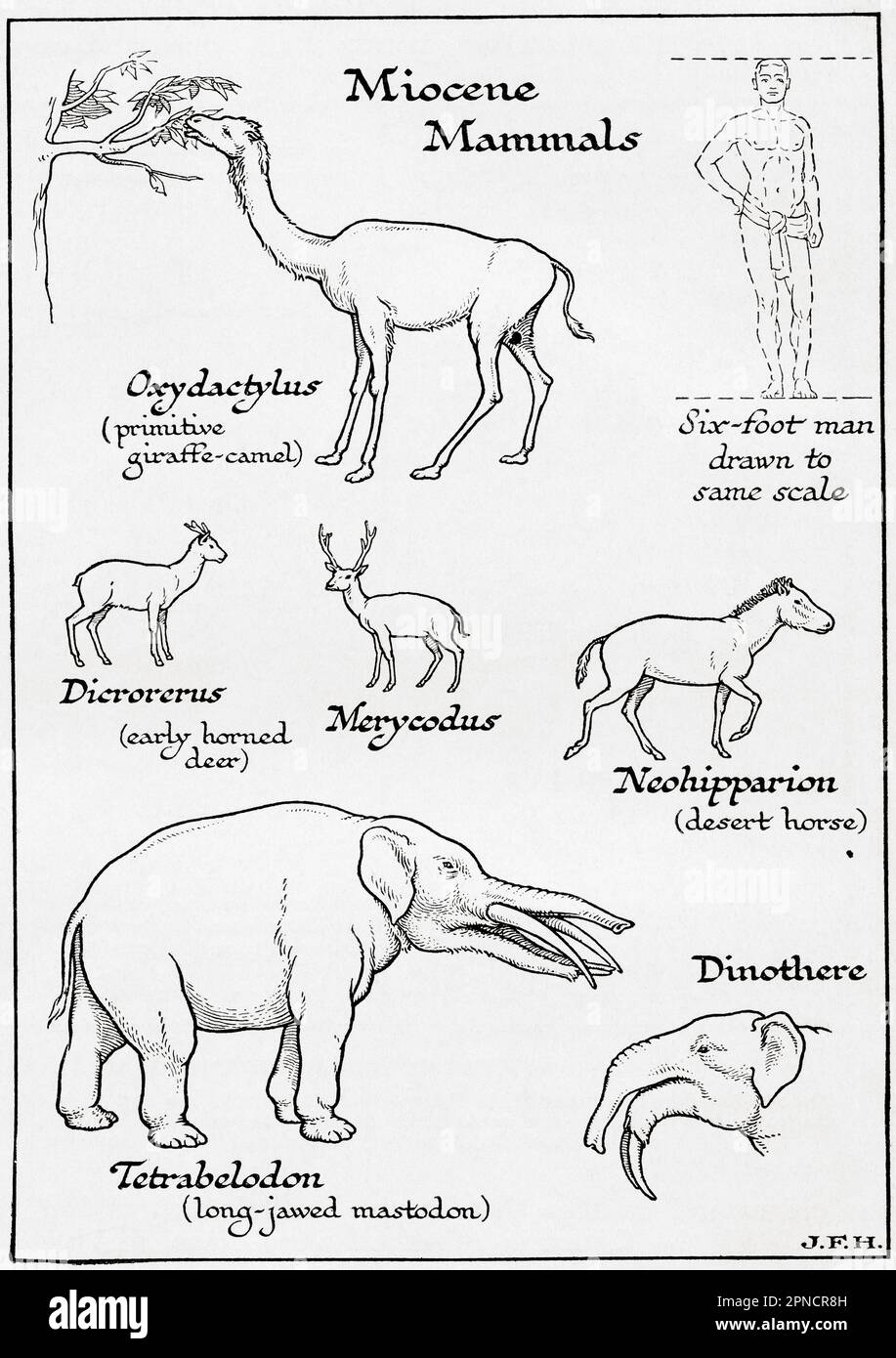 Diagram of Miocene Mammals including, Oxcydactylus, Dicrorerus, Merycodus, Neohipparion, Tetrabelodon and Dinothere. Shown in the diagram a six foot man drawn to the same scale as other figures. From the book Outline of History by H.G. Wells, published 1920. Stock Photohttps://www.alamy.com/image-license-details/?v=1https://www.alamy.com/diagram-of-miocene-mammals-including-oxcydactylus-dicrorerus-merycodus-neohipparion-tetrabelodon-and-dinothere-shown-in-the-diagram-a-six-foot-man-drawn-to-the-same-scale-as-other-figures-from-the-book-outline-of-history-by-hg-wells-published-1920-image546710881.html
Diagram of Miocene Mammals including, Oxcydactylus, Dicrorerus, Merycodus, Neohipparion, Tetrabelodon and Dinothere. Shown in the diagram a six foot man drawn to the same scale as other figures. From the book Outline of History by H.G. Wells, published 1920. Stock Photohttps://www.alamy.com/image-license-details/?v=1https://www.alamy.com/diagram-of-miocene-mammals-including-oxcydactylus-dicrorerus-merycodus-neohipparion-tetrabelodon-and-dinothere-shown-in-the-diagram-a-six-foot-man-drawn-to-the-same-scale-as-other-figures-from-the-book-outline-of-history-by-hg-wells-published-1920-image546710881.htmlRM2PNCR8H–Diagram of Miocene Mammals including, Oxcydactylus, Dicrorerus, Merycodus, Neohipparion, Tetrabelodon and Dinothere. Shown in the diagram a six foot man drawn to the same scale as other figures. From the book Outline of History by H.G. Wells, published 1920.
 American mastodon (Mammut americanum) from the Pleistocene epoch of North America Stock Photohttps://www.alamy.com/image-license-details/?v=1https://www.alamy.com/stock-photo-american-mastodon-mammut-americanum-from-the-pleistocene-epoch-of-83060580.html
American mastodon (Mammut americanum) from the Pleistocene epoch of North America Stock Photohttps://www.alamy.com/image-license-details/?v=1https://www.alamy.com/stock-photo-american-mastodon-mammut-americanum-from-the-pleistocene-epoch-of-83060580.htmlRFER3MH8–American mastodon (Mammut americanum) from the Pleistocene epoch of North America
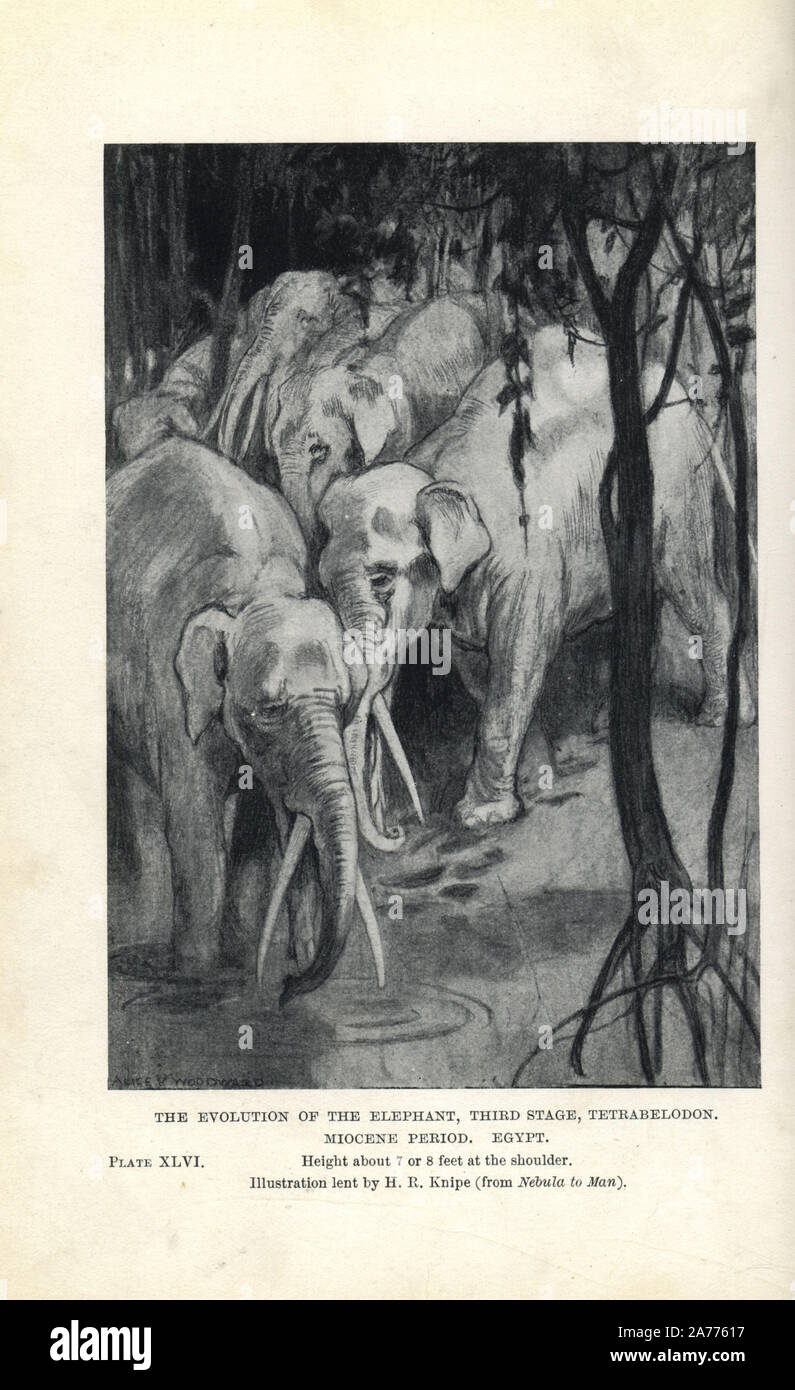 Gomphotherium (Tetrabelodon), third stage evolution of the elephant, Miocene, Egypt. Illustration by H.R. Knipe from H. N. Hutchinson's 'Extinct Monsters and Creatures of Other Days,' Chapman and Hall, London, 1894. Stock Photohttps://www.alamy.com/image-license-details/?v=1https://www.alamy.com/gomphotherium-tetrabelodon-third-stage-evolution-of-the-elephant-miocene-egypt-illustration-by-hr-knipe-from-h-n-hutchinsons-extinct-monsters-and-creatures-of-other-days-chapman-and-hall-london-1894-image331457987.html
Gomphotherium (Tetrabelodon), third stage evolution of the elephant, Miocene, Egypt. Illustration by H.R. Knipe from H. N. Hutchinson's 'Extinct Monsters and Creatures of Other Days,' Chapman and Hall, London, 1894. Stock Photohttps://www.alamy.com/image-license-details/?v=1https://www.alamy.com/gomphotherium-tetrabelodon-third-stage-evolution-of-the-elephant-miocene-egypt-illustration-by-hr-knipe-from-h-n-hutchinsons-extinct-monsters-and-creatures-of-other-days-chapman-and-hall-london-1894-image331457987.htmlRM2A77617–Gomphotherium (Tetrabelodon), third stage evolution of the elephant, Miocene, Egypt. Illustration by H.R. Knipe from H. N. Hutchinson's 'Extinct Monsters and Creatures of Other Days,' Chapman and Hall, London, 1894.
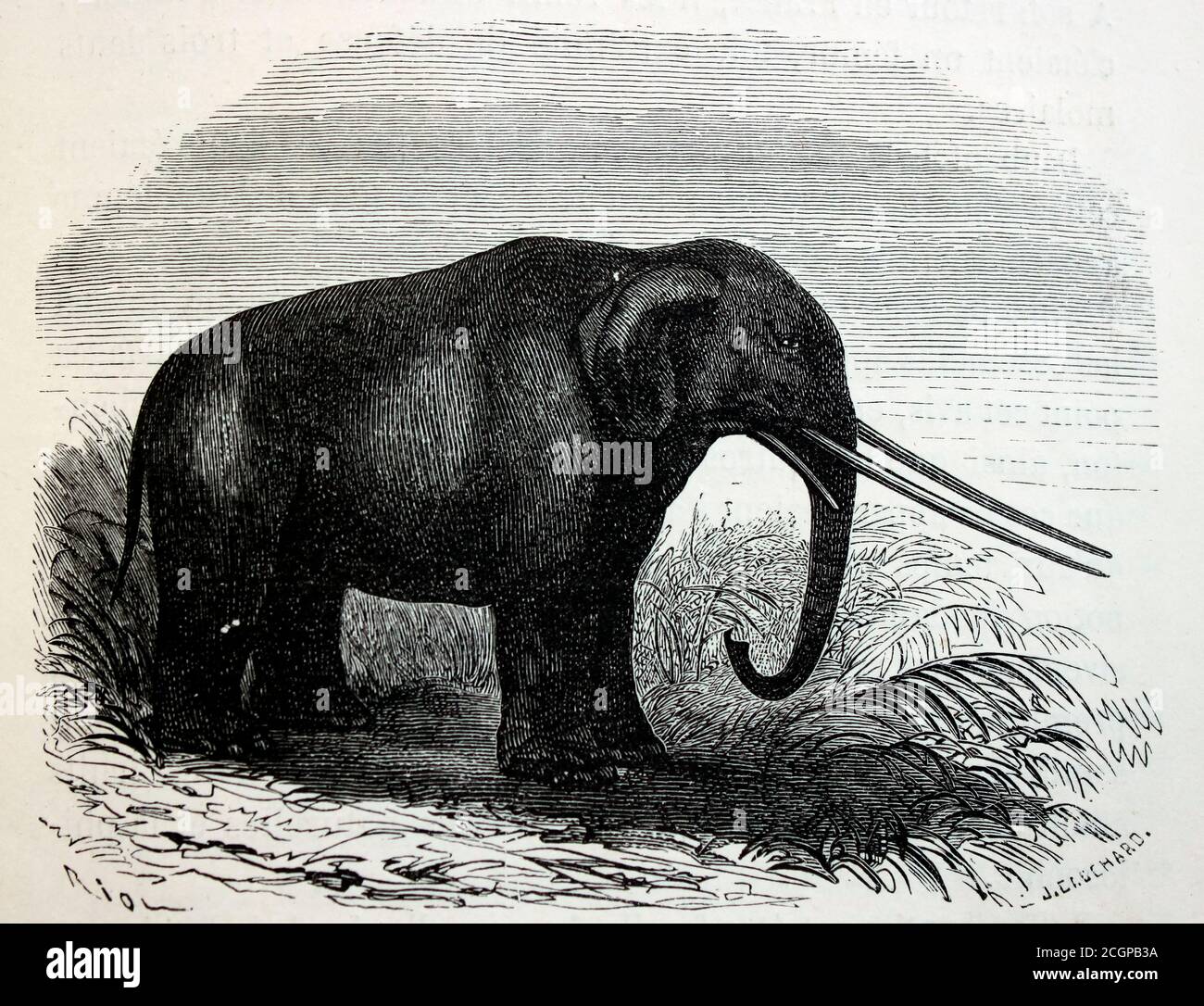 Illustration of a mastodon (Mastodon giganteus, now known as Mammut americanum), a pachyderm that lived in North America from the late Miocene to the Pleistocene, from Louis Figuier's The World Before the Deluge, 1867 American edition. Stock Photohttps://www.alamy.com/image-license-details/?v=1https://www.alamy.com/illustration-of-a-mastodon-mastodon-giganteus-now-known-as-mammut-americanum-a-pachyderm-that-lived-in-north-america-from-the-late-miocene-to-the-pleistocene-from-louis-figuiers-the-world-before-the-deluge-1867-american-edition-image371743886.html
Illustration of a mastodon (Mastodon giganteus, now known as Mammut americanum), a pachyderm that lived in North America from the late Miocene to the Pleistocene, from Louis Figuier's The World Before the Deluge, 1867 American edition. Stock Photohttps://www.alamy.com/image-license-details/?v=1https://www.alamy.com/illustration-of-a-mastodon-mastodon-giganteus-now-known-as-mammut-americanum-a-pachyderm-that-lived-in-north-america-from-the-late-miocene-to-the-pleistocene-from-louis-figuiers-the-world-before-the-deluge-1867-american-edition-image371743886.htmlRF2CGPB3A–Illustration of a mastodon (Mastodon giganteus, now known as Mammut americanum), a pachyderm that lived in North America from the late Miocene to the Pleistocene, from Louis Figuier's The World Before the Deluge, 1867 American edition.
 Dinotherium or Hoe Tusker or Dinotherium giganteum, vintage engraving. Old engraved illustration of a Dinotherium. Stock Vectorhttps://www.alamy.com/image-license-details/?v=1https://www.alamy.com/stock-photo-dinotherium-or-hoe-tusker-or-dinotherium-giganteum-vintage-engraving-84428059.html
Dinotherium or Hoe Tusker or Dinotherium giganteum, vintage engraving. Old engraved illustration of a Dinotherium. Stock Vectorhttps://www.alamy.com/image-license-details/?v=1https://www.alamy.com/stock-photo-dinotherium-or-hoe-tusker-or-dinotherium-giganteum-vintage-engraving-84428059.htmlRFEWA0RR–Dinotherium or Hoe Tusker or Dinotherium giganteum, vintage engraving. Old engraved illustration of a Dinotherium.
RF2J669D6–black and white icon, prehistoric animal
 A herd of Deinotherium mammals head to a watering hole in the Pleistocene Period of Africa. Stock Photohttps://www.alamy.com/image-license-details/?v=1https://www.alamy.com/a-herd-of-deinotherium-mammals-head-to-a-watering-hole-in-the-pleistocene-period-of-africa-image443883666.html
A herd of Deinotherium mammals head to a watering hole in the Pleistocene Period of Africa. Stock Photohttps://www.alamy.com/image-license-details/?v=1https://www.alamy.com/a-herd-of-deinotherium-mammals-head-to-a-watering-hole-in-the-pleistocene-period-of-africa-image443883666.htmlRF2GP4J42–A herd of Deinotherium mammals head to a watering hole in the Pleistocene Period of Africa.
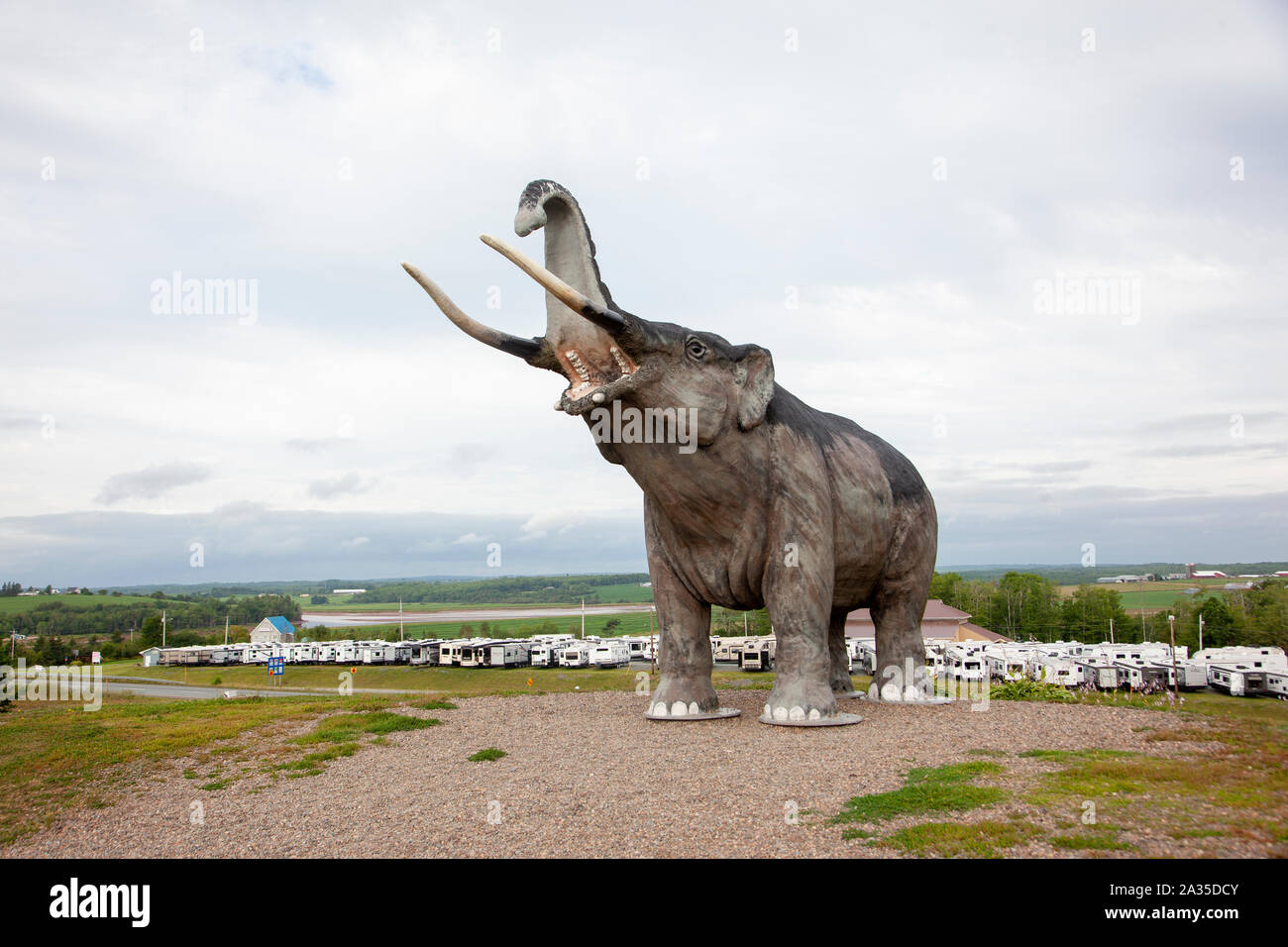 August 18, 2019 - Stewiacke, Nova Scotia - the landmark Mastadon Ridge or chicken hill in Nova Scotia with Pine Acres rv in background Stock Photohttps://www.alamy.com/image-license-details/?v=1https://www.alamy.com/august-18-2019-stewiacke-nova-scotia-the-landmark-mastadon-ridge-or-chicken-hill-in-nova-scotia-with-pine-acres-rv-in-background-image328961275.html
August 18, 2019 - Stewiacke, Nova Scotia - the landmark Mastadon Ridge or chicken hill in Nova Scotia with Pine Acres rv in background Stock Photohttps://www.alamy.com/image-license-details/?v=1https://www.alamy.com/august-18-2019-stewiacke-nova-scotia-the-landmark-mastadon-ridge-or-chicken-hill-in-nova-scotia-with-pine-acres-rv-in-background-image328961275.htmlRF2A35DCY–August 18, 2019 - Stewiacke, Nova Scotia - the landmark Mastadon Ridge or chicken hill in Nova Scotia with Pine Acres rv in background
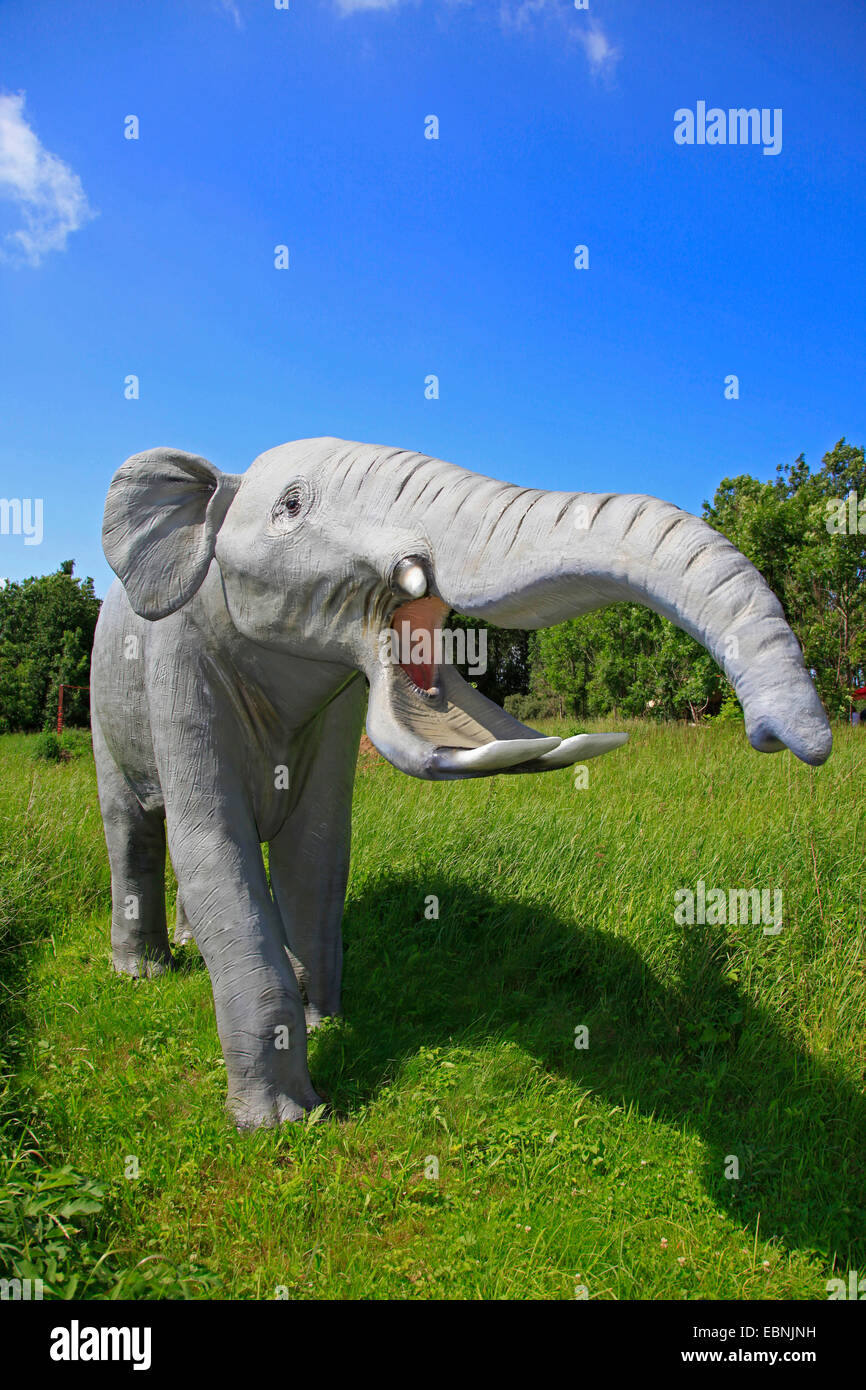 Platybelodon (Platybelodon), primitiv extinct elephant Stock Photohttps://www.alamy.com/image-license-details/?v=1https://www.alamy.com/stock-photo-platybelodon-platybelodon-primitiv-extinct-elephant-76078397.html
Platybelodon (Platybelodon), primitiv extinct elephant Stock Photohttps://www.alamy.com/image-license-details/?v=1https://www.alamy.com/stock-photo-platybelodon-platybelodon-primitiv-extinct-elephant-76078397.htmlRMEBNJNH–Platybelodon (Platybelodon), primitiv extinct elephant
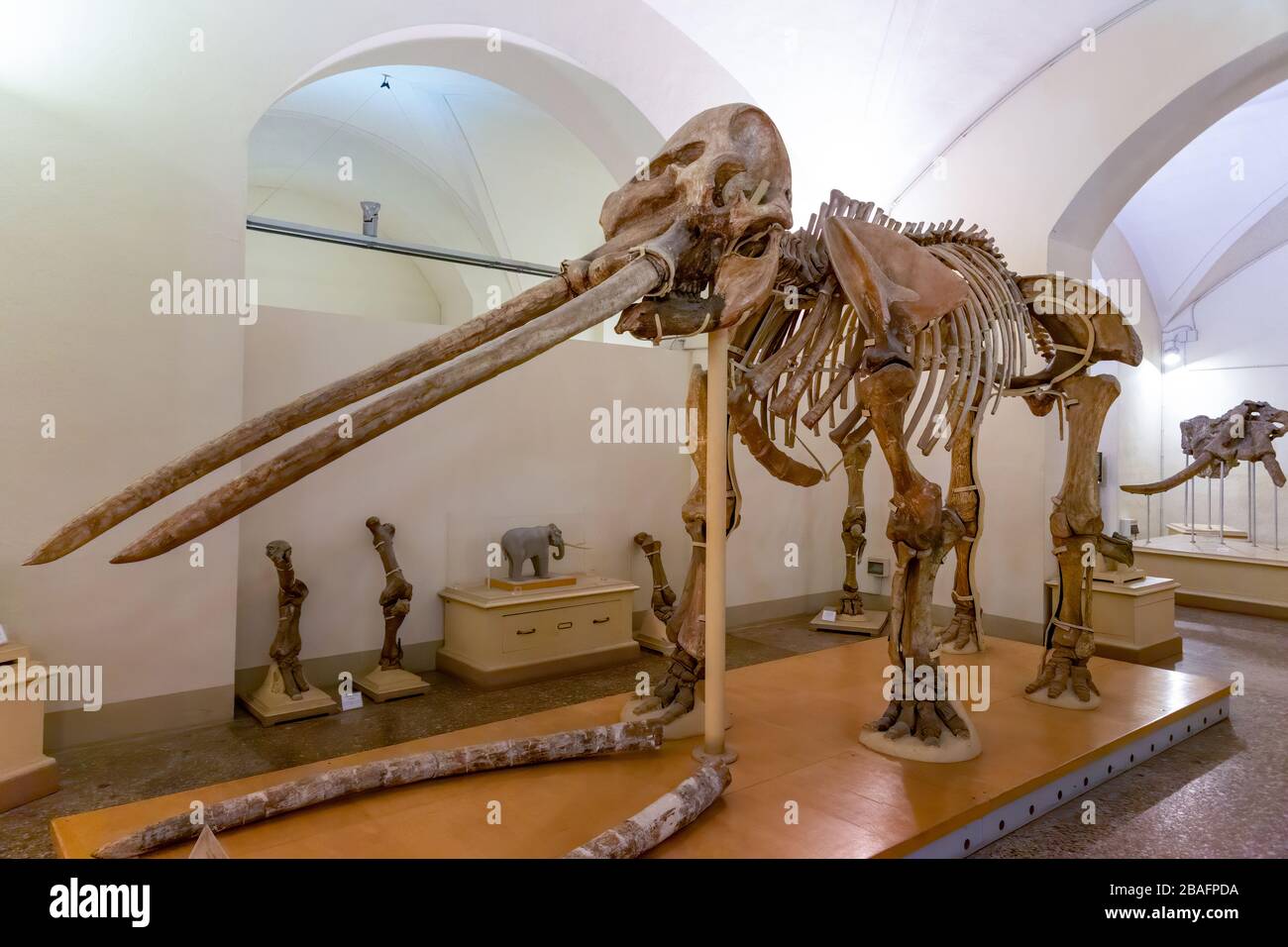 Florence, Italy - August 13 2019: Skeleton of an Anancus arvernensis, a prehistoric Mastodon nicknamed Pippo, found in Tuscany in 1825 Stock Photohttps://www.alamy.com/image-license-details/?v=1https://www.alamy.com/florence-italy-august-13-2019-skeleton-of-an-anancus-arvernensis-a-prehistoric-mastodon-nicknamed-pippo-found-in-tuscany-in-1825-image350700822.html
Florence, Italy - August 13 2019: Skeleton of an Anancus arvernensis, a prehistoric Mastodon nicknamed Pippo, found in Tuscany in 1825 Stock Photohttps://www.alamy.com/image-license-details/?v=1https://www.alamy.com/florence-italy-august-13-2019-skeleton-of-an-anancus-arvernensis-a-prehistoric-mastodon-nicknamed-pippo-found-in-tuscany-in-1825-image350700822.htmlRM2BAFPDA–Florence, Italy - August 13 2019: Skeleton of an Anancus arvernensis, a prehistoric Mastodon nicknamed Pippo, found in Tuscany in 1825
 Dinotherium or Hoe Tusker or Dinotherium giganteum, vintage engraving. Old engraved illustration of a Dinotherium. Stock Photohttps://www.alamy.com/image-license-details/?v=1https://www.alamy.com/stock-photo-dinotherium-or-hoe-tusker-or-dinotherium-giganteum-vintage-engraving-38936691.html
Dinotherium or Hoe Tusker or Dinotherium giganteum, vintage engraving. Old engraved illustration of a Dinotherium. Stock Photohttps://www.alamy.com/image-license-details/?v=1https://www.alamy.com/stock-photo-dinotherium-or-hoe-tusker-or-dinotherium-giganteum-vintage-engraving-38936691.htmlRFC79M43–Dinotherium or Hoe Tusker or Dinotherium giganteum, vintage engraving. Old engraved illustration of a Dinotherium.
 Azov, Russia - July 27, 2019: Skull of the trogonterium (steppe) mammoth. Exhibit of the Azov Paleontological Museum. Stock Photohttps://www.alamy.com/image-license-details/?v=1https://www.alamy.com/azov-russia-july-27-2019-skull-of-the-trogonterium-steppe-mammoth-exhibit-of-the-azov-paleontological-museum-image337366922.html
Azov, Russia - July 27, 2019: Skull of the trogonterium (steppe) mammoth. Exhibit of the Azov Paleontological Museum. Stock Photohttps://www.alamy.com/image-license-details/?v=1https://www.alamy.com/azov-russia-july-27-2019-skull-of-the-trogonterium-steppe-mammoth-exhibit-of-the-azov-paleontological-museum-image337366922.htmlRF2AGTAXJ–Azov, Russia - July 27, 2019: Skull of the trogonterium (steppe) mammoth. Exhibit of the Azov Paleontological Museum.
 A herd of stegotetrabelodons foraging on the shore. Stegotetrabelodon is an extinct, four tusked, prehistoric cousin of the elephant Stock Photohttps://www.alamy.com/image-license-details/?v=1https://www.alamy.com/a-herd-of-stegotetrabelodons-foraging-on-the-shore-stegotetrabelodon-is-an-extinct-four-tusked-prehistoric-cousin-of-the-elephant-image368720247.html
A herd of stegotetrabelodons foraging on the shore. Stegotetrabelodon is an extinct, four tusked, prehistoric cousin of the elephant Stock Photohttps://www.alamy.com/image-license-details/?v=1https://www.alamy.com/a-herd-of-stegotetrabelodons-foraging-on-the-shore-stegotetrabelodon-is-an-extinct-four-tusked-prehistoric-cousin-of-the-elephant-image368720247.htmlRF2CBTJC7–A herd of stegotetrabelodons foraging on the shore. Stegotetrabelodon is an extinct, four tusked, prehistoric cousin of the elephant
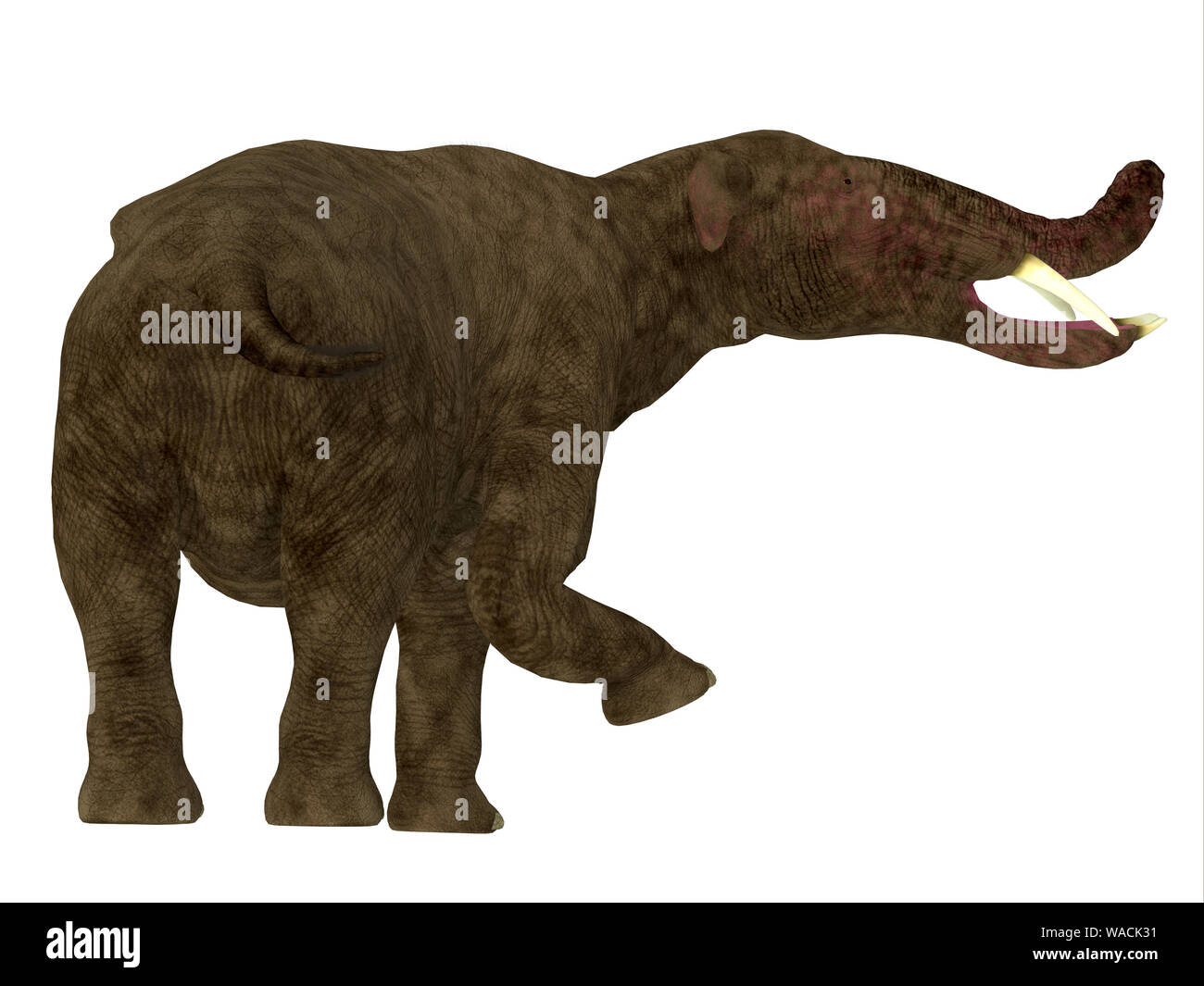 Platybelodon was herbivorous elephant mammal that lived in Africa, Europe and North America during the Miocene and Pleistocene Periods. Stock Photohttps://www.alamy.com/image-license-details/?v=1https://www.alamy.com/platybelodon-was-herbivorous-elephant-mammal-that-lived-in-africa-europe-and-north-america-during-the-miocene-and-pleistocene-periods-image264580485.html
Platybelodon was herbivorous elephant mammal that lived in Africa, Europe and North America during the Miocene and Pleistocene Periods. Stock Photohttps://www.alamy.com/image-license-details/?v=1https://www.alamy.com/platybelodon-was-herbivorous-elephant-mammal-that-lived-in-africa-europe-and-north-america-during-the-miocene-and-pleistocene-periods-image264580485.htmlRFWACK31–Platybelodon was herbivorous elephant mammal that lived in Africa, Europe and North America during the Miocene and Pleistocene Periods.
 Several giraffes drinking water at a waterhole near the camp Savute Elephant Camp by Orient Express in Botswna in Chobe National Stock Photohttps://www.alamy.com/image-license-details/?v=1https://www.alamy.com/several-giraffes-drinking-water-at-a-waterhole-near-the-camp-savute-image65948225.html
Several giraffes drinking water at a waterhole near the camp Savute Elephant Camp by Orient Express in Botswna in Chobe National Stock Photohttps://www.alamy.com/image-license-details/?v=1https://www.alamy.com/several-giraffes-drinking-water-at-a-waterhole-near-the-camp-savute-image65948225.htmlRMDR85HN–Several giraffes drinking water at a waterhole near the camp Savute Elephant Camp by Orient Express in Botswna in Chobe National
 Platybelodon was herbivorous elephant mammal that lived in Africa, Europe and North America during the Miocene and Pleistocene Periods. Stock Photohttps://www.alamy.com/image-license-details/?v=1https://www.alamy.com/platybelodon-was-herbivorous-elephant-mammal-that-lived-in-africa-europe-and-north-america-during-the-miocene-and-pleistocene-periods-image600438573.html
Platybelodon was herbivorous elephant mammal that lived in Africa, Europe and North America during the Miocene and Pleistocene Periods. Stock Photohttps://www.alamy.com/image-license-details/?v=1https://www.alamy.com/platybelodon-was-herbivorous-elephant-mammal-that-lived-in-africa-europe-and-north-america-during-the-miocene-and-pleistocene-periods-image600438573.htmlRF2WTT9EN–Platybelodon was herbivorous elephant mammal that lived in Africa, Europe and North America during the Miocene and Pleistocene Periods.
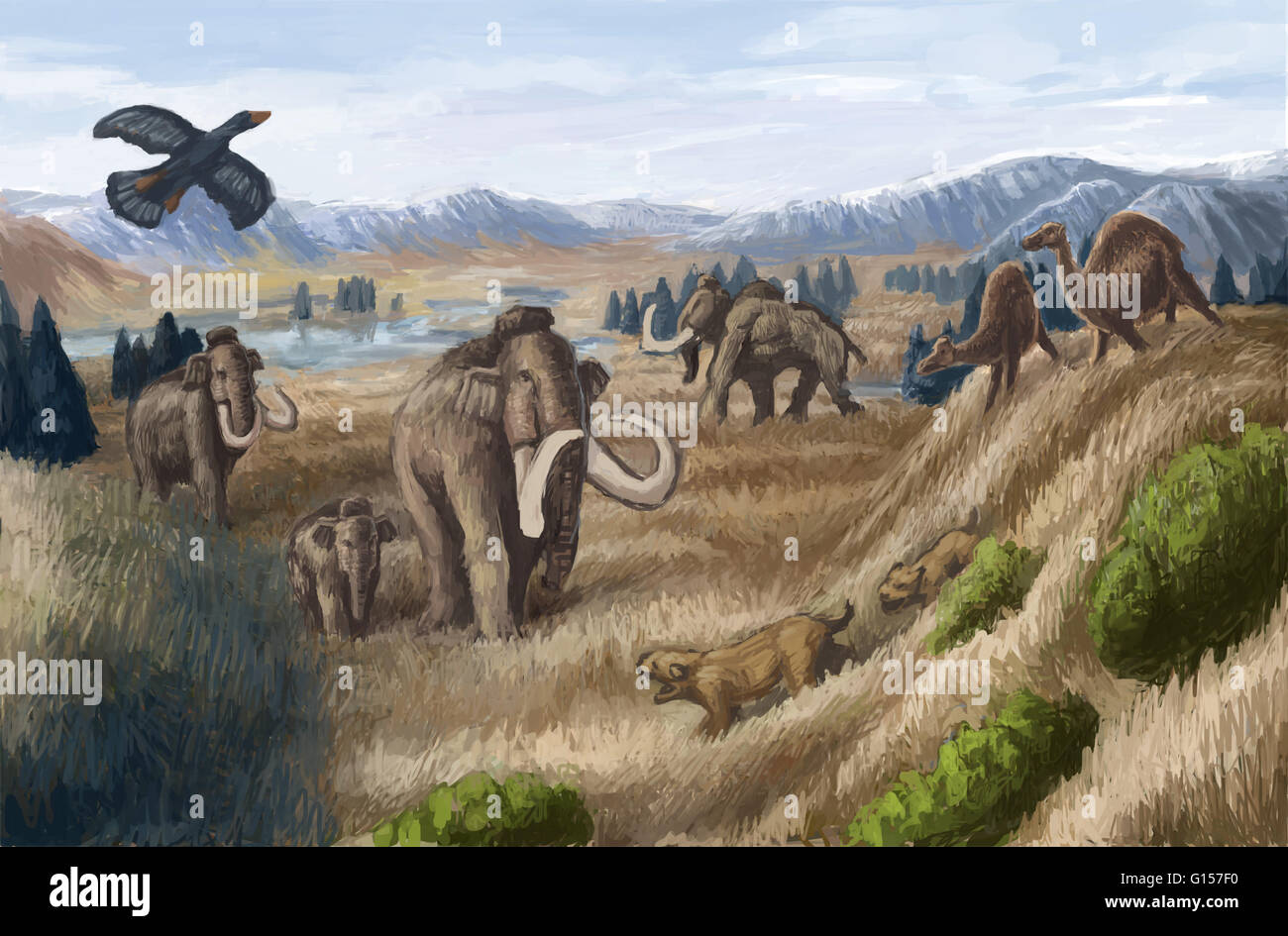 Artist's impression of a Tertiary period landscape. This period extended from 65 to about 2 million years ago and is divided into five epochs: the Paleocene, Eocene, Oligocene, Miocene and Pliocene. Dinosaurs died out early on in the Tertiary and mammals Stock Photohttps://www.alamy.com/image-license-details/?v=1https://www.alamy.com/stock-photo-artists-impression-of-a-tertiary-period-landscape-this-period-extended-103992532.html
Artist's impression of a Tertiary period landscape. This period extended from 65 to about 2 million years ago and is divided into five epochs: the Paleocene, Eocene, Oligocene, Miocene and Pliocene. Dinosaurs died out early on in the Tertiary and mammals Stock Photohttps://www.alamy.com/image-license-details/?v=1https://www.alamy.com/stock-photo-artists-impression-of-a-tertiary-period-landscape-this-period-extended-103992532.htmlRMG157F0–Artist's impression of a Tertiary period landscape. This period extended from 65 to about 2 million years ago and is divided into five epochs: the Paleocene, Eocene, Oligocene, Miocene and Pliocene. Dinosaurs died out early on in the Tertiary and mammals
 Deinotherium Mammal - Deinotherium was an elephant mammal that lived in Asia, Africa and Europe during the Miocene and Pleistocene Period. Stock Photohttps://www.alamy.com/image-license-details/?v=1https://www.alamy.com/deinotherium-mammal-deinotherium-was-an-elephant-mammal-that-lived-in-asia-africa-and-europe-during-the-miocene-and-pleistocene-period-image223012528.html
Deinotherium Mammal - Deinotherium was an elephant mammal that lived in Asia, Africa and Europe during the Miocene and Pleistocene Period. Stock Photohttps://www.alamy.com/image-license-details/?v=1https://www.alamy.com/deinotherium-mammal-deinotherium-was-an-elephant-mammal-that-lived-in-asia-africa-and-europe-during-the-miocene-and-pleistocene-period-image223012528.htmlRFPXR2N4–Deinotherium Mammal - Deinotherium was an elephant mammal that lived in Asia, Africa and Europe during the Miocene and Pleistocene Period.
 Deinotherium was an enormous land mammal that lived in Asia, Africa and Europe during the Miocene to Pleistocene Periods. Stock Photohttps://www.alamy.com/image-license-details/?v=1https://www.alamy.com/deinotherium-was-an-enormous-land-mammal-that-lived-in-asia-africa-and-europe-during-the-miocene-to-pleistocene-periods-image385887527.html
Deinotherium was an enormous land mammal that lived in Asia, Africa and Europe during the Miocene to Pleistocene Periods. Stock Photohttps://www.alamy.com/image-license-details/?v=1https://www.alamy.com/deinotherium-was-an-enormous-land-mammal-that-lived-in-asia-africa-and-europe-during-the-miocene-to-pleistocene-periods-image385887527.htmlRF2DBPKDB–Deinotherium was an enormous land mammal that lived in Asia, Africa and Europe during the Miocene to Pleistocene Periods.
 ideal landscape of the pliocene period valley river tropical shore bank forest woodland grass land animal animals hippo elephant Stock Photohttps://www.alamy.com/image-license-details/?v=1https://www.alamy.com/stock-photo-ideal-landscape-of-the-pliocene-period-valley-river-tropical-shore-23004820.html
ideal landscape of the pliocene period valley river tropical shore bank forest woodland grass land animal animals hippo elephant Stock Photohttps://www.alamy.com/image-license-details/?v=1https://www.alamy.com/stock-photo-ideal-landscape-of-the-pliocene-period-valley-river-tropical-shore-23004820.htmlRFB9BXTM–ideal landscape of the pliocene period valley river tropical shore bank forest woodland grass land animal animals hippo elephant
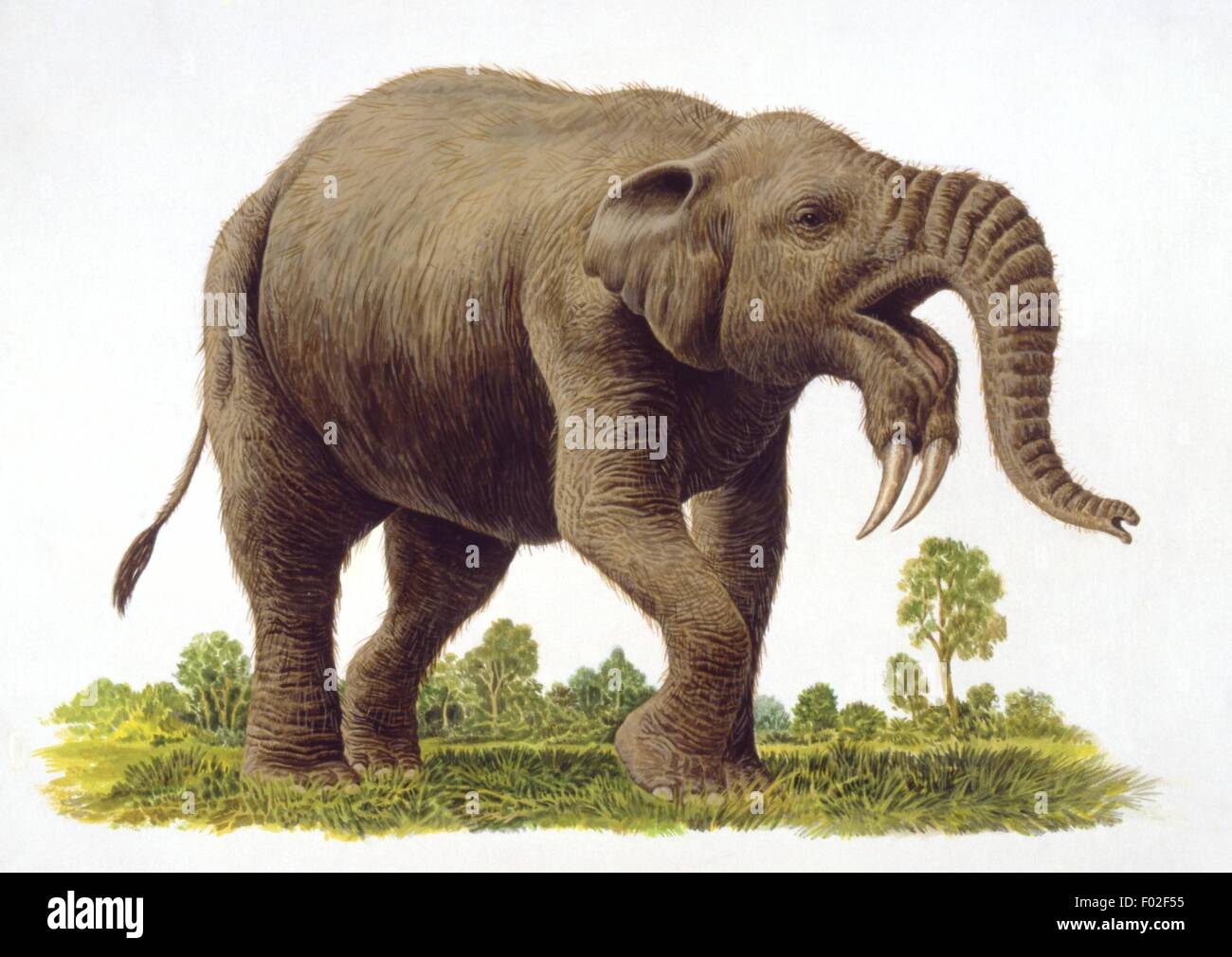 Palaeozoology - Miocene/Pleistocene period - Fossil mammals - Deinotherium (Proboscideans) - Art work by P. Hood Stock Photohttps://www.alamy.com/image-license-details/?v=1https://www.alamy.com/stock-photo-palaeozoology-miocenepleistocene-period-fossil-mammals-deinotherium-86107649.html
Palaeozoology - Miocene/Pleistocene period - Fossil mammals - Deinotherium (Proboscideans) - Art work by P. Hood Stock Photohttps://www.alamy.com/image-license-details/?v=1https://www.alamy.com/stock-photo-palaeozoology-miocenepleistocene-period-fossil-mammals-deinotherium-86107649.htmlRMF02F55–Palaeozoology - Miocene/Pleistocene period - Fossil mammals - Deinotherium (Proboscideans) - Art work by P. Hood
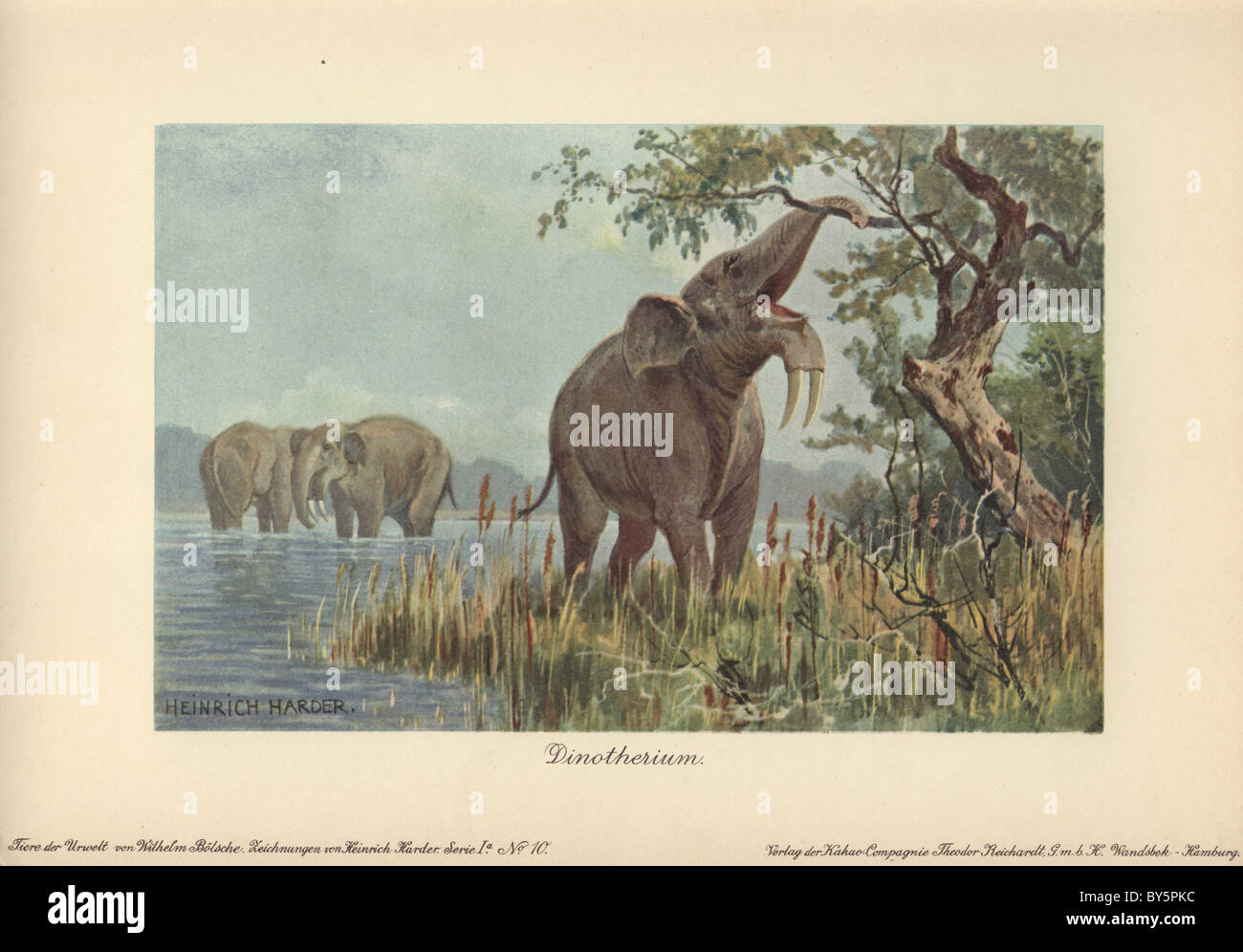 Dinotherium (Deinotherium giganteum), prehistoric relative to the elephant, Stock Photohttps://www.alamy.com/image-license-details/?v=1https://www.alamy.com/stock-photo-dinotherium-deinotherium-giganteum-prehistoric-relative-to-the-elephant-33933632.html
Dinotherium (Deinotherium giganteum), prehistoric relative to the elephant, Stock Photohttps://www.alamy.com/image-license-details/?v=1https://www.alamy.com/stock-photo-dinotherium-deinotherium-giganteum-prehistoric-relative-to-the-elephant-33933632.htmlRMBY5PKC–Dinotherium (Deinotherium giganteum), prehistoric relative to the elephant,
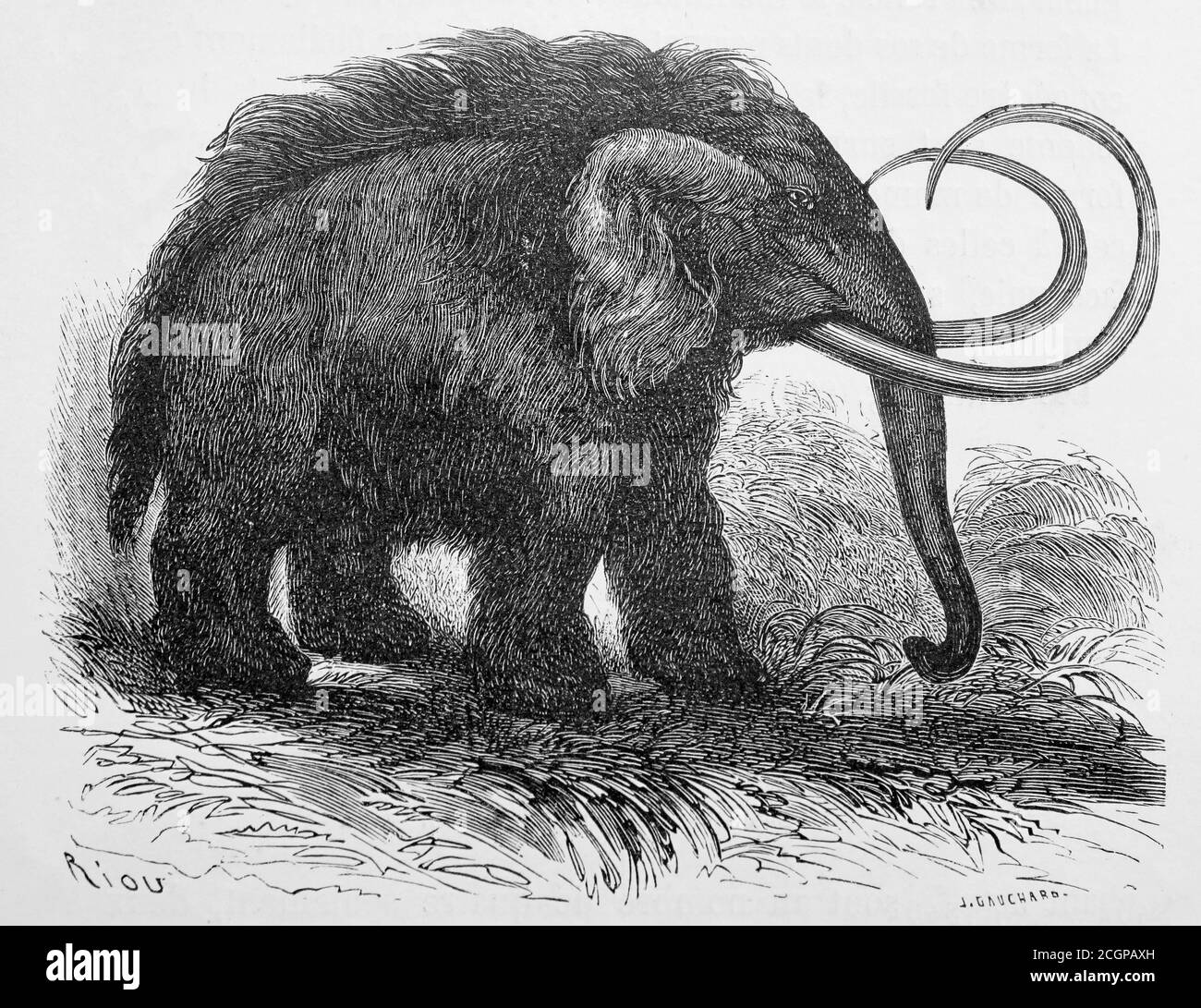 Illustration of a woolly mammoth (Elephas primigenius, now Mammuthus primigenius), from Louis Figuier's The World Before the Deluge, 1867 by Eduard Riou Stock Photohttps://www.alamy.com/image-license-details/?v=1https://www.alamy.com/illustration-of-a-woolly-mammoth-elephas-primigenius-now-mammuthus-primigenius-from-louis-figuiers-the-world-before-the-deluge-1867-by-eduard-riou-image371743753.html
Illustration of a woolly mammoth (Elephas primigenius, now Mammuthus primigenius), from Louis Figuier's The World Before the Deluge, 1867 by Eduard Riou Stock Photohttps://www.alamy.com/image-license-details/?v=1https://www.alamy.com/illustration-of-a-woolly-mammoth-elephas-primigenius-now-mammuthus-primigenius-from-louis-figuiers-the-world-before-the-deluge-1867-by-eduard-riou-image371743753.htmlRF2CGPAXH–Illustration of a woolly mammoth (Elephas primigenius, now Mammuthus primigenius), from Louis Figuier's The World Before the Deluge, 1867 by Eduard Riou
 Reconstruction of an extinct elephant with four tusks, Gomphotherium angustidens (Mastodon angustidens), Miocene Period. Print after an illustration by Joseph Smit from Henry Neville Hutchinsons Creatures of Other Days, Popular Studies in Palaeontology, Chapman and Hall, London, 1896. Stock Photohttps://www.alamy.com/image-license-details/?v=1https://www.alamy.com/reconstruction-of-an-extinct-elephant-with-four-tusks-gomphotherium-angustidens-mastodon-angustidens-miocene-period-print-after-an-illustration-by-joseph-smit-from-henry-neville-hutchinsons-creatures-of-other-days-popular-studies-in-palaeontology-chapman-and-hall-london-1896-image359080160.html
Reconstruction of an extinct elephant with four tusks, Gomphotherium angustidens (Mastodon angustidens), Miocene Period. Print after an illustration by Joseph Smit from Henry Neville Hutchinsons Creatures of Other Days, Popular Studies in Palaeontology, Chapman and Hall, London, 1896. Stock Photohttps://www.alamy.com/image-license-details/?v=1https://www.alamy.com/reconstruction-of-an-extinct-elephant-with-four-tusks-gomphotherium-angustidens-mastodon-angustidens-miocene-period-print-after-an-illustration-by-joseph-smit-from-henry-neville-hutchinsons-creatures-of-other-days-popular-studies-in-palaeontology-chapman-and-hall-london-1896-image359080160.htmlRM2BT5EBC–Reconstruction of an extinct elephant with four tusks, Gomphotherium angustidens (Mastodon angustidens), Miocene Period. Print after an illustration by Joseph Smit from Henry Neville Hutchinsons Creatures of Other Days, Popular Studies in Palaeontology, Chapman and Hall, London, 1896.
 Reconstruction of an extinct elephant with four tusks, Gomphotherium angustidens (Mastodon angustidens), Miocene Period. Print after an illustration by Joseph Smit from Henry Neville Hutchinson’s Creatures of Other Days, Popular Studies in Palaeontology, Chapman and Hall, London, 1896. Stock Photohttps://www.alamy.com/image-license-details/?v=1https://www.alamy.com/reconstruction-of-an-extinct-elephant-with-four-tusks-gomphotherium-angustidens-mastodon-angustidens-miocene-period-print-after-an-illustration-by-joseph-smit-from-henry-neville-hutchinsons-creatures-of-other-days-popular-studies-in-palaeontology-chapman-and-hall-london-1896-image330546032.html
Reconstruction of an extinct elephant with four tusks, Gomphotherium angustidens (Mastodon angustidens), Miocene Period. Print after an illustration by Joseph Smit from Henry Neville Hutchinson’s Creatures of Other Days, Popular Studies in Palaeontology, Chapman and Hall, London, 1896. Stock Photohttps://www.alamy.com/image-license-details/?v=1https://www.alamy.com/reconstruction-of-an-extinct-elephant-with-four-tusks-gomphotherium-angustidens-mastodon-angustidens-miocene-period-print-after-an-illustration-by-joseph-smit-from-henry-neville-hutchinsons-creatures-of-other-days-popular-studies-in-palaeontology-chapman-and-hall-london-1896-image330546032.htmlRM2A5NJRC–Reconstruction of an extinct elephant with four tusks, Gomphotherium angustidens (Mastodon angustidens), Miocene Period. Print after an illustration by Joseph Smit from Henry Neville Hutchinson’s Creatures of Other Days, Popular Studies in Palaeontology, Chapman and Hall, London, 1896.
 Jackal on dried elephant hide, Canis mesomalis Stock Photohttps://www.alamy.com/image-license-details/?v=1https://www.alamy.com/jackal-on-dried-elephant-hide-canis-mesomalis-image4909224.html
Jackal on dried elephant hide, Canis mesomalis Stock Photohttps://www.alamy.com/image-license-details/?v=1https://www.alamy.com/jackal-on-dried-elephant-hide-canis-mesomalis-image4909224.htmlRMAKMTA9–Jackal on dried elephant hide, Canis mesomalis
 An engraving depicting the restored skeleton of a Mastodon. Mastodons are any species of extinct proboscideans in the genus Mammut, distantly related to elephants, that inhabited North and Central America during the late Miocene or late Pliocene period. Dated 19th century Stock Photohttps://www.alamy.com/image-license-details/?v=1https://www.alamy.com/an-engraving-depicting-the-restored-skeleton-of-a-mastodon-mastodons-are-any-species-of-extinct-proboscideans-in-the-genus-mammut-distantly-related-to-elephants-that-inhabited-north-and-central-america-during-the-late-miocene-or-late-pliocene-period-dated-19th-century-image328366964.html
An engraving depicting the restored skeleton of a Mastodon. Mastodons are any species of extinct proboscideans in the genus Mammut, distantly related to elephants, that inhabited North and Central America during the late Miocene or late Pliocene period. Dated 19th century Stock Photohttps://www.alamy.com/image-license-details/?v=1https://www.alamy.com/an-engraving-depicting-the-restored-skeleton-of-a-mastodon-mastodons-are-any-species-of-extinct-proboscideans-in-the-genus-mammut-distantly-related-to-elephants-that-inhabited-north-and-central-america-during-the-late-miocene-or-late-pliocene-period-dated-19th-century-image328366964.htmlRM2A26BBG–An engraving depicting the restored skeleton of a Mastodon. Mastodons are any species of extinct proboscideans in the genus Mammut, distantly related to elephants, that inhabited North and Central America during the late Miocene or late Pliocene period. Dated 19th century
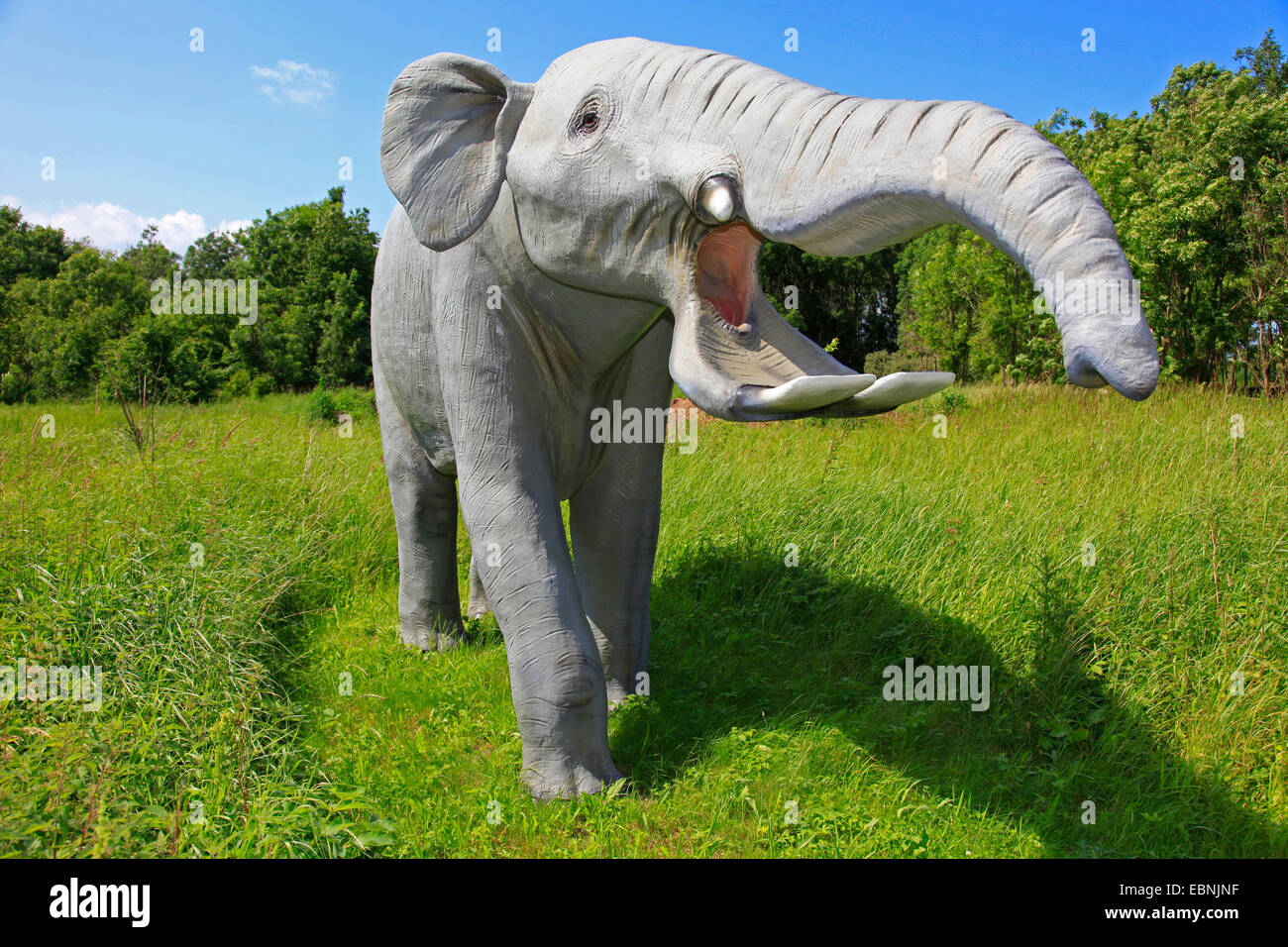 Platybelodon (Platybelodon), primitiv extinct elephant Stock Photohttps://www.alamy.com/image-license-details/?v=1https://www.alamy.com/stock-photo-platybelodon-platybelodon-primitiv-extinct-elephant-76078395.html
Platybelodon (Platybelodon), primitiv extinct elephant Stock Photohttps://www.alamy.com/image-license-details/?v=1https://www.alamy.com/stock-photo-platybelodon-platybelodon-primitiv-extinct-elephant-76078395.htmlRMEBNJNF–Platybelodon (Platybelodon), primitiv extinct elephant
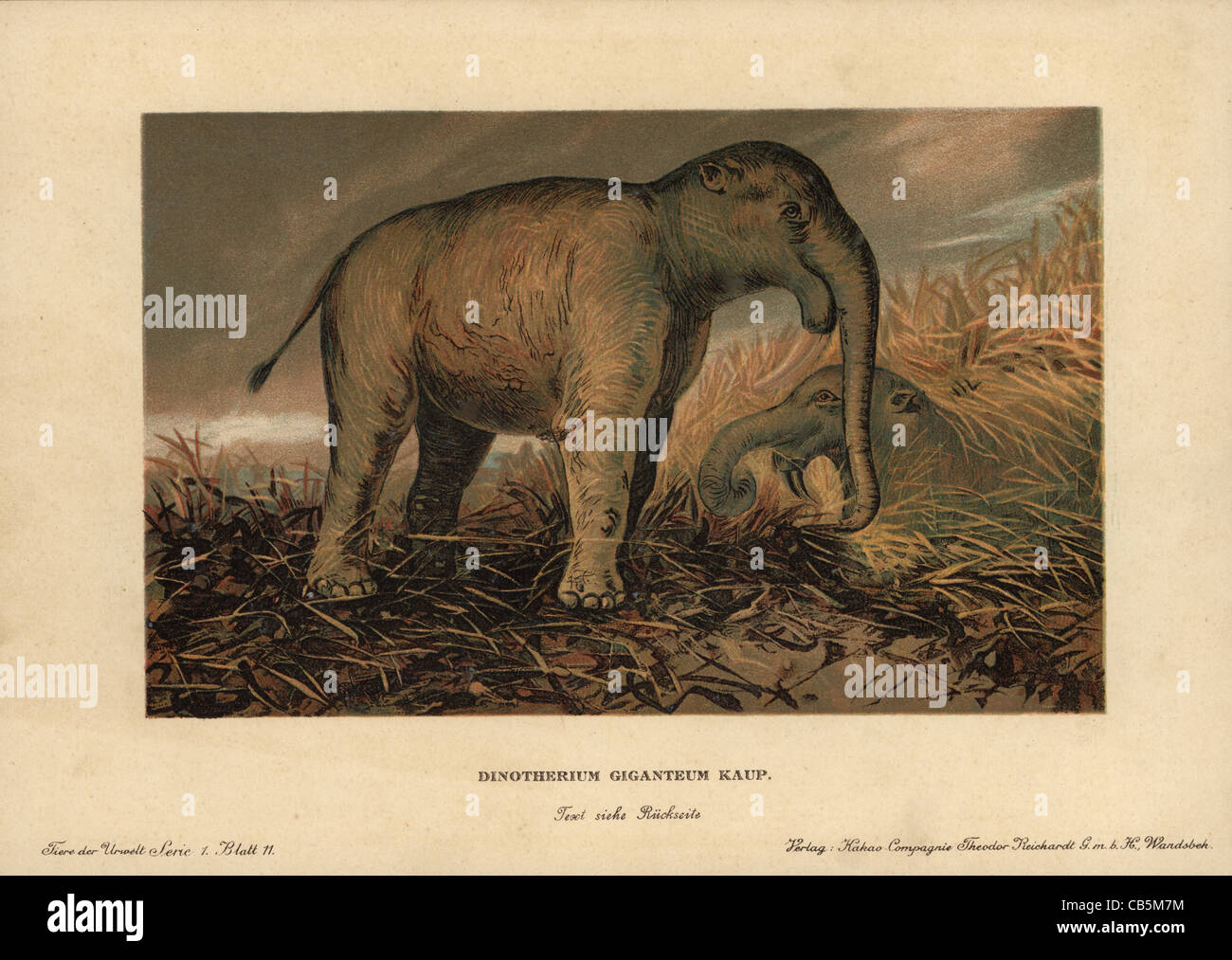 Deinotherium giganteum, large prehistoric relative of the elephant Stock Photohttps://www.alamy.com/image-license-details/?v=1https://www.alamy.com/stock-photo-deinotherium-giganteum-large-prehistoric-relative-of-the-elephant-41307608.html
Deinotherium giganteum, large prehistoric relative of the elephant Stock Photohttps://www.alamy.com/image-license-details/?v=1https://www.alamy.com/stock-photo-deinotherium-giganteum-large-prehistoric-relative-of-the-elephant-41307608.htmlRMCB5M7M–Deinotherium giganteum, large prehistoric relative of the elephant
 Platybelodon (Platybelodon), primitiv extinct elephant Stock Photohttps://www.alamy.com/image-license-details/?v=1https://www.alamy.com/stock-photo-platybelodon-platybelodon-primitiv-extinct-elephant-48860835.html
Platybelodon (Platybelodon), primitiv extinct elephant Stock Photohttps://www.alamy.com/image-license-details/?v=1https://www.alamy.com/stock-photo-platybelodon-platybelodon-primitiv-extinct-elephant-48860835.htmlRMCRDPDR–Platybelodon (Platybelodon), primitiv extinct elephant
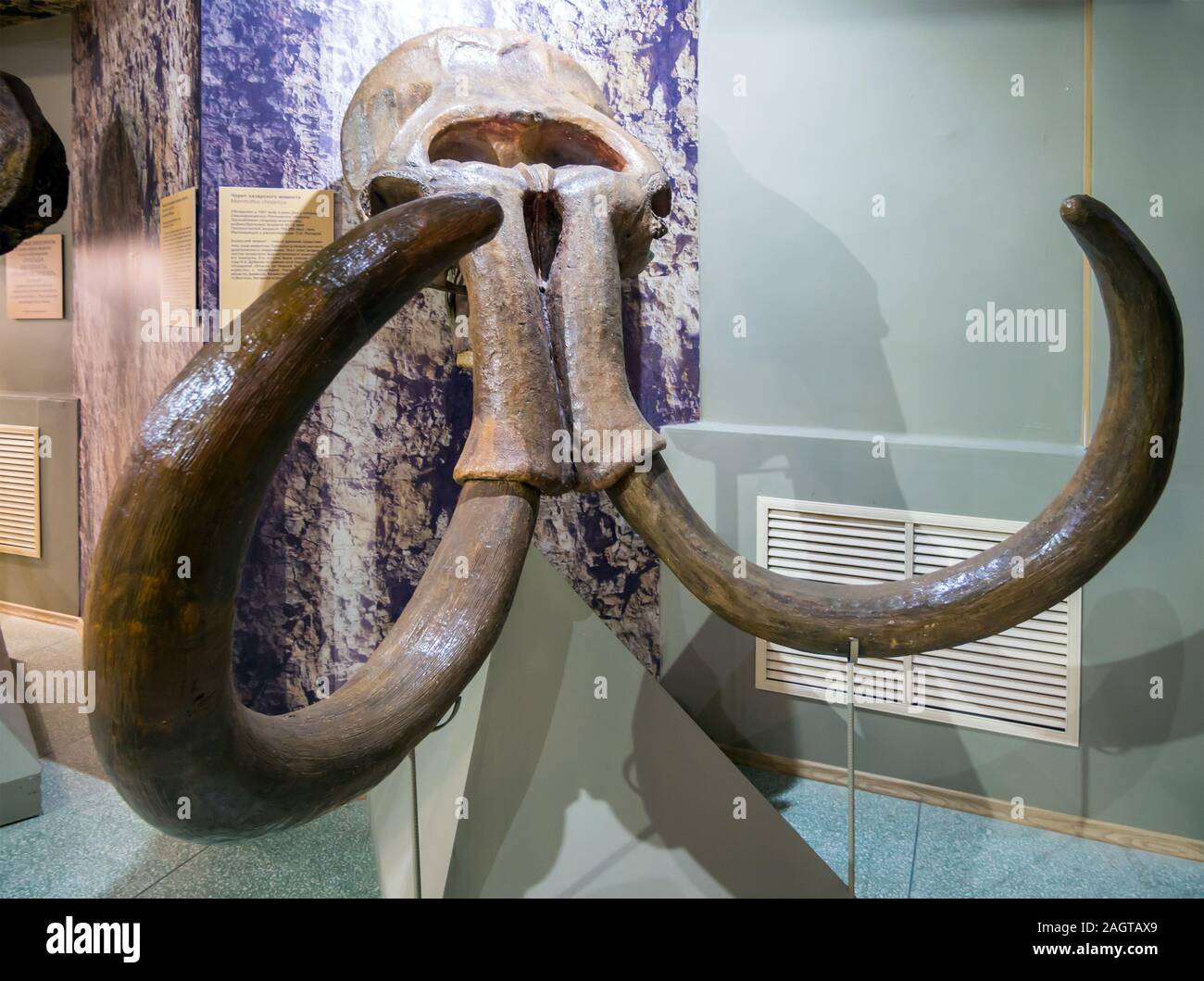 Azov, Russia - July 27, 2019: Skull of the Khazar mammoth. Exhibit of the Azov Historical Archeological and Paleontological Museum. Stock Photohttps://www.alamy.com/image-license-details/?v=1https://www.alamy.com/azov-russia-july-27-2019-skull-of-the-khazar-mammoth-exhibit-of-the-azov-historical-archeological-and-paleontological-museum-image337366913.html
Azov, Russia - July 27, 2019: Skull of the Khazar mammoth. Exhibit of the Azov Historical Archeological and Paleontological Museum. Stock Photohttps://www.alamy.com/image-license-details/?v=1https://www.alamy.com/azov-russia-july-27-2019-skull-of-the-khazar-mammoth-exhibit-of-the-azov-historical-archeological-and-paleontological-museum-image337366913.htmlRF2AGTAX9–Azov, Russia - July 27, 2019: Skull of the Khazar mammoth. Exhibit of the Azov Historical Archeological and Paleontological Museum.
 Stegotetrabelodon is an extinct, four tusked, prehistoric cousin of the elephant, a type of gomphothere of the Micoene. Depicted with no background. Stock Photohttps://www.alamy.com/image-license-details/?v=1https://www.alamy.com/stegotetrabelodon-is-an-extinct-four-tusked-prehistoric-cousin-of-the-elephant-a-type-of-gomphothere-of-the-micoene-depicted-with-no-background-image368720251.html
Stegotetrabelodon is an extinct, four tusked, prehistoric cousin of the elephant, a type of gomphothere of the Micoene. Depicted with no background. Stock Photohttps://www.alamy.com/image-license-details/?v=1https://www.alamy.com/stegotetrabelodon-is-an-extinct-four-tusked-prehistoric-cousin-of-the-elephant-a-type-of-gomphothere-of-the-micoene-depicted-with-no-background-image368720251.htmlRF2CBTJCB–Stegotetrabelodon is an extinct, four tusked, prehistoric cousin of the elephant, a type of gomphothere of the Micoene. Depicted with no background.
 Macroscelides rozeti, Print, The North African elephant shrew or North African sengi (Petrosaltator rozeti) is a species of elephant shrew in the family Macroscelididae. It is found in Algeria, Libya, Morocco, and Tunisia, and is the only extant afrotherian within its range. Recent phylogenetic analyses suggest that its status as the only extant member of its order north of the Sahara has resulted in a genetic split from the other Macroscelididae species. This split likely occurred during the Miocene period. In 2016, John Dumbacher and colleagues created a new genus, Petrosaltator, for this Stock Photohttps://www.alamy.com/image-license-details/?v=1https://www.alamy.com/macroscelides-rozeti-print-the-north-african-elephant-shrew-or-north-african-sengi-petrosaltator-rozeti-is-a-species-of-elephant-shrew-in-the-family-macroscelididae-it-is-found-in-algeria-libya-morocco-and-tunisia-and-is-the-only-extant-afrotherian-within-its-range-recent-phylogenetic-analyses-suggest-that-its-status-as-the-only-extant-member-of-its-order-north-of-the-sahara-has-resulted-in-a-genetic-split-from-the-other-macroscelididae-species-this-split-likely-occurred-during-the-miocene-period-in-2016-john-dumbacher-and-colleagues-created-a-new-genus-petrosaltator-for-this-image328687969.html
Macroscelides rozeti, Print, The North African elephant shrew or North African sengi (Petrosaltator rozeti) is a species of elephant shrew in the family Macroscelididae. It is found in Algeria, Libya, Morocco, and Tunisia, and is the only extant afrotherian within its range. Recent phylogenetic analyses suggest that its status as the only extant member of its order north of the Sahara has resulted in a genetic split from the other Macroscelididae species. This split likely occurred during the Miocene period. In 2016, John Dumbacher and colleagues created a new genus, Petrosaltator, for this Stock Photohttps://www.alamy.com/image-license-details/?v=1https://www.alamy.com/macroscelides-rozeti-print-the-north-african-elephant-shrew-or-north-african-sengi-petrosaltator-rozeti-is-a-species-of-elephant-shrew-in-the-family-macroscelididae-it-is-found-in-algeria-libya-morocco-and-tunisia-and-is-the-only-extant-afrotherian-within-its-range-recent-phylogenetic-analyses-suggest-that-its-status-as-the-only-extant-member-of-its-order-north-of-the-sahara-has-resulted-in-a-genetic-split-from-the-other-macroscelididae-species-this-split-likely-occurred-during-the-miocene-period-in-2016-john-dumbacher-and-colleagues-created-a-new-genus-petrosaltator-for-this-image328687969.htmlRM2A2N0T1–Macroscelides rozeti, Print, The North African elephant shrew or North African sengi (Petrosaltator rozeti) is a species of elephant shrew in the family Macroscelididae. It is found in Algeria, Libya, Morocco, and Tunisia, and is the only extant afrotherian within its range. Recent phylogenetic analyses suggest that its status as the only extant member of its order north of the Sahara has resulted in a genetic split from the other Macroscelididae species. This split likely occurred during the Miocene period. In 2016, John Dumbacher and colleagues created a new genus, Petrosaltator, for this
 Several giraffes drinking water at a waterhole near the camp Savute Elephant Camp by Orient Express in Botswna in Chobe National Stock Photohttps://www.alamy.com/image-license-details/?v=1https://www.alamy.com/several-giraffes-drinking-water-at-a-waterhole-near-the-camp-savute-image65952661.html
Several giraffes drinking water at a waterhole near the camp Savute Elephant Camp by Orient Express in Botswna in Chobe National Stock Photohttps://www.alamy.com/image-license-details/?v=1https://www.alamy.com/several-giraffes-drinking-water-at-a-waterhole-near-the-camp-savute-image65952661.htmlRMDR8B85–Several giraffes drinking water at a waterhole near the camp Savute Elephant Camp by Orient Express in Botswna in Chobe National
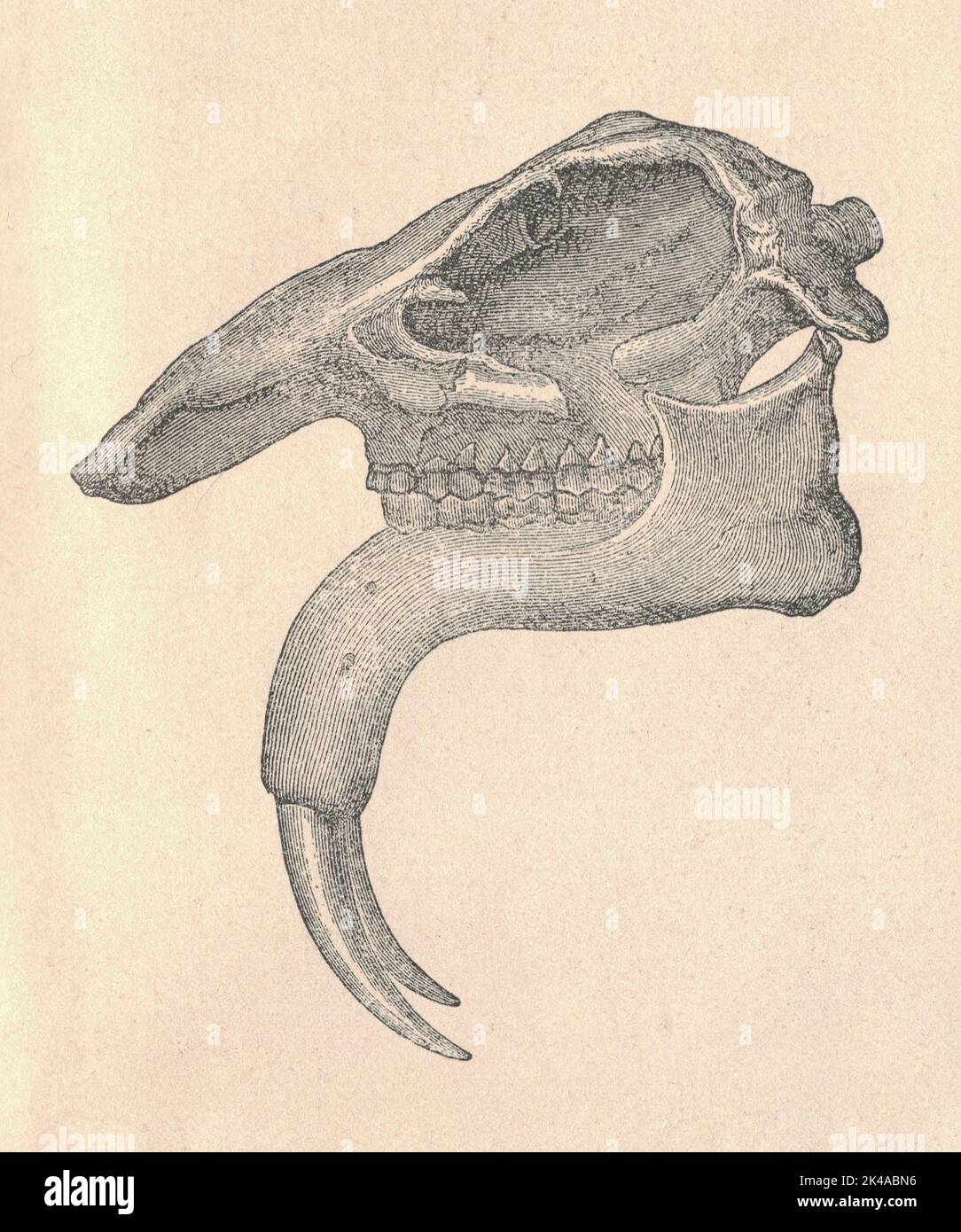 The deinotherium cranium. Antique engraved illustration of the deinotherium skull. Vintage illustration of the deinotherium skull. Antique engraved picture of the deinotherium cranium. Deinotherium was a large elephant-like proboscidean that appeared in the Middle Miocene and survived until the Early Pleistocene. Although superficially resembling modern elephants, they had notably more flexible necks, limbs adapted to a more cursorial lifestyle as well as tusks that curved downwards and back. In addition, their tusks didn't emerge from the maxilla as in elephants but from the mandible. Stock Photohttps://www.alamy.com/image-license-details/?v=1https://www.alamy.com/the-deinotherium-cranium-antique-engraved-illustration-of-the-deinotherium-skull-vintage-illustration-of-the-deinotherium-skull-antique-engraved-picture-of-the-deinotherium-cranium-deinotherium-was-a-large-elephant-like-proboscidean-that-appeared-in-the-middle-miocene-and-survived-until-the-early-pleistocene-although-superficially-resembling-modern-elephants-they-had-notably-more-flexible-necks-limbs-adapted-to-a-more-cursorial-lifestyle-as-well-as-tusks-that-curved-downwards-and-back-in-addition-their-tusks-didnt-emerge-from-the-maxilla-as-in-elephants-but-from-the-mandible-image484577666.html
The deinotherium cranium. Antique engraved illustration of the deinotherium skull. Vintage illustration of the deinotherium skull. Antique engraved picture of the deinotherium cranium. Deinotherium was a large elephant-like proboscidean that appeared in the Middle Miocene and survived until the Early Pleistocene. Although superficially resembling modern elephants, they had notably more flexible necks, limbs adapted to a more cursorial lifestyle as well as tusks that curved downwards and back. In addition, their tusks didn't emerge from the maxilla as in elephants but from the mandible. Stock Photohttps://www.alamy.com/image-license-details/?v=1https://www.alamy.com/the-deinotherium-cranium-antique-engraved-illustration-of-the-deinotherium-skull-vintage-illustration-of-the-deinotherium-skull-antique-engraved-picture-of-the-deinotherium-cranium-deinotherium-was-a-large-elephant-like-proboscidean-that-appeared-in-the-middle-miocene-and-survived-until-the-early-pleistocene-although-superficially-resembling-modern-elephants-they-had-notably-more-flexible-necks-limbs-adapted-to-a-more-cursorial-lifestyle-as-well-as-tusks-that-curved-downwards-and-back-in-addition-their-tusks-didnt-emerge-from-the-maxilla-as-in-elephants-but-from-the-mandible-image484577666.htmlRF2K4ABN6–The deinotherium cranium. Antique engraved illustration of the deinotherium skull. Vintage illustration of the deinotherium skull. Antique engraved picture of the deinotherium cranium. Deinotherium was a large elephant-like proboscidean that appeared in the Middle Miocene and survived until the Early Pleistocene. Although superficially resembling modern elephants, they had notably more flexible necks, limbs adapted to a more cursorial lifestyle as well as tusks that curved downwards and back. In addition, their tusks didn't emerge from the maxilla as in elephants but from the mandible.
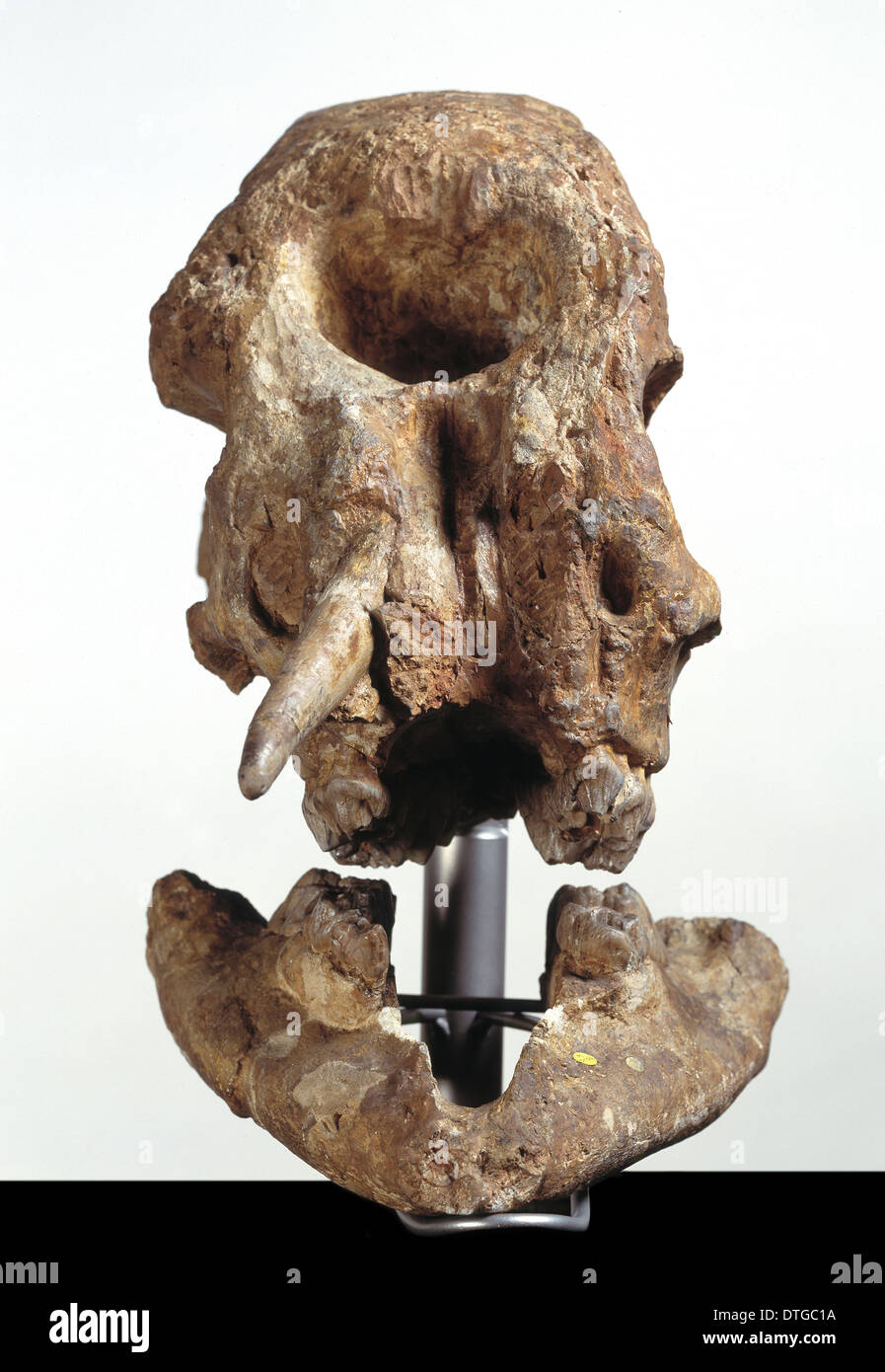 Zygolophodon atticus, mastodon Stock Photohttps://www.alamy.com/image-license-details/?v=1https://www.alamy.com/zygolophodon-atticus-mastodon-image66743526.html
Zygolophodon atticus, mastodon Stock Photohttps://www.alamy.com/image-license-details/?v=1https://www.alamy.com/zygolophodon-atticus-mastodon-image66743526.htmlRMDTGC1A–Zygolophodon atticus, mastodon
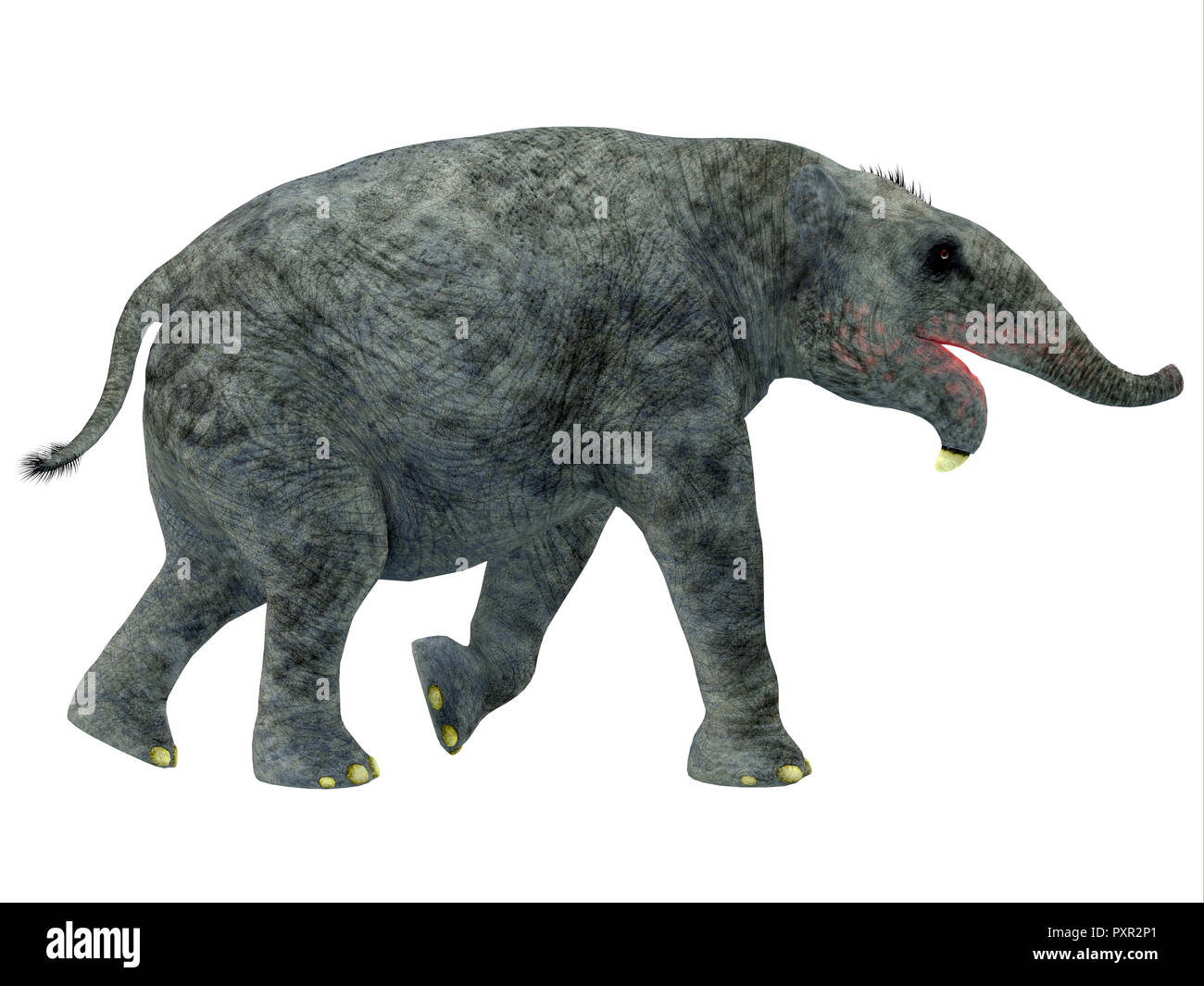 Deinotherium Young Mammal - Deinotherium was an elephant mammal that lived in Asia, Africa and Europe during the Miocene and Pleistocene Period. Stock Photohttps://www.alamy.com/image-license-details/?v=1https://www.alamy.com/deinotherium-young-mammal-deinotherium-was-an-elephant-mammal-that-lived-in-asia-africa-and-europe-during-the-miocene-and-pleistocene-period-image223012553.html
Deinotherium Young Mammal - Deinotherium was an elephant mammal that lived in Asia, Africa and Europe during the Miocene and Pleistocene Period. Stock Photohttps://www.alamy.com/image-license-details/?v=1https://www.alamy.com/deinotherium-young-mammal-deinotherium-was-an-elephant-mammal-that-lived-in-asia-africa-and-europe-during-the-miocene-and-pleistocene-period-image223012553.htmlRFPXR2P1–Deinotherium Young Mammal - Deinotherium was an elephant mammal that lived in Asia, Africa and Europe during the Miocene and Pleistocene Period.
 Deinotherium was an enormous land mammal that lived in Asia, Africa and Europe during the Miocene to Pleistocene Periods. Stock Photohttps://www.alamy.com/image-license-details/?v=1https://www.alamy.com/deinotherium-was-an-enormous-land-mammal-that-lived-in-asia-africa-and-europe-during-the-miocene-to-pleistocene-periods-image385887534.html
Deinotherium was an enormous land mammal that lived in Asia, Africa and Europe during the Miocene to Pleistocene Periods. Stock Photohttps://www.alamy.com/image-license-details/?v=1https://www.alamy.com/deinotherium-was-an-enormous-land-mammal-that-lived-in-asia-africa-and-europe-during-the-miocene-to-pleistocene-periods-image385887534.htmlRF2DBPKDJ–Deinotherium was an enormous land mammal that lived in Asia, Africa and Europe during the Miocene to Pleistocene Periods.
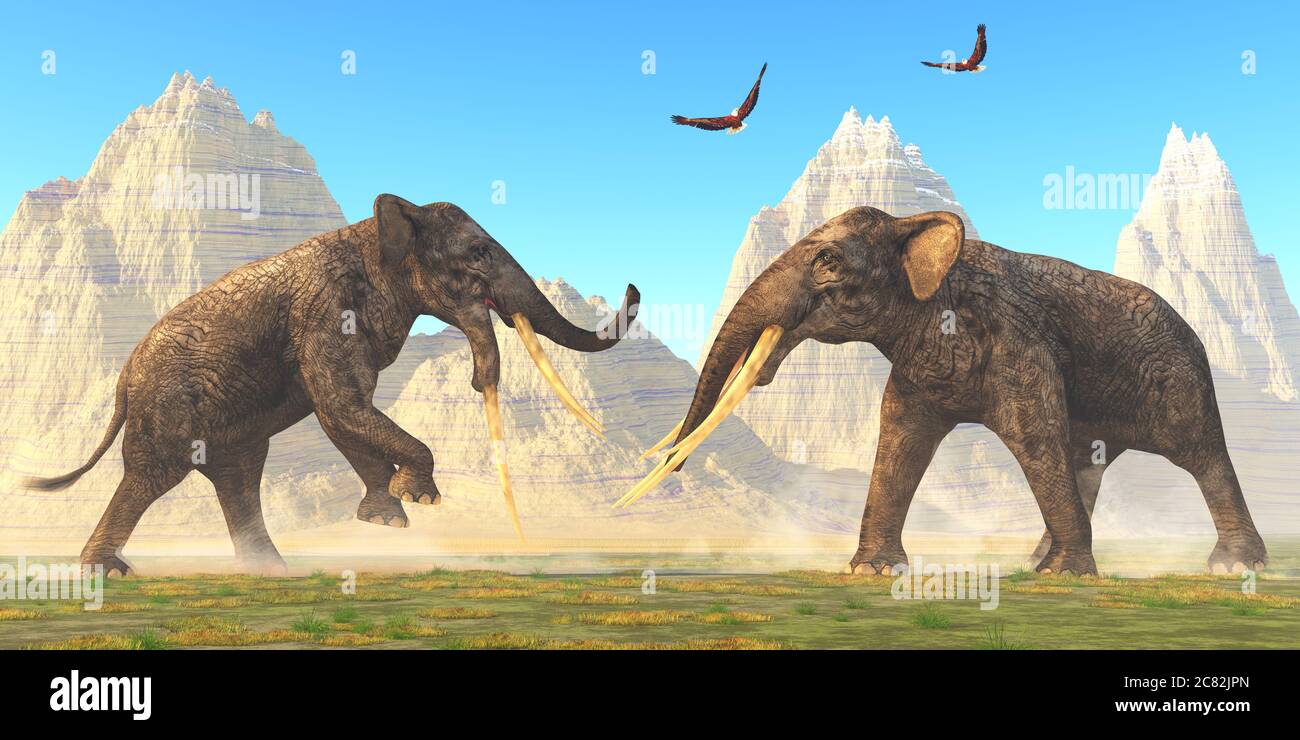 Two bull Stegotetrabelodon fight each other for mating rights in the herd during the Miocene Period. Stock Photohttps://www.alamy.com/image-license-details/?v=1https://www.alamy.com/two-bull-stegotetrabelodon-fight-each-other-for-mating-rights-in-the-herd-during-the-miocene-period-image366393629.html
Two bull Stegotetrabelodon fight each other for mating rights in the herd during the Miocene Period. Stock Photohttps://www.alamy.com/image-license-details/?v=1https://www.alamy.com/two-bull-stegotetrabelodon-fight-each-other-for-mating-rights-in-the-herd-during-the-miocene-period-image366393629.htmlRF2C82JPN–Two bull Stegotetrabelodon fight each other for mating rights in the herd during the Miocene Period.
 Palaeozoology - Miocene - Amebelodon (art work by Michael Rowe) Stock Photohttps://www.alamy.com/image-license-details/?v=1https://www.alamy.com/stock-photo-palaeozoology-miocene-amebelodon-art-work-by-michael-rowe-86112097.html
Palaeozoology - Miocene - Amebelodon (art work by Michael Rowe) Stock Photohttps://www.alamy.com/image-license-details/?v=1https://www.alamy.com/stock-photo-palaeozoology-miocene-amebelodon-art-work-by-michael-rowe-86112097.htmlRMF02MT1–Palaeozoology - Miocene - Amebelodon (art work by Michael Rowe)
 A Platybelodon herd gather on the plains of Africa to migrate to a better grazing area in the Miocene Era. Stock Photohttps://www.alamy.com/image-license-details/?v=1https://www.alamy.com/stock-photo-a-platybelodon-herd-gather-on-the-plains-of-africa-to-migrate-to-a-130340918.html
A Platybelodon herd gather on the plains of Africa to migrate to a better grazing area in the Miocene Era. Stock Photohttps://www.alamy.com/image-license-details/?v=1https://www.alamy.com/stock-photo-a-platybelodon-herd-gather-on-the-plains-of-africa-to-migrate-to-a-130340918.htmlRFHG1F4P–A Platybelodon herd gather on the plains of Africa to migrate to a better grazing area in the Miocene Era.
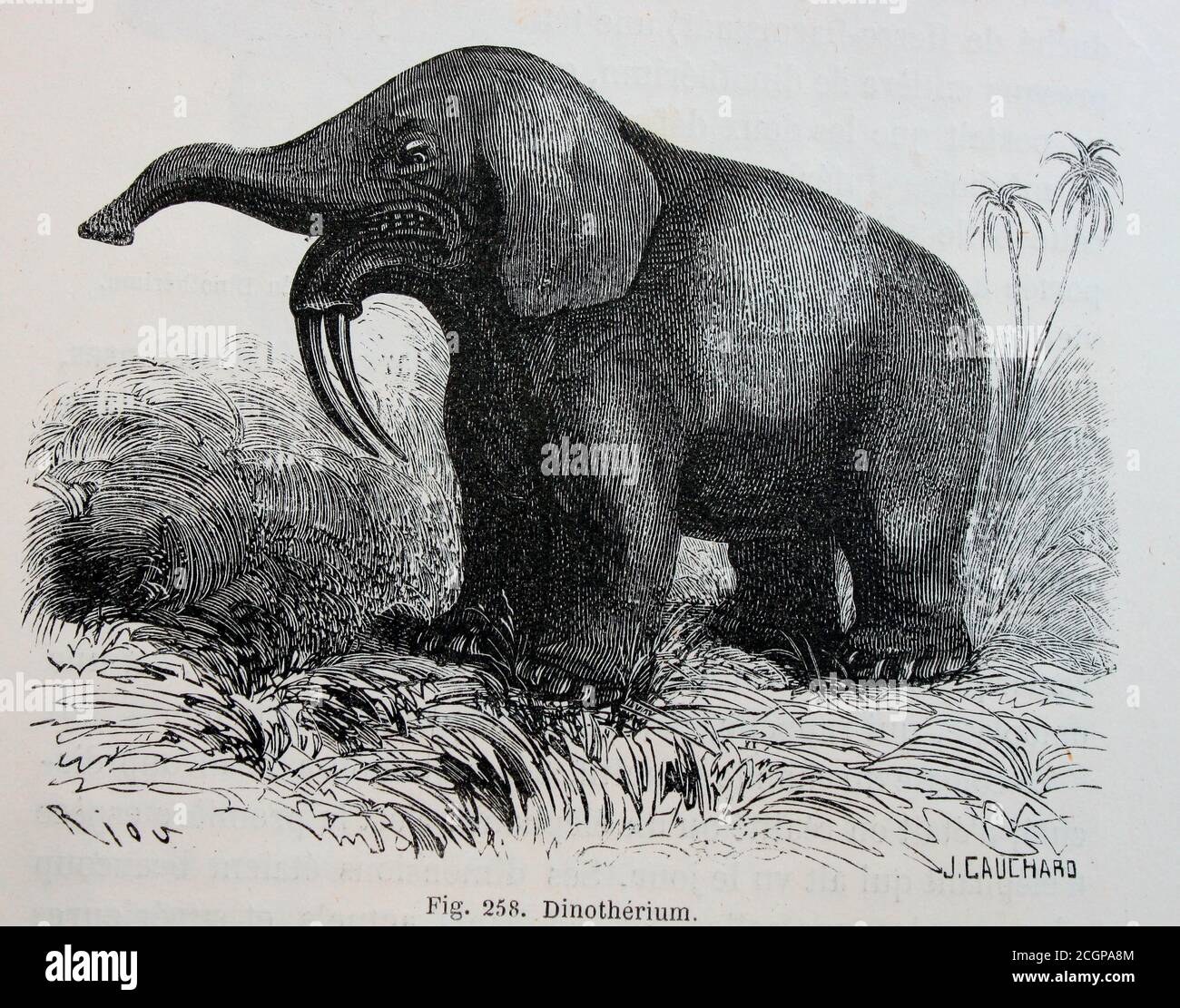 Illustration of Deinotherium, a pachyderm that lived during the Miocene, from Louis Figuier's The World Before the Deluge, 1867 American edition. Deinotherium had a shorter trunk than modern-day elephants, and downward-pointing tusks that it may have used for bending tree branches or stripping bark. by Eduard Riou Stock Photohttps://www.alamy.com/image-license-details/?v=1https://www.alamy.com/illustration-of-deinotherium-a-pachyderm-that-lived-during-the-miocene-from-louis-figuiers-the-world-before-the-deluge-1867-american-edition-deinotherium-had-a-shorter-trunk-than-modern-day-elephants-and-downward-pointing-tusks-that-it-may-have-used-for-bending-tree-branches-or-stripping-bark-by-eduard-riou-image371743252.html
Illustration of Deinotherium, a pachyderm that lived during the Miocene, from Louis Figuier's The World Before the Deluge, 1867 American edition. Deinotherium had a shorter trunk than modern-day elephants, and downward-pointing tusks that it may have used for bending tree branches or stripping bark. by Eduard Riou Stock Photohttps://www.alamy.com/image-license-details/?v=1https://www.alamy.com/illustration-of-deinotherium-a-pachyderm-that-lived-during-the-miocene-from-louis-figuiers-the-world-before-the-deluge-1867-american-edition-deinotherium-had-a-shorter-trunk-than-modern-day-elephants-and-downward-pointing-tusks-that-it-may-have-used-for-bending-tree-branches-or-stripping-bark-by-eduard-riou-image371743252.htmlRF2CGPA8M–Illustration of Deinotherium, a pachyderm that lived during the Miocene, from Louis Figuier's The World Before the Deluge, 1867 American edition. Deinotherium had a shorter trunk than modern-day elephants, and downward-pointing tusks that it may have used for bending tree branches or stripping bark. by Eduard Riou
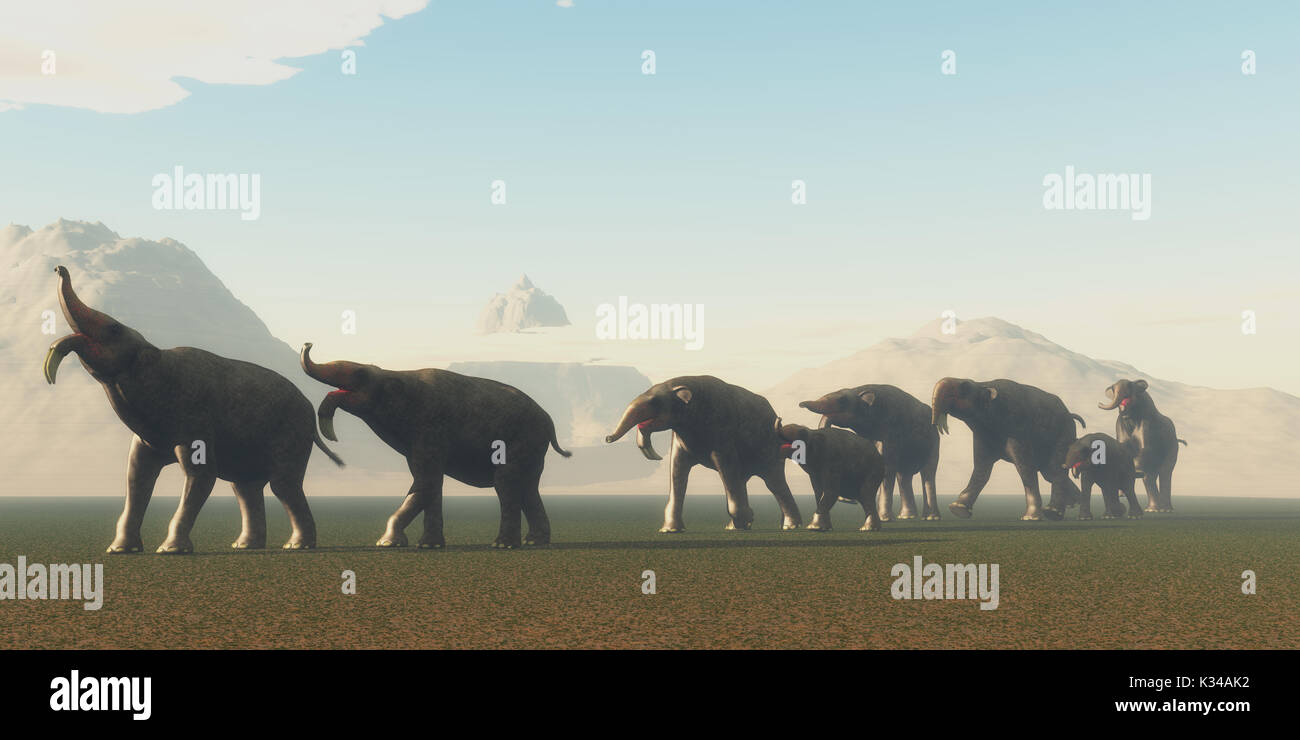 Deinotherium Herd - A herd of Deinotherium mammals head to a watering hole in the Pleistocene Period of Africa. Stock Photohttps://www.alamy.com/image-license-details/?v=1https://www.alamy.com/deinotherium-herd-a-herd-of-deinotherium-mammals-head-to-a-watering-image156833462.html
Deinotherium Herd - A herd of Deinotherium mammals head to a watering hole in the Pleistocene Period of Africa. Stock Photohttps://www.alamy.com/image-license-details/?v=1https://www.alamy.com/deinotherium-herd-a-herd-of-deinotherium-mammals-head-to-a-watering-image156833462.htmlRFK34AK2–Deinotherium Herd - A herd of Deinotherium mammals head to a watering hole in the Pleistocene Period of Africa.
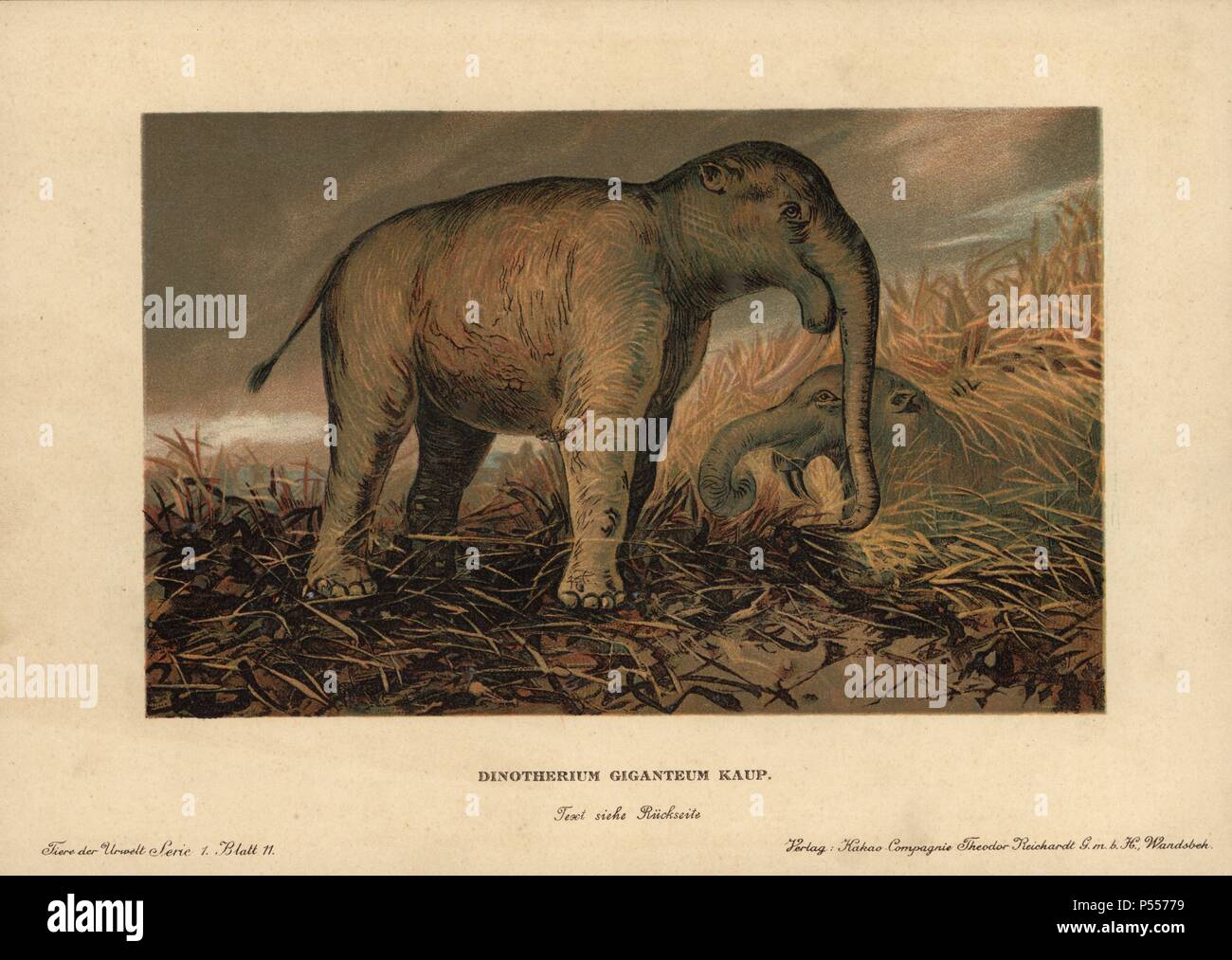 Deinotherium giganteum, large prehistoric relative of the elephant that appeared in the Middle Miocene and continued until the Early Pleistocene. Colour printed (chromolithograph) illustration by F. John from 'Tiere der Urwelt' Animals of the Prehistoric World, 1910, Hamburg. From a series of prehistoric creature cards published by the Reichardt Cocoa company. Stock Photohttps://www.alamy.com/image-license-details/?v=1https://www.alamy.com/deinotherium-giganteum-large-prehistoric-relative-of-the-elephant-that-appeared-in-the-middle-miocene-and-continued-until-the-early-pleistocene-colour-printed-chromolithograph-illustration-by-f-john-from-tiere-der-urwelt-animals-of-the-prehistoric-world-1910-hamburg-from-a-series-of-prehistoric-creature-cards-published-by-the-reichardt-cocoa-company-image209713149.html
Deinotherium giganteum, large prehistoric relative of the elephant that appeared in the Middle Miocene and continued until the Early Pleistocene. Colour printed (chromolithograph) illustration by F. John from 'Tiere der Urwelt' Animals of the Prehistoric World, 1910, Hamburg. From a series of prehistoric creature cards published by the Reichardt Cocoa company. Stock Photohttps://www.alamy.com/image-license-details/?v=1https://www.alamy.com/deinotherium-giganteum-large-prehistoric-relative-of-the-elephant-that-appeared-in-the-middle-miocene-and-continued-until-the-early-pleistocene-colour-printed-chromolithograph-illustration-by-f-john-from-tiere-der-urwelt-animals-of-the-prehistoric-world-1910-hamburg-from-a-series-of-prehistoric-creature-cards-published-by-the-reichardt-cocoa-company-image209713149.htmlRMP55779–Deinotherium giganteum, large prehistoric relative of the elephant that appeared in the Middle Miocene and continued until the Early Pleistocene. Colour printed (chromolithograph) illustration by F. John from 'Tiere der Urwelt' Animals of the Prehistoric World, 1910, Hamburg. From a series of prehistoric creature cards published by the Reichardt Cocoa company.
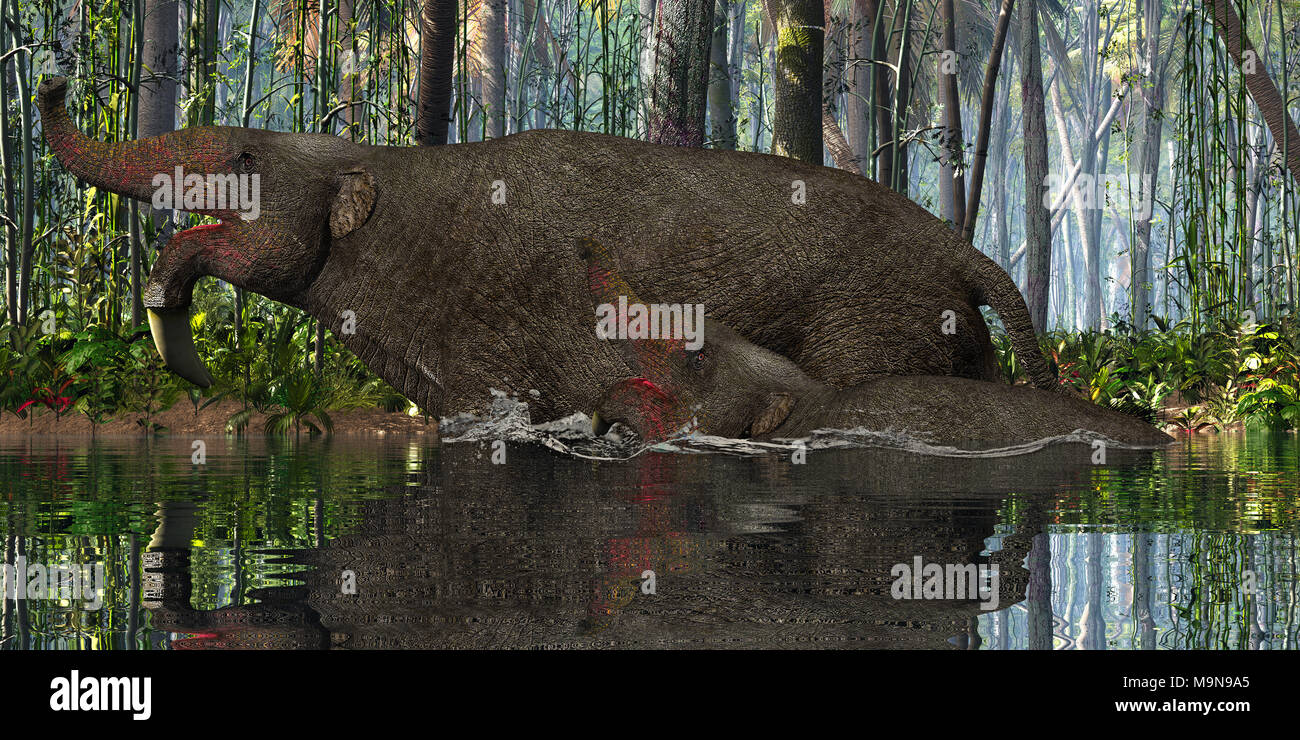 Deinotherium Mother and Calf - A Deinotherium calf tries to keep up with his mother in a jungle river in the Pleistocene Period. Stock Photohttps://www.alamy.com/image-license-details/?v=1https://www.alamy.com/deinotherium-mother-and-calf-a-deinotherium-calf-tries-to-keep-up-with-his-mother-in-a-jungle-river-in-the-pleistocene-period-image178103917.html
Deinotherium Mother and Calf - A Deinotherium calf tries to keep up with his mother in a jungle river in the Pleistocene Period. Stock Photohttps://www.alamy.com/image-license-details/?v=1https://www.alamy.com/deinotherium-mother-and-calf-a-deinotherium-calf-tries-to-keep-up-with-his-mother-in-a-jungle-river-in-the-pleistocene-period-image178103917.htmlRFM9N9A5–Deinotherium Mother and Calf - A Deinotherium calf tries to keep up with his mother in a jungle river in the Pleistocene Period.
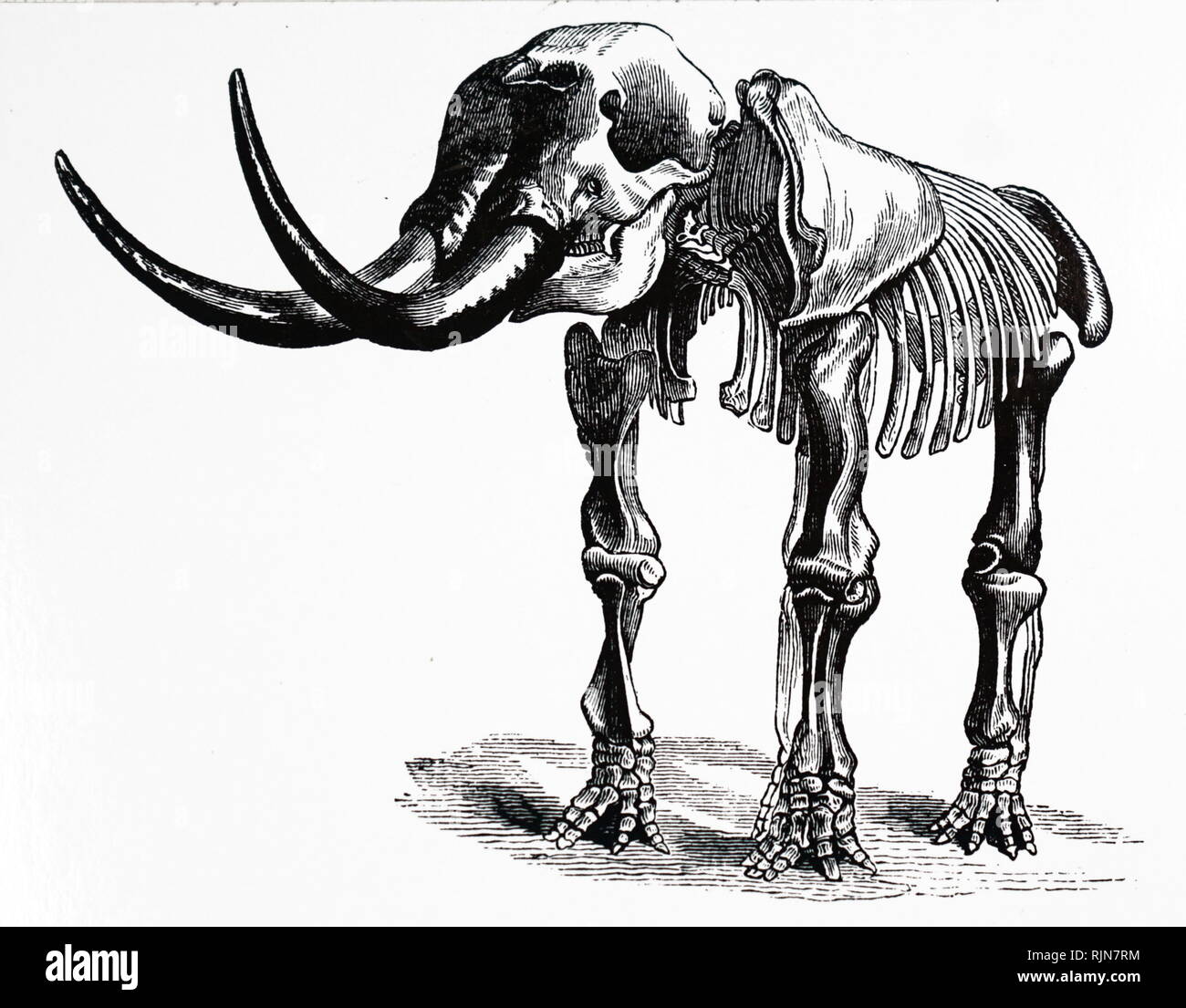 An engraving depicting the restored skeleton of a Mastodon. Mastodons are any species of extinct proboscideans in the genus Mammut, distantly related to elephants, that inhabited North and Central America during the late Miocene or late Pliocene period. Dated 19th century Stock Photohttps://www.alamy.com/image-license-details/?v=1https://www.alamy.com/an-engraving-depicting-the-restored-skeleton-of-a-mastodon-mastodons-are-any-species-of-extinct-proboscideans-in-the-genus-mammut-distantly-related-to-elephants-that-inhabited-north-and-central-america-during-the-late-miocene-or-late-pliocene-period-dated-19th-century-image235265736.html
An engraving depicting the restored skeleton of a Mastodon. Mastodons are any species of extinct proboscideans in the genus Mammut, distantly related to elephants, that inhabited North and Central America during the late Miocene or late Pliocene period. Dated 19th century Stock Photohttps://www.alamy.com/image-license-details/?v=1https://www.alamy.com/an-engraving-depicting-the-restored-skeleton-of-a-mastodon-mastodons-are-any-species-of-extinct-proboscideans-in-the-genus-mammut-distantly-related-to-elephants-that-inhabited-north-and-central-america-during-the-late-miocene-or-late-pliocene-period-dated-19th-century-image235265736.htmlRMRJN7RM–An engraving depicting the restored skeleton of a Mastodon. Mastodons are any species of extinct proboscideans in the genus Mammut, distantly related to elephants, that inhabited North and Central America during the late Miocene or late Pliocene period. Dated 19th century
 Deinotherium was an enormous land mammal that lived in Asia, Africa and Europe during the Miocene to Pleistocene Periods. Stock Photohttps://www.alamy.com/image-license-details/?v=1https://www.alamy.com/stock-photo-deinotherium-was-an-enormous-land-mammal-that-lived-in-asia-africa-99397293.html
Deinotherium was an enormous land mammal that lived in Asia, Africa and Europe during the Miocene to Pleistocene Periods. Stock Photohttps://www.alamy.com/image-license-details/?v=1https://www.alamy.com/stock-photo-deinotherium-was-an-enormous-land-mammal-that-lived-in-asia-africa-99397293.htmlRFFNKX79–Deinotherium was an enormous land mammal that lived in Asia, Africa and Europe during the Miocene to Pleistocene Periods.
 Abrégé de géologie . ieds) qui aitjamais existé; cest, dans le miocène encore, le mastodonte,grand éléphant qui ressemblait à ceux daujourdhui. A lafin de lépoque, au pliocène, le rhinocéros, lhippopotame,les ruminants, les rongeurs, les ours, les hyènes, les chiens,etc., sont apparus à leur tour. Quant aux singes, le premierdate de léocène même. — Durant les temps tertiaires, lesoiseaux (dépourvus de dents), les reptiles,les batraciens, les poissons, deviennent deplus en plus semblables aux groupes ac-I tuellement en existence. Dans les océans, ily a des baleines, des dauphins et autres cé-ta Stock Photohttps://www.alamy.com/image-license-details/?v=1https://www.alamy.com/abrg-de-gologie-ieds-qui-aitjamais-exist-cest-dans-le-miocne-encore-le-mastodontegrand-lphant-qui-ressemblait-ceux-daujourdhui-a-lafin-de-lpoque-au-pliocne-le-rhinocros-lhippopotameles-ruminants-les-rongeurs-les-ours-les-hynes-les-chiensetc-sont-apparus-leur-tour-quant-aux-singes-le-premierdate-de-locne-mme-durant-les-temps-tertiaires-lesoiseaux-dpourvus-de-dents-les-reptilesles-batraciens-les-poissons-deviennent-deplus-en-plus-semblables-aux-groupes-ac-i-tuellement-en-existence-dans-les-ocans-ily-a-des-baleines-des-dauphins-et-autres-c-ta-image338293013.html
Abrégé de géologie . ieds) qui aitjamais existé; cest, dans le miocène encore, le mastodonte,grand éléphant qui ressemblait à ceux daujourdhui. A lafin de lépoque, au pliocène, le rhinocéros, lhippopotame,les ruminants, les rongeurs, les ours, les hyènes, les chiens,etc., sont apparus à leur tour. Quant aux singes, le premierdate de léocène même. — Durant les temps tertiaires, lesoiseaux (dépourvus de dents), les reptiles,les batraciens, les poissons, deviennent deplus en plus semblables aux groupes ac-I tuellement en existence. Dans les océans, ily a des baleines, des dauphins et autres cé-ta Stock Photohttps://www.alamy.com/image-license-details/?v=1https://www.alamy.com/abrg-de-gologie-ieds-qui-aitjamais-exist-cest-dans-le-miocne-encore-le-mastodontegrand-lphant-qui-ressemblait-ceux-daujourdhui-a-lafin-de-lpoque-au-pliocne-le-rhinocros-lhippopotameles-ruminants-les-rongeurs-les-ours-les-hynes-les-chiensetc-sont-apparus-leur-tour-quant-aux-singes-le-premierdate-de-locne-mme-durant-les-temps-tertiaires-lesoiseaux-dpourvus-de-dents-les-reptilesles-batraciens-les-poissons-deviennent-deplus-en-plus-semblables-aux-groupes-ac-i-tuellement-en-existence-dans-les-ocans-ily-a-des-baleines-des-dauphins-et-autres-c-ta-image338293013.htmlRM2AJAG59–Abrégé de géologie . ieds) qui aitjamais existé; cest, dans le miocène encore, le mastodonte,grand éléphant qui ressemblait à ceux daujourdhui. A lafin de lépoque, au pliocène, le rhinocéros, lhippopotame,les ruminants, les rongeurs, les ours, les hyènes, les chiens,etc., sont apparus à leur tour. Quant aux singes, le premierdate de léocène même. — Durant les temps tertiaires, lesoiseaux (dépourvus de dents), les reptiles,les batraciens, les poissons, deviennent deplus en plus semblables aux groupes ac-I tuellement en existence. Dans les océans, ily a des baleines, des dauphins et autres cé-ta
 Gomphotherium (Gomphotherium), primitiv extinct elephant Stock Photohttps://www.alamy.com/image-license-details/?v=1https://www.alamy.com/stock-photo-gomphotherium-gomphotherium-primitiv-extinct-elephant-48860845.html
Gomphotherium (Gomphotherium), primitiv extinct elephant Stock Photohttps://www.alamy.com/image-license-details/?v=1https://www.alamy.com/stock-photo-gomphotherium-gomphotherium-primitiv-extinct-elephant-48860845.htmlRMCRDPE5–Gomphotherium (Gomphotherium), primitiv extinct elephant
 Azov, Russia - July 27, 2019: Skull and horn of a woolly rhino. Exhibit of the Azov Paleontological Museum. Stock Photohttps://www.alamy.com/image-license-details/?v=1https://www.alamy.com/azov-russia-july-27-2019-skull-and-horn-of-a-woolly-rhino-exhibit-of-the-azov-paleontological-museum-image337366925.html
Azov, Russia - July 27, 2019: Skull and horn of a woolly rhino. Exhibit of the Azov Paleontological Museum. Stock Photohttps://www.alamy.com/image-license-details/?v=1https://www.alamy.com/azov-russia-july-27-2019-skull-and-horn-of-a-woolly-rhino-exhibit-of-the-azov-paleontological-museum-image337366925.htmlRF2AGTAXN–Azov, Russia - July 27, 2019: Skull and horn of a woolly rhino. Exhibit of the Azov Paleontological Museum.
 Stegotetrabelodon is an extinct, four tusked, prehistoric cousin of the elephant, a type of gomphothere of the Micoene. Depicted with no background. Stock Photohttps://www.alamy.com/image-license-details/?v=1https://www.alamy.com/stegotetrabelodon-is-an-extinct-four-tusked-prehistoric-cousin-of-the-elephant-a-type-of-gomphothere-of-the-micoene-depicted-with-no-background-image368720258.html
Stegotetrabelodon is an extinct, four tusked, prehistoric cousin of the elephant, a type of gomphothere of the Micoene. Depicted with no background. Stock Photohttps://www.alamy.com/image-license-details/?v=1https://www.alamy.com/stegotetrabelodon-is-an-extinct-four-tusked-prehistoric-cousin-of-the-elephant-a-type-of-gomphothere-of-the-micoene-depicted-with-no-background-image368720258.htmlRF2CBTJCJ–Stegotetrabelodon is an extinct, four tusked, prehistoric cousin of the elephant, a type of gomphothere of the Micoene. Depicted with no background.
 Macroscelides rozeti, Print, The North African elephant shrew or North African sengi (Petrosaltator rozeti) is a species of elephant shrew in the family Macroscelididae. It is found in Algeria, Libya, Morocco, and Tunisia, and is the only extant afrotherian within its range. Recent phylogenetic analyses suggest that its status as the only extant member of its order north of the Sahara has resulted in a genetic split from the other Macroscelididae species. This split likely occurred during the Miocene period. In 2016, John Dumbacher and colleagues created a new genus, Petrosaltator, for this sp Stock Photohttps://www.alamy.com/image-license-details/?v=1https://www.alamy.com/macroscelides-rozeti-print-the-north-african-elephant-shrew-or-north-african-sengi-petrosaltator-rozeti-is-a-species-of-elephant-shrew-in-the-family-macroscelididae-it-is-found-in-algeria-libya-morocco-and-tunisia-and-is-the-only-extant-afrotherian-within-its-range-recent-phylogenetic-analyses-suggest-that-its-status-as-the-only-extant-member-of-its-order-north-of-the-sahara-has-resulted-in-a-genetic-split-from-the-other-macroscelididae-species-this-split-likely-occurred-during-the-miocene-period-in-2016-john-dumbacher-and-colleagues-created-a-new-genus-petrosaltator-for-this-sp-image349760723.html
Macroscelides rozeti, Print, The North African elephant shrew or North African sengi (Petrosaltator rozeti) is a species of elephant shrew in the family Macroscelididae. It is found in Algeria, Libya, Morocco, and Tunisia, and is the only extant afrotherian within its range. Recent phylogenetic analyses suggest that its status as the only extant member of its order north of the Sahara has resulted in a genetic split from the other Macroscelididae species. This split likely occurred during the Miocene period. In 2016, John Dumbacher and colleagues created a new genus, Petrosaltator, for this sp Stock Photohttps://www.alamy.com/image-license-details/?v=1https://www.alamy.com/macroscelides-rozeti-print-the-north-african-elephant-shrew-or-north-african-sengi-petrosaltator-rozeti-is-a-species-of-elephant-shrew-in-the-family-macroscelididae-it-is-found-in-algeria-libya-morocco-and-tunisia-and-is-the-only-extant-afrotherian-within-its-range-recent-phylogenetic-analyses-suggest-that-its-status-as-the-only-extant-member-of-its-order-north-of-the-sahara-has-resulted-in-a-genetic-split-from-the-other-macroscelididae-species-this-split-likely-occurred-during-the-miocene-period-in-2016-john-dumbacher-and-colleagues-created-a-new-genus-petrosaltator-for-this-sp-image349760723.htmlRF2B90YAB–Macroscelides rozeti, Print, The North African elephant shrew or North African sengi (Petrosaltator rozeti) is a species of elephant shrew in the family Macroscelididae. It is found in Algeria, Libya, Morocco, and Tunisia, and is the only extant afrotherian within its range. Recent phylogenetic analyses suggest that its status as the only extant member of its order north of the Sahara has resulted in a genetic split from the other Macroscelididae species. This split likely occurred during the Miocene period. In 2016, John Dumbacher and colleagues created a new genus, Petrosaltator, for this sp
 Several giraffes drinking water at a waterhole near the camp Savute Elephant Camp by Orient Express in Botswna in Chobe National Stock Photohttps://www.alamy.com/image-license-details/?v=1https://www.alamy.com/several-giraffes-drinking-water-at-a-waterhole-near-the-camp-savute-image65949373.html
Several giraffes drinking water at a waterhole near the camp Savute Elephant Camp by Orient Express in Botswna in Chobe National Stock Photohttps://www.alamy.com/image-license-details/?v=1https://www.alamy.com/several-giraffes-drinking-water-at-a-waterhole-near-the-camp-savute-image65949373.htmlRMDR872N–Several giraffes drinking water at a waterhole near the camp Savute Elephant Camp by Orient Express in Botswna in Chobe National
 Deinotherium was an enormous land mammal that lived in Asia, Africa and Europe during the Miocene to Pleistocene Periods. Stock Photohttps://www.alamy.com/image-license-details/?v=1https://www.alamy.com/deinotherium-was-an-enormous-land-mammal-that-lived-in-asia-africa-and-europe-during-the-miocene-to-pleistocene-periods-image385887535.html
Deinotherium was an enormous land mammal that lived in Asia, Africa and Europe during the Miocene to Pleistocene Periods. Stock Photohttps://www.alamy.com/image-license-details/?v=1https://www.alamy.com/deinotherium-was-an-enormous-land-mammal-that-lived-in-asia-africa-and-europe-during-the-miocene-to-pleistocene-periods-image385887535.htmlRF2DBPKDK–Deinotherium was an enormous land mammal that lived in Asia, Africa and Europe during the Miocene to Pleistocene Periods.
 Mastodon. Precursor of the elephant. Miocene period, vintage engraved illustration. Earth before man – 1886. Stock Photohttps://www.alamy.com/image-license-details/?v=1https://www.alamy.com/mastodon-precursor-of-the-elephant-miocene-period-vintage-engraved-illustration-earth-before-man-1886-image363122242.html
Mastodon. Precursor of the elephant. Miocene period, vintage engraved illustration. Earth before man – 1886. Stock Photohttps://www.alamy.com/image-license-details/?v=1https://www.alamy.com/mastodon-precursor-of-the-elephant-miocene-period-vintage-engraved-illustration-earth-before-man-1886-image363122242.htmlRF2C2NJ3E–Mastodon. Precursor of the elephant. Miocene period, vintage engraved illustration. Earth before man – 1886.
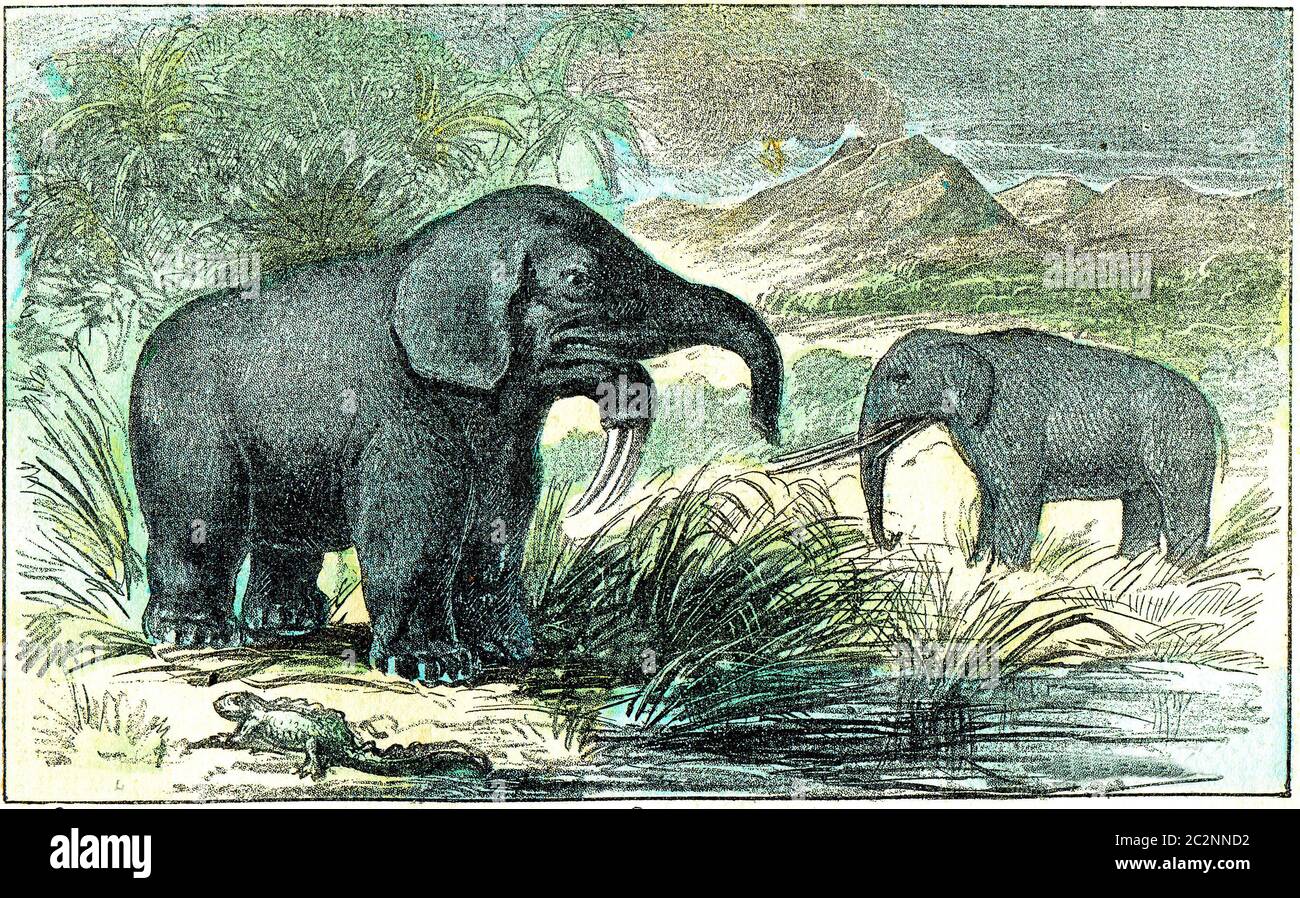 Deinotherium and mastodon of Miocene period, vintage engraved illustration. From Natural Creation and Living Beings. Stock Photohttps://www.alamy.com/image-license-details/?v=1https://www.alamy.com/deinotherium-and-mastodon-of-miocene-period-vintage-engraved-illustration-from-natural-creation-and-living-beings-image363124862.html
Deinotherium and mastodon of Miocene period, vintage engraved illustration. From Natural Creation and Living Beings. Stock Photohttps://www.alamy.com/image-license-details/?v=1https://www.alamy.com/deinotherium-and-mastodon-of-miocene-period-vintage-engraved-illustration-from-natural-creation-and-living-beings-image363124862.htmlRF2C2NND2–Deinotherium and mastodon of Miocene period, vintage engraved illustration. From Natural Creation and Living Beings.
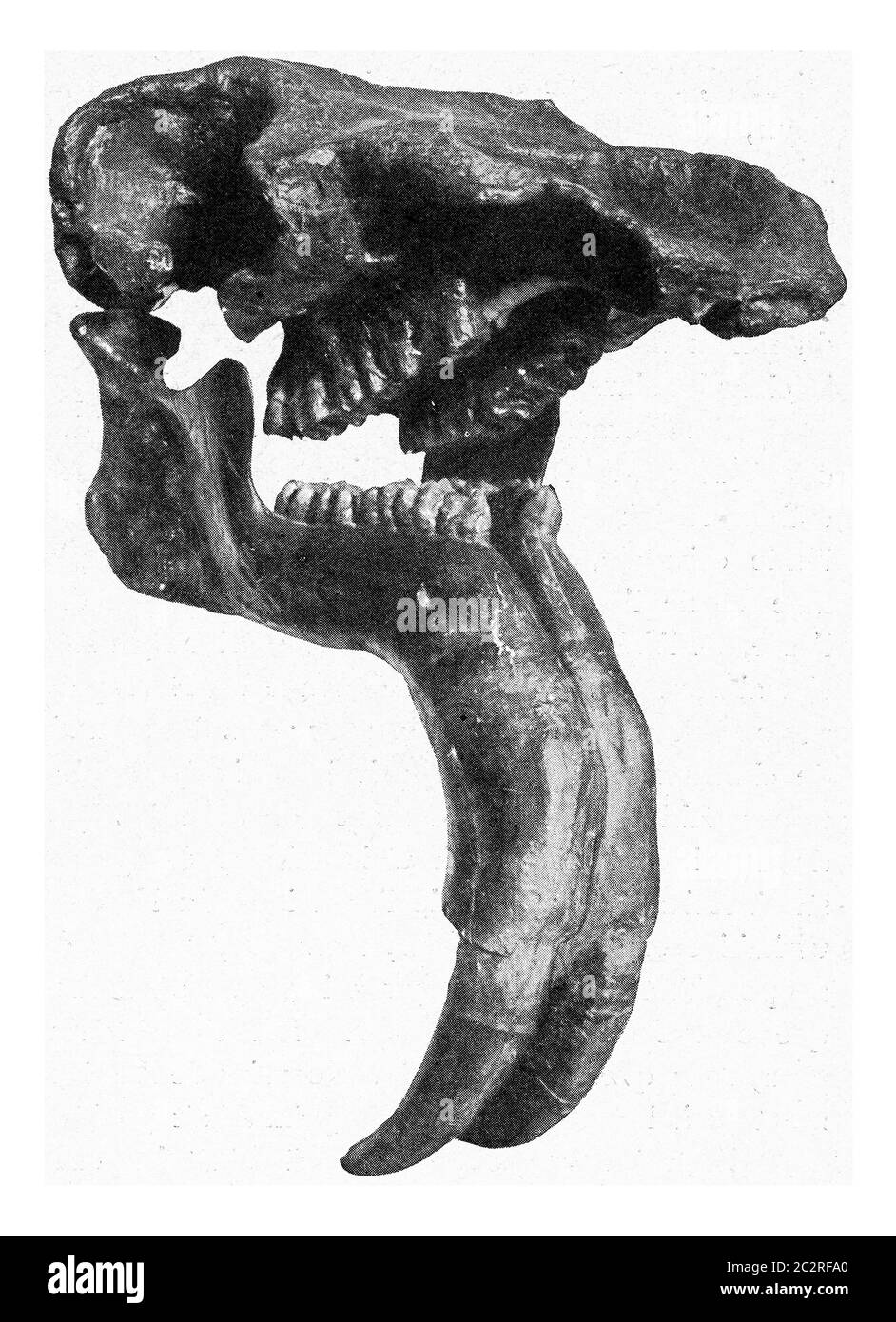 Skull Deinotherium giganteum, vintage engraved illustration. From the Universe and Humanity, 1910. Stock Photohttps://www.alamy.com/image-license-details/?v=1https://www.alamy.com/skull-deinotherium-giganteum-vintage-engraved-illustration-from-the-universe-and-humanity-1910-image363163976.html
Skull Deinotherium giganteum, vintage engraved illustration. From the Universe and Humanity, 1910. Stock Photohttps://www.alamy.com/image-license-details/?v=1https://www.alamy.com/skull-deinotherium-giganteum-vintage-engraved-illustration-from-the-universe-and-humanity-1910-image363163976.htmlRF2C2RFA0–Skull Deinotherium giganteum, vintage engraved illustration. From the Universe and Humanity, 1910.
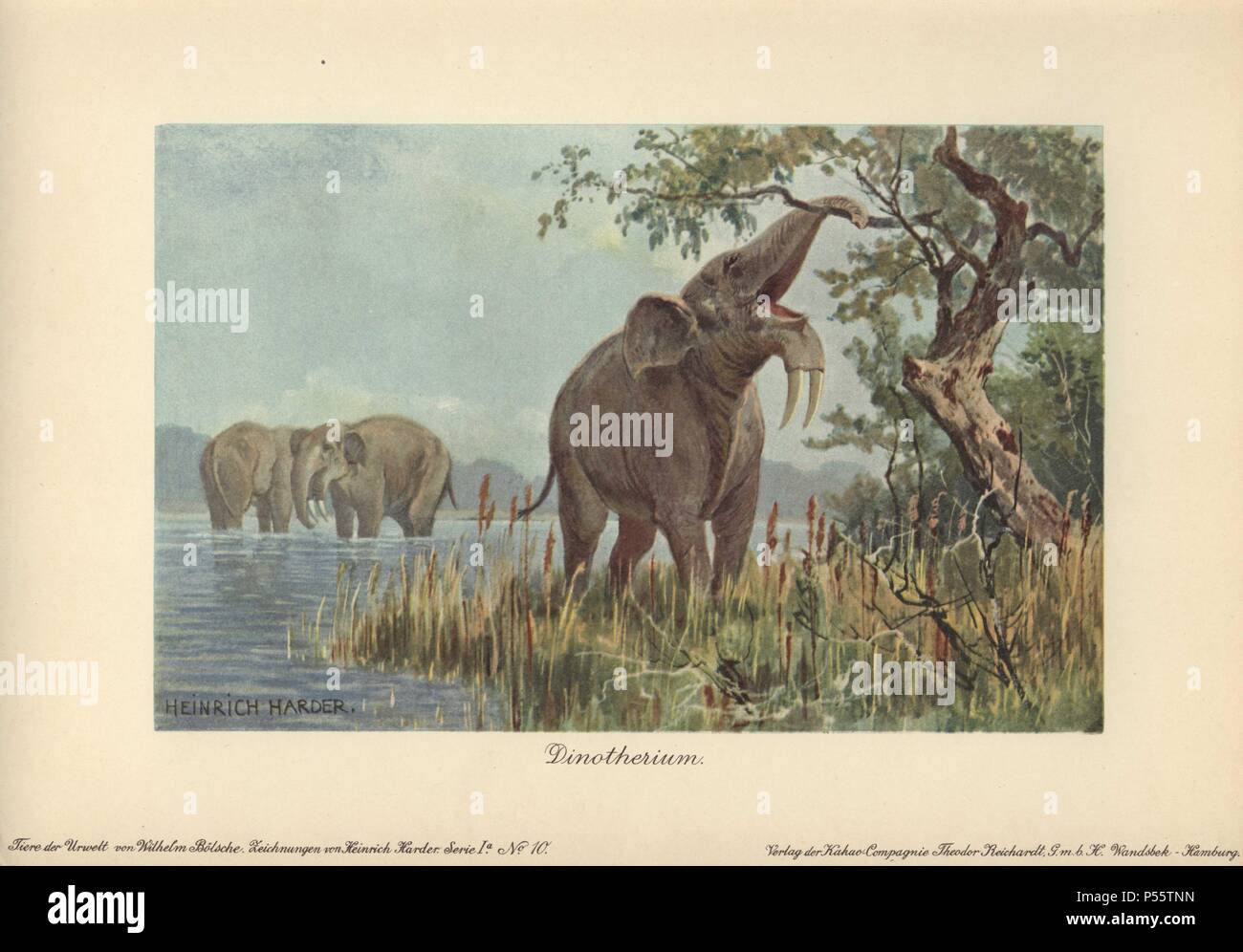 Dinotherium (Deinotherium giganteum), prehistoric relative to the elephant, with downward curving tusks.. . Colour printed illustration by Heinrich Harder from 'Tiere der Urwelt' Animals of the Prehistoric World, 1916, Hamburg. . Heinrich Harder (1858-1935) was a German landscape artist and book illustrator. These images come from a series of prehistoric creature cards published by the Reichardt Cocoa company in 1908. Natural historian Wilhelm Bolsche wrote the descriptive text. Stock Photohttps://www.alamy.com/image-license-details/?v=1https://www.alamy.com/dinotherium-deinotherium-giganteum-prehistoric-relative-to-the-elephant-with-downward-curving-tusks-colour-printed-illustration-by-heinrich-harder-from-tiere-der-urwelt-animals-of-the-prehistoric-world-1916-hamburg-heinrich-harder-1858-1935-was-a-german-landscape-artist-and-book-illustrator-these-images-come-from-a-series-of-prehistoric-creature-cards-published-by-the-reichardt-cocoa-company-in-1908-natural-historian-wilhelm-bolsche-wrote-the-descriptive-text-image209726881.html
Dinotherium (Deinotherium giganteum), prehistoric relative to the elephant, with downward curving tusks.. . Colour printed illustration by Heinrich Harder from 'Tiere der Urwelt' Animals of the Prehistoric World, 1916, Hamburg. . Heinrich Harder (1858-1935) was a German landscape artist and book illustrator. These images come from a series of prehistoric creature cards published by the Reichardt Cocoa company in 1908. Natural historian Wilhelm Bolsche wrote the descriptive text. Stock Photohttps://www.alamy.com/image-license-details/?v=1https://www.alamy.com/dinotherium-deinotherium-giganteum-prehistoric-relative-to-the-elephant-with-downward-curving-tusks-colour-printed-illustration-by-heinrich-harder-from-tiere-der-urwelt-animals-of-the-prehistoric-world-1916-hamburg-heinrich-harder-1858-1935-was-a-german-landscape-artist-and-book-illustrator-these-images-come-from-a-series-of-prehistoric-creature-cards-published-by-the-reichardt-cocoa-company-in-1908-natural-historian-wilhelm-bolsche-wrote-the-descriptive-text-image209726881.htmlRMP55TNN–Dinotherium (Deinotherium giganteum), prehistoric relative to the elephant, with downward curving tusks.. . Colour printed illustration by Heinrich Harder from 'Tiere der Urwelt' Animals of the Prehistoric World, 1916, Hamburg. . Heinrich Harder (1858-1935) was a German landscape artist and book illustrator. These images come from a series of prehistoric creature cards published by the Reichardt Cocoa company in 1908. Natural historian Wilhelm Bolsche wrote the descriptive text.
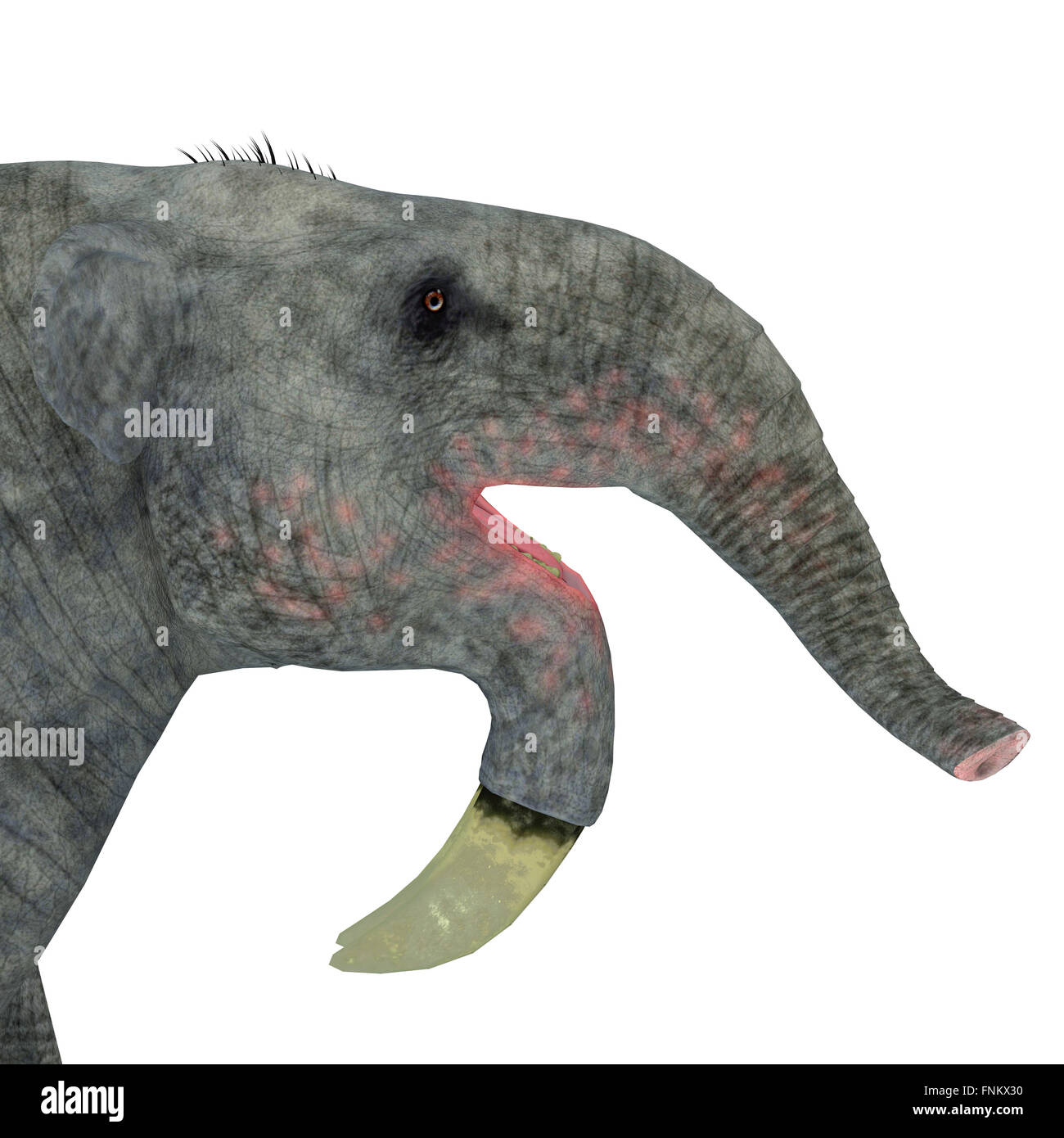 Deinotherium was an enormous land mammal that lived in Asia, Africa and Europe during the Miocene to Pleistocene Periods. Stock Photohttps://www.alamy.com/image-license-details/?v=1https://www.alamy.com/stock-photo-deinotherium-was-an-enormous-land-mammal-that-lived-in-asia-africa-99397172.html
Deinotherium was an enormous land mammal that lived in Asia, Africa and Europe during the Miocene to Pleistocene Periods. Stock Photohttps://www.alamy.com/image-license-details/?v=1https://www.alamy.com/stock-photo-deinotherium-was-an-enormous-land-mammal-that-lived-in-asia-africa-99397172.htmlRFFNKX30–Deinotherium was an enormous land mammal that lived in Asia, Africa and Europe during the Miocene to Pleistocene Periods.
 . Annual report of the Board of Regents of the Smithsonian Institution . imes retained throughout life. Tetrdbelodon. The third recorded stage in the evolution of the elephants is repre-sented by the Miocene Tetrabelodon angustidens^ of which a splendidspecimen from Gers, France,is preserved in the museumof the Jardin des Plantes atParis. It was an animal ofconsiderable size, nearly aslarge as the Indian elephant,but differing markedly fromthe latter in the peculiarcharacter of the lower jaw,which was enormously longat the symphysis and con-tained a pair of relatively short tusks. This form re Stock Photohttps://www.alamy.com/image-license-details/?v=1https://www.alamy.com/annual-report-of-the-board-of-regents-of-the-smithsonian-institution-imes-retained-throughout-life-tetrdbelodon-the-third-recorded-stage-in-the-evolution-of-the-elephants-is-repre-sented-by-the-miocene-tetrabelodon-angustidens-of-which-a-splendidspecimen-from-gers-franceis-preserved-in-the-museumof-the-jardin-des-plantes-atparis-it-was-an-animal-ofconsiderable-size-nearly-aslarge-as-the-indian-elephantbut-differing-markedly-fromthe-latter-in-the-peculiarcharacter-of-the-lower-jawwhich-was-enormously-longat-the-symphysis-and-con-tained-a-pair-of-relatively-short-tusks-this-form-re-image370170889.html
. Annual report of the Board of Regents of the Smithsonian Institution . imes retained throughout life. Tetrdbelodon. The third recorded stage in the evolution of the elephants is repre-sented by the Miocene Tetrabelodon angustidens^ of which a splendidspecimen from Gers, France,is preserved in the museumof the Jardin des Plantes atParis. It was an animal ofconsiderable size, nearly aslarge as the Indian elephant,but differing markedly fromthe latter in the peculiarcharacter of the lower jaw,which was enormously longat the symphysis and con-tained a pair of relatively short tusks. This form re Stock Photohttps://www.alamy.com/image-license-details/?v=1https://www.alamy.com/annual-report-of-the-board-of-regents-of-the-smithsonian-institution-imes-retained-throughout-life-tetrdbelodon-the-third-recorded-stage-in-the-evolution-of-the-elephants-is-repre-sented-by-the-miocene-tetrabelodon-angustidens-of-which-a-splendidspecimen-from-gers-franceis-preserved-in-the-museumof-the-jardin-des-plantes-atparis-it-was-an-animal-ofconsiderable-size-nearly-aslarge-as-the-indian-elephantbut-differing-markedly-fromthe-latter-in-the-peculiarcharacter-of-the-lower-jawwhich-was-enormously-longat-the-symphysis-and-con-tained-a-pair-of-relatively-short-tusks-this-form-re-image370170889.htmlRM2CE6MMW–. Annual report of the Board of Regents of the Smithsonian Institution . imes retained throughout life. Tetrdbelodon. The third recorded stage in the evolution of the elephants is repre-sented by the Miocene Tetrabelodon angustidens^ of which a splendidspecimen from Gers, France,is preserved in the museumof the Jardin des Plantes atParis. It was an animal ofconsiderable size, nearly aslarge as the Indian elephant,but differing markedly fromthe latter in the peculiarcharacter of the lower jaw,which was enormously longat the symphysis and con-tained a pair of relatively short tusks. This form re
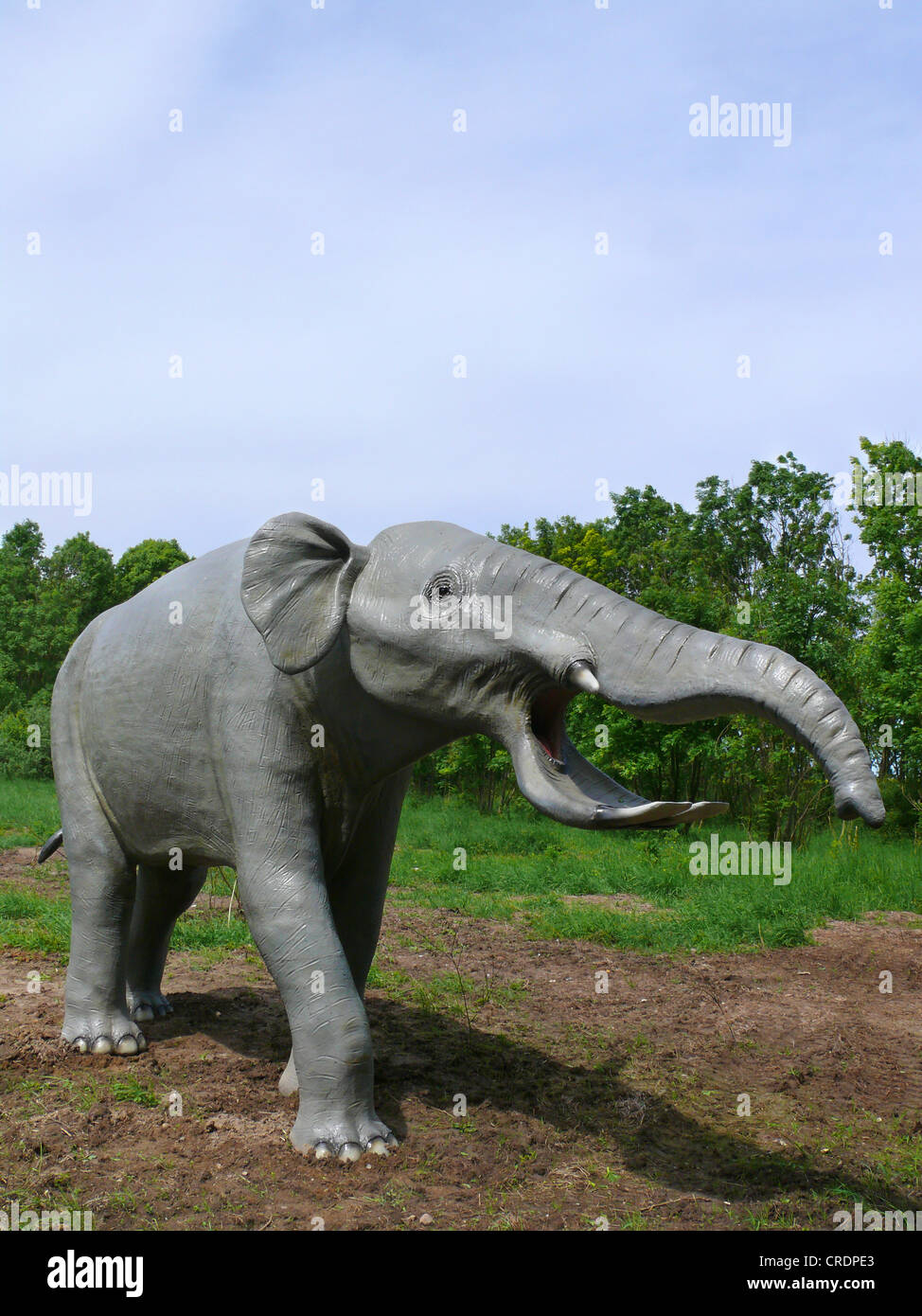 Platybelodon (Platybelodon), primitiv extinct elephant Stock Photohttps://www.alamy.com/image-license-details/?v=1https://www.alamy.com/stock-photo-platybelodon-platybelodon-primitiv-extinct-elephant-48860843.html
Platybelodon (Platybelodon), primitiv extinct elephant Stock Photohttps://www.alamy.com/image-license-details/?v=1https://www.alamy.com/stock-photo-platybelodon-platybelodon-primitiv-extinct-elephant-48860843.htmlRMCRDPE3–Platybelodon (Platybelodon), primitiv extinct elephant
 Azov, Russia - July 27, 2019: Reconstruction of the excavation site of the skeleton of the steppe mammoth in the Azov Paleontological Museum. Stock Photohttps://www.alamy.com/image-license-details/?v=1https://www.alamy.com/azov-russia-july-27-2019-reconstruction-of-the-excavation-site-of-the-skeleton-of-the-steppe-mammoth-in-the-azov-paleontological-museum-image337366918.html
Azov, Russia - July 27, 2019: Reconstruction of the excavation site of the skeleton of the steppe mammoth in the Azov Paleontological Museum. Stock Photohttps://www.alamy.com/image-license-details/?v=1https://www.alamy.com/azov-russia-july-27-2019-reconstruction-of-the-excavation-site-of-the-skeleton-of-the-steppe-mammoth-in-the-azov-paleontological-museum-image337366918.htmlRF2AGTAXE–Azov, Russia - July 27, 2019: Reconstruction of the excavation site of the skeleton of the steppe mammoth in the Azov Paleontological Museum.
 Stegotetrabelodon is an extinct, four tusked, prehistoric cousin of the elephant, a type of gomphothere of the Micoene. Depicted on a grassy hill Stock Photohttps://www.alamy.com/image-license-details/?v=1https://www.alamy.com/stegotetrabelodon-is-an-extinct-four-tusked-prehistoric-cousin-of-the-elephant-a-type-of-gomphothere-of-the-micoene-depicted-on-a-grassy-hill-image368720277.html
Stegotetrabelodon is an extinct, four tusked, prehistoric cousin of the elephant, a type of gomphothere of the Micoene. Depicted on a grassy hill Stock Photohttps://www.alamy.com/image-license-details/?v=1https://www.alamy.com/stegotetrabelodon-is-an-extinct-four-tusked-prehistoric-cousin-of-the-elephant-a-type-of-gomphothere-of-the-micoene-depicted-on-a-grassy-hill-image368720277.htmlRF2CBTJD9–Stegotetrabelodon is an extinct, four tusked, prehistoric cousin of the elephant, a type of gomphothere of the Micoene. Depicted on a grassy hill
 Several giraffes drinking water at a waterhole near the camp Savute Elephant Camp by Orient Express in Botswna in Chobe National Stock Photohttps://www.alamy.com/image-license-details/?v=1https://www.alamy.com/several-giraffes-drinking-water-at-a-waterhole-near-the-camp-savute-image65953026.html
Several giraffes drinking water at a waterhole near the camp Savute Elephant Camp by Orient Express in Botswna in Chobe National Stock Photohttps://www.alamy.com/image-license-details/?v=1https://www.alamy.com/several-giraffes-drinking-water-at-a-waterhole-near-the-camp-savute-image65953026.htmlRMDR8BN6–Several giraffes drinking water at a waterhole near the camp Savute Elephant Camp by Orient Express in Botswna in Chobe National
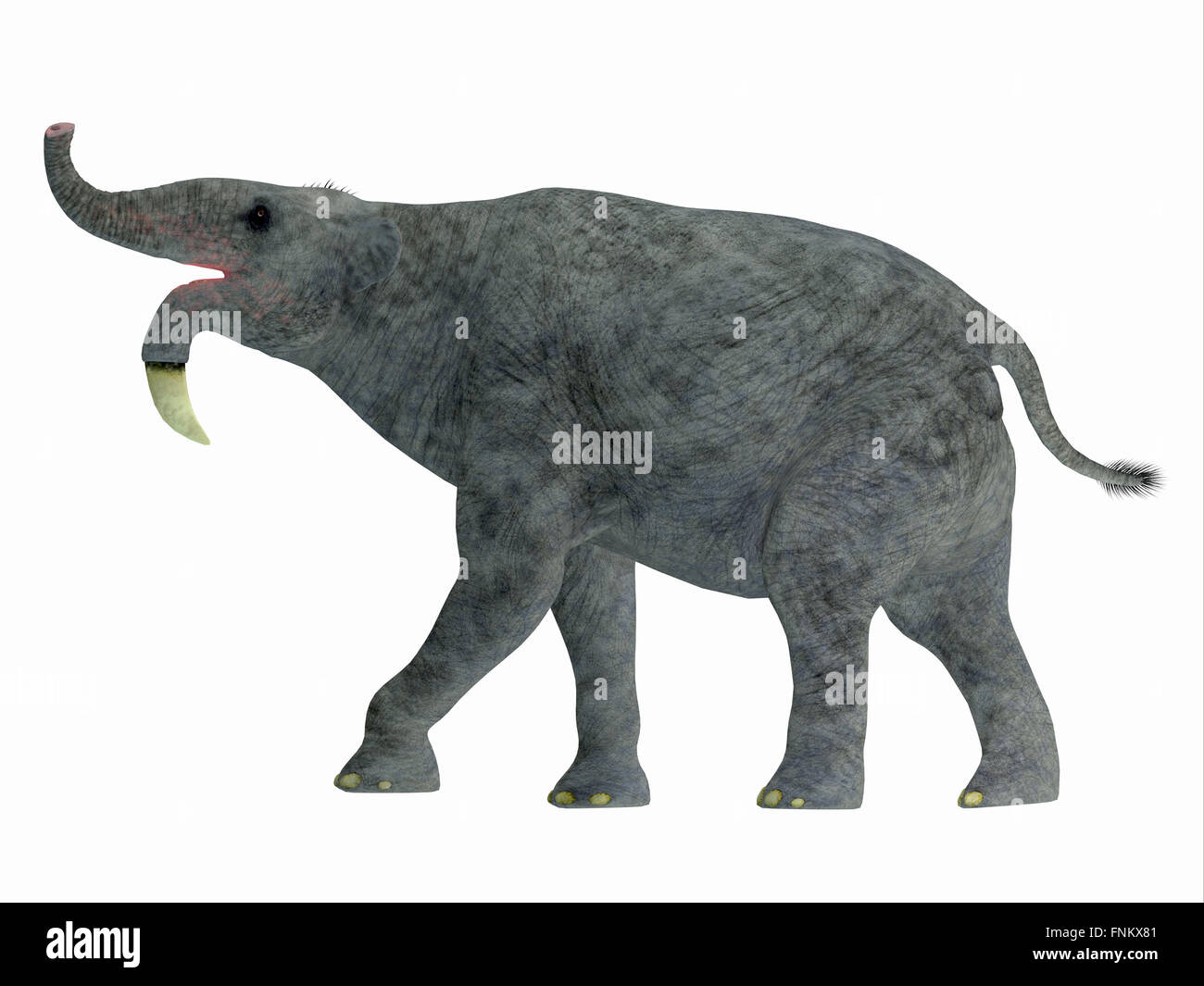 Deinotherium was an enormous land mammal that lived in Asia, Africa and Europe during the Miocene to Pleistocene Periods. Stock Photohttps://www.alamy.com/image-license-details/?v=1https://www.alamy.com/stock-photo-deinotherium-was-an-enormous-land-mammal-that-lived-in-asia-africa-99397313.html
Deinotherium was an enormous land mammal that lived in Asia, Africa and Europe during the Miocene to Pleistocene Periods. Stock Photohttps://www.alamy.com/image-license-details/?v=1https://www.alamy.com/stock-photo-deinotherium-was-an-enormous-land-mammal-that-lived-in-asia-africa-99397313.htmlRFFNKX81–Deinotherium was an enormous land mammal that lived in Asia, Africa and Europe during the Miocene to Pleistocene Periods.
 . A guide to the fossil mammals and birds in the Department of Geology and Palæontology in the British Museum (Natural History) .. . tusks in both upperand lower Jaw, from the Upper Miocene, Eppelsiieim, Germany. (See Pier-case 37.) three deciduous or milk-molars, and in some species, two pre-molars, on each side, both in the upper and lower jaws, and 14 Elephants. Mastodon. Pier-cases,Nos.37&38. Proboscidea—Mastodon and Elephant. three true molars in the adult, thus making a complement ofthirty-four teeth during life. In living elephants there are two incisors, called tusks,in the upper jaw, Stock Photohttps://www.alamy.com/image-license-details/?v=1https://www.alamy.com/a-guide-to-the-fossil-mammals-and-birds-in-the-department-of-geology-and-palontology-in-the-british-museum-natural-history-tusks-in-both-upperand-lower-jaw-from-the-upper-miocene-eppelsiieim-germany-see-pier-case-37-three-deciduous-or-milk-molars-and-in-some-species-two-pre-molars-on-each-side-both-in-the-upper-and-lower-jaws-and-14-elephants-mastodon-pier-casesnos3738-proboscideamastodon-and-elephant-three-true-molars-in-the-adult-thus-making-a-complement-ofthirty-four-teeth-during-life-in-living-elephants-there-are-two-incisors-called-tusksin-the-upper-jaw-image374654690.html
. A guide to the fossil mammals and birds in the Department of Geology and Palæontology in the British Museum (Natural History) .. . tusks in both upperand lower Jaw, from the Upper Miocene, Eppelsiieim, Germany. (See Pier-case 37.) three deciduous or milk-molars, and in some species, two pre-molars, on each side, both in the upper and lower jaws, and 14 Elephants. Mastodon. Pier-cases,Nos.37&38. Proboscidea—Mastodon and Elephant. three true molars in the adult, thus making a complement ofthirty-four teeth during life. In living elephants there are two incisors, called tusks,in the upper jaw, Stock Photohttps://www.alamy.com/image-license-details/?v=1https://www.alamy.com/a-guide-to-the-fossil-mammals-and-birds-in-the-department-of-geology-and-palontology-in-the-british-museum-natural-history-tusks-in-both-upperand-lower-jaw-from-the-upper-miocene-eppelsiieim-germany-see-pier-case-37-three-deciduous-or-milk-molars-and-in-some-species-two-pre-molars-on-each-side-both-in-the-upper-and-lower-jaws-and-14-elephants-mastodon-pier-casesnos3738-proboscideamastodon-and-elephant-three-true-molars-in-the-adult-thus-making-a-complement-ofthirty-four-teeth-during-life-in-living-elephants-there-are-two-incisors-called-tusksin-the-upper-jaw-image374654690.htmlRM2CNEYTJ–. A guide to the fossil mammals and birds in the Department of Geology and Palæontology in the British Museum (Natural History) .. . tusks in both upperand lower Jaw, from the Upper Miocene, Eppelsiieim, Germany. (See Pier-case 37.) three deciduous or milk-molars, and in some species, two pre-molars, on each side, both in the upper and lower jaws, and 14 Elephants. Mastodon. Pier-cases,Nos.37&38. Proboscidea—Mastodon and Elephant. three true molars in the adult, thus making a complement ofthirty-four teeth during life. In living elephants there are two incisors, called tusks,in the upper jaw,
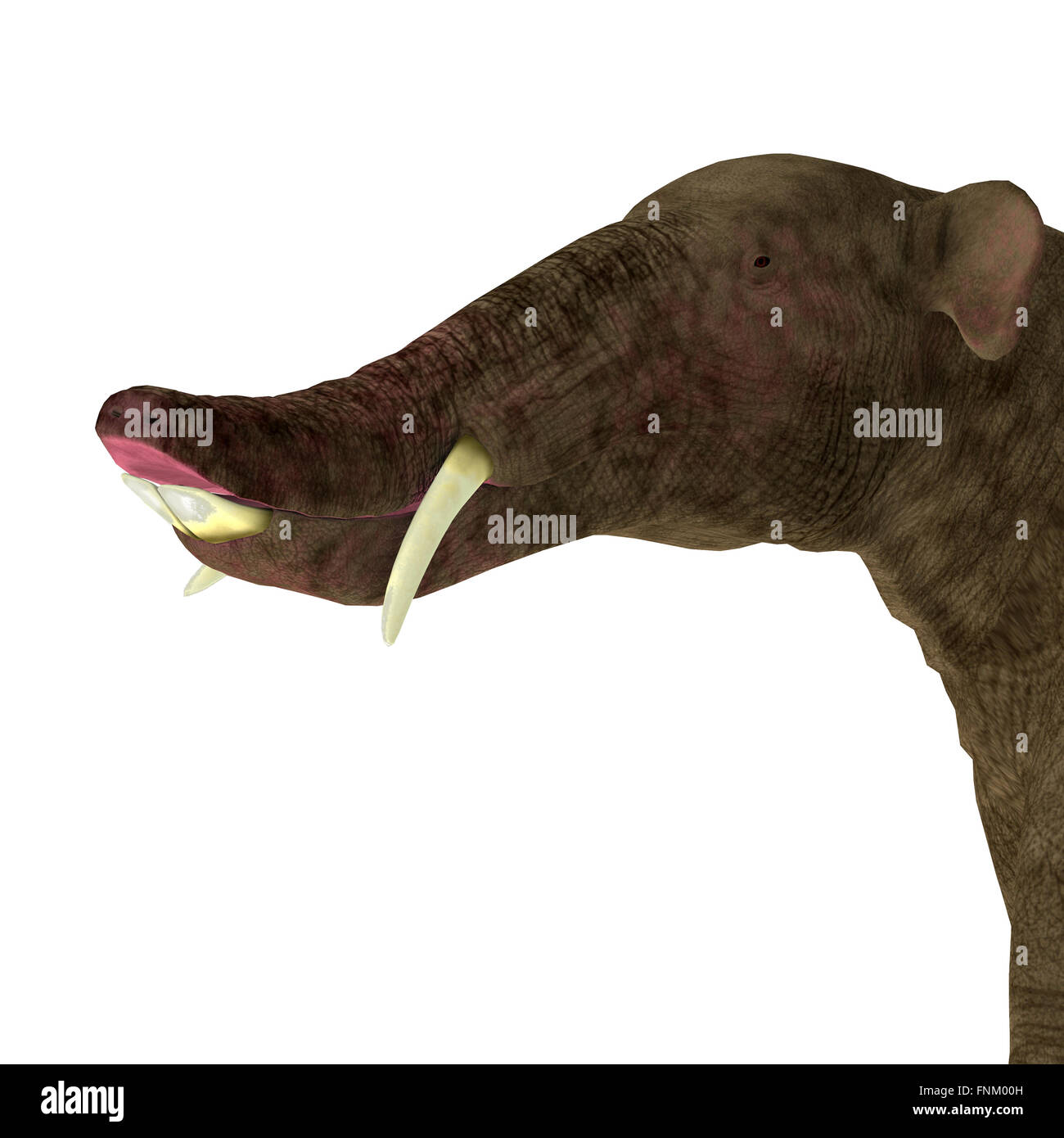 Platybelodon is an extinct herbivorous mammal related to the elephant that lived during the Miocene Period. Stock Photohttps://www.alamy.com/image-license-details/?v=1https://www.alamy.com/stock-photo-platybelodon-is-an-extinct-herbivorous-mammal-related-to-the-elephant-99398673.html
Platybelodon is an extinct herbivorous mammal related to the elephant that lived during the Miocene Period. Stock Photohttps://www.alamy.com/image-license-details/?v=1https://www.alamy.com/stock-photo-platybelodon-is-an-extinct-herbivorous-mammal-related-to-the-elephant-99398673.htmlRFFNM00H–Platybelodon is an extinct herbivorous mammal related to the elephant that lived during the Miocene Period.